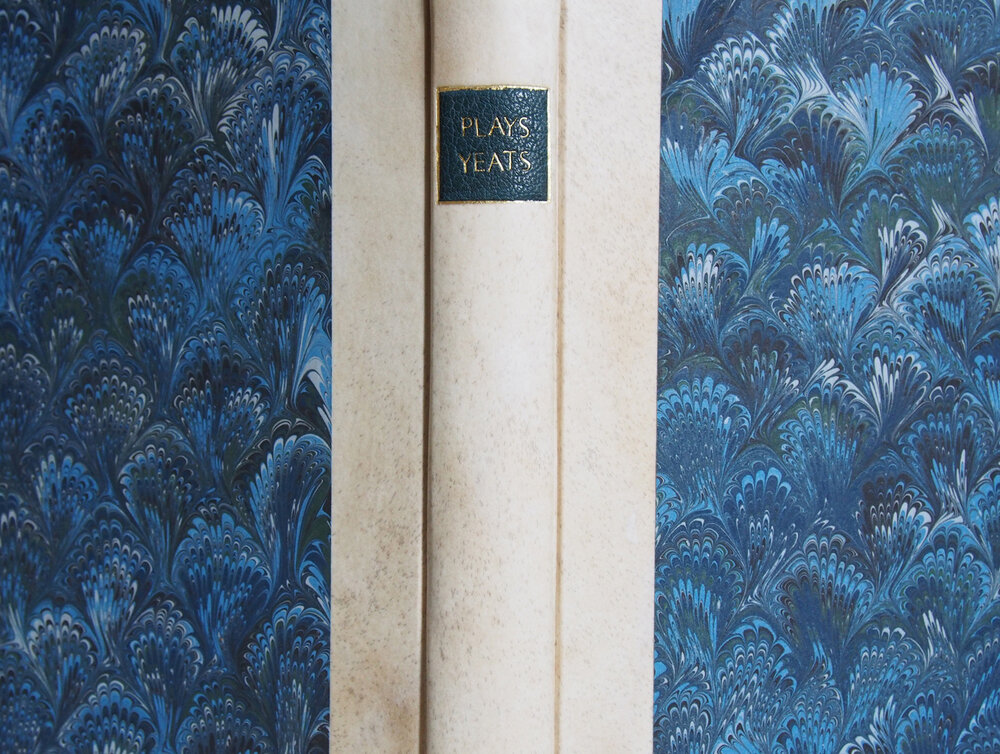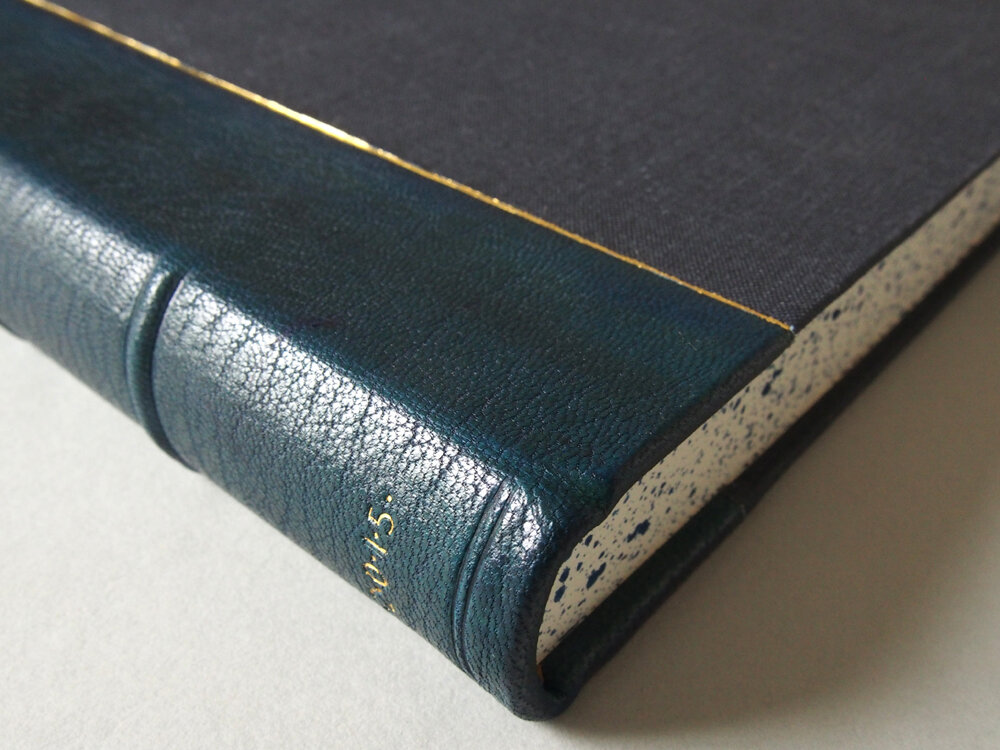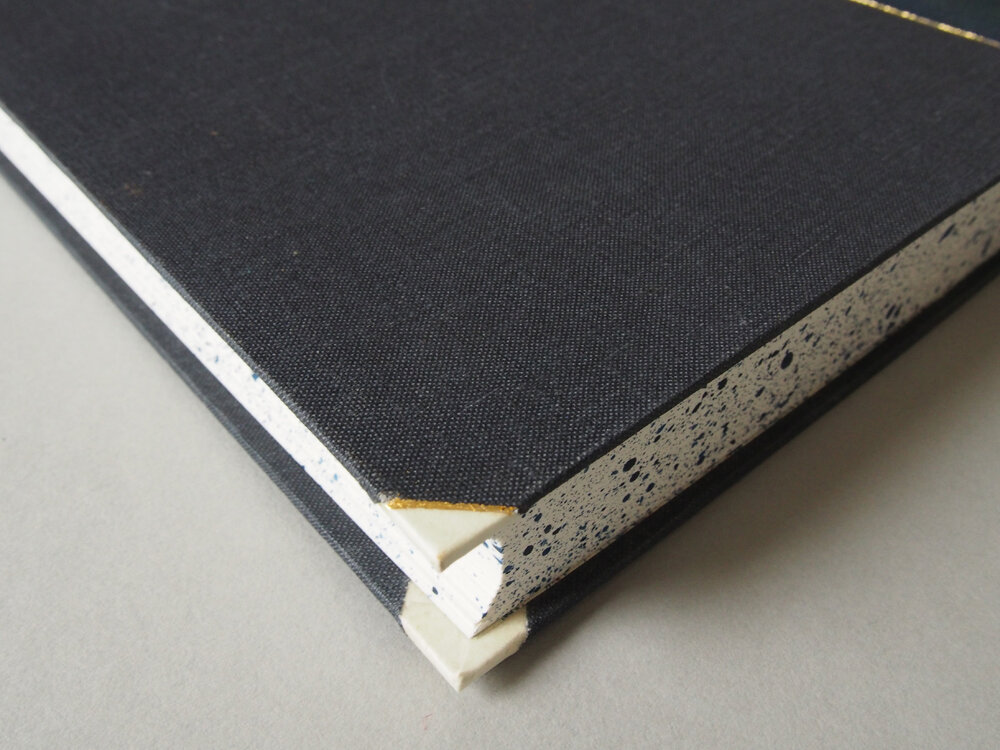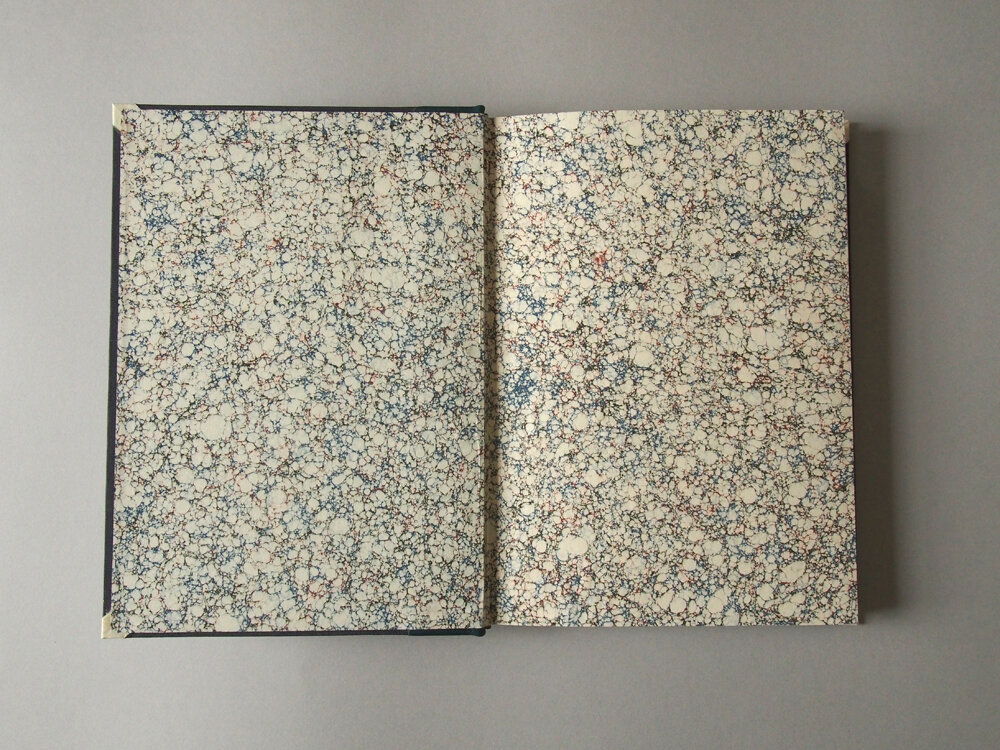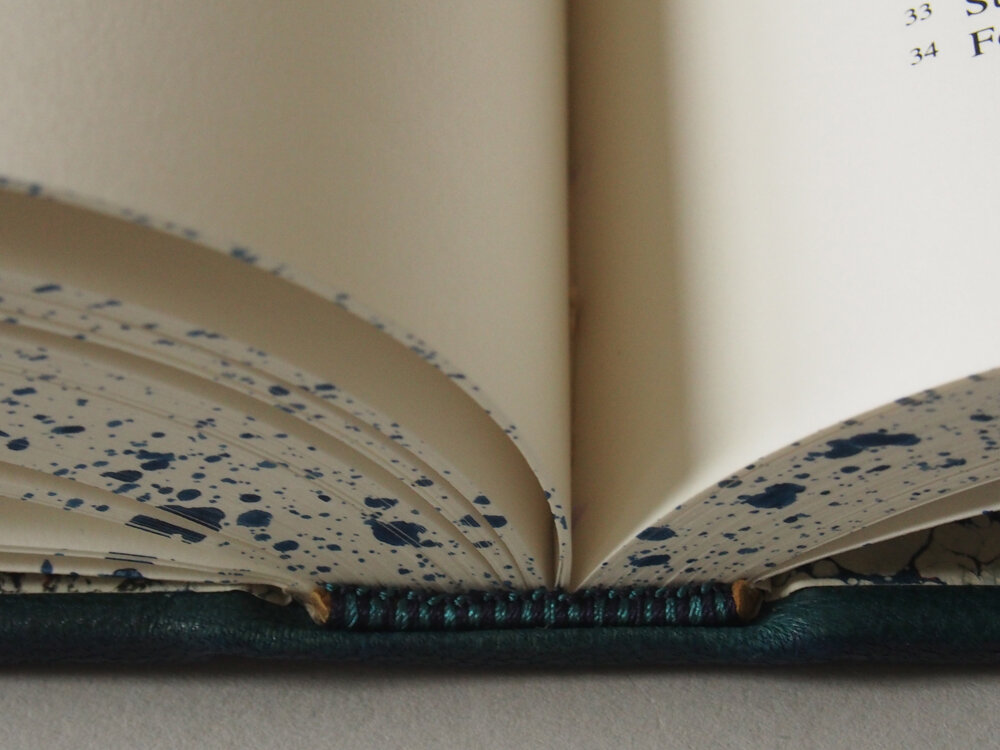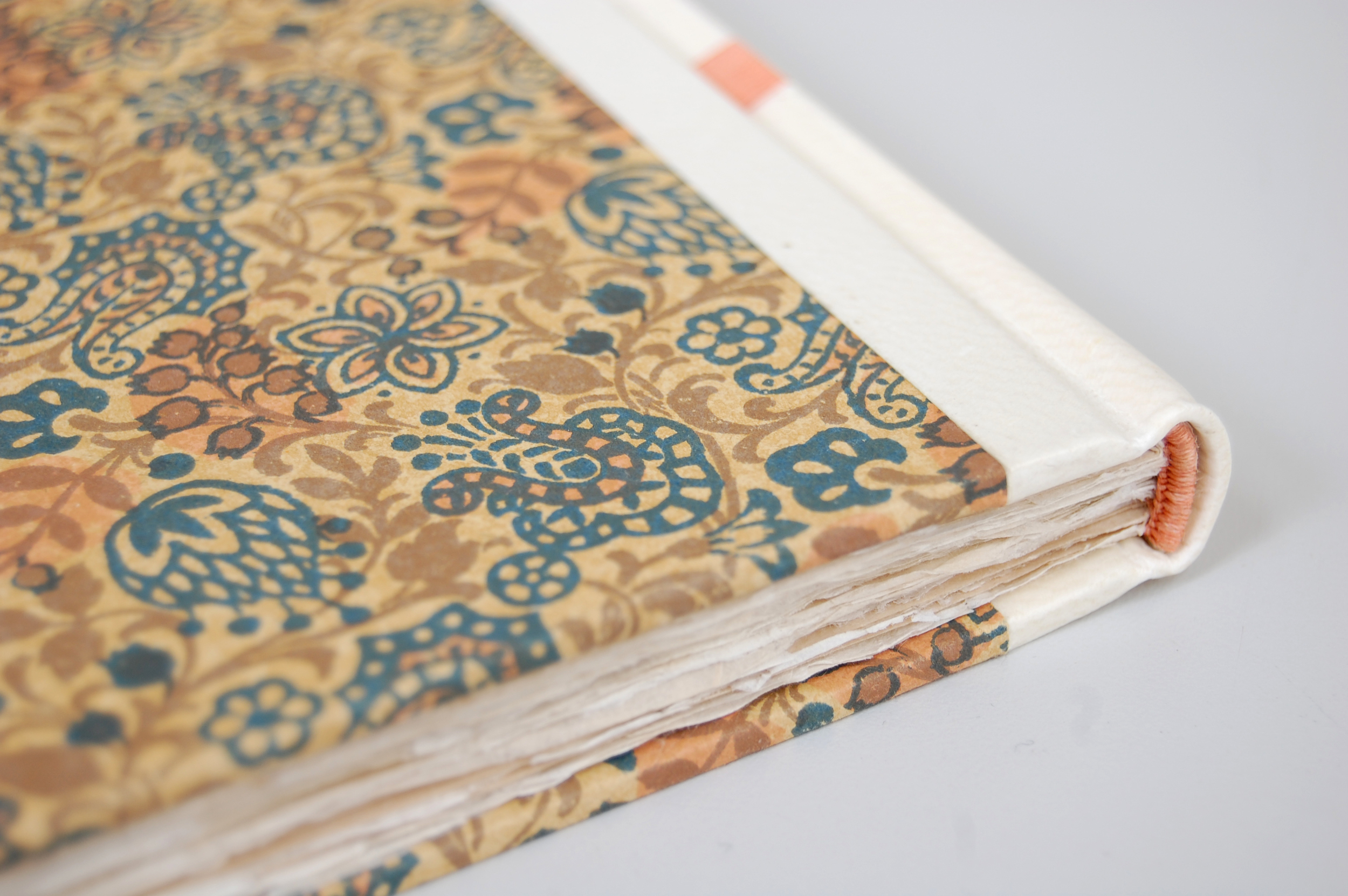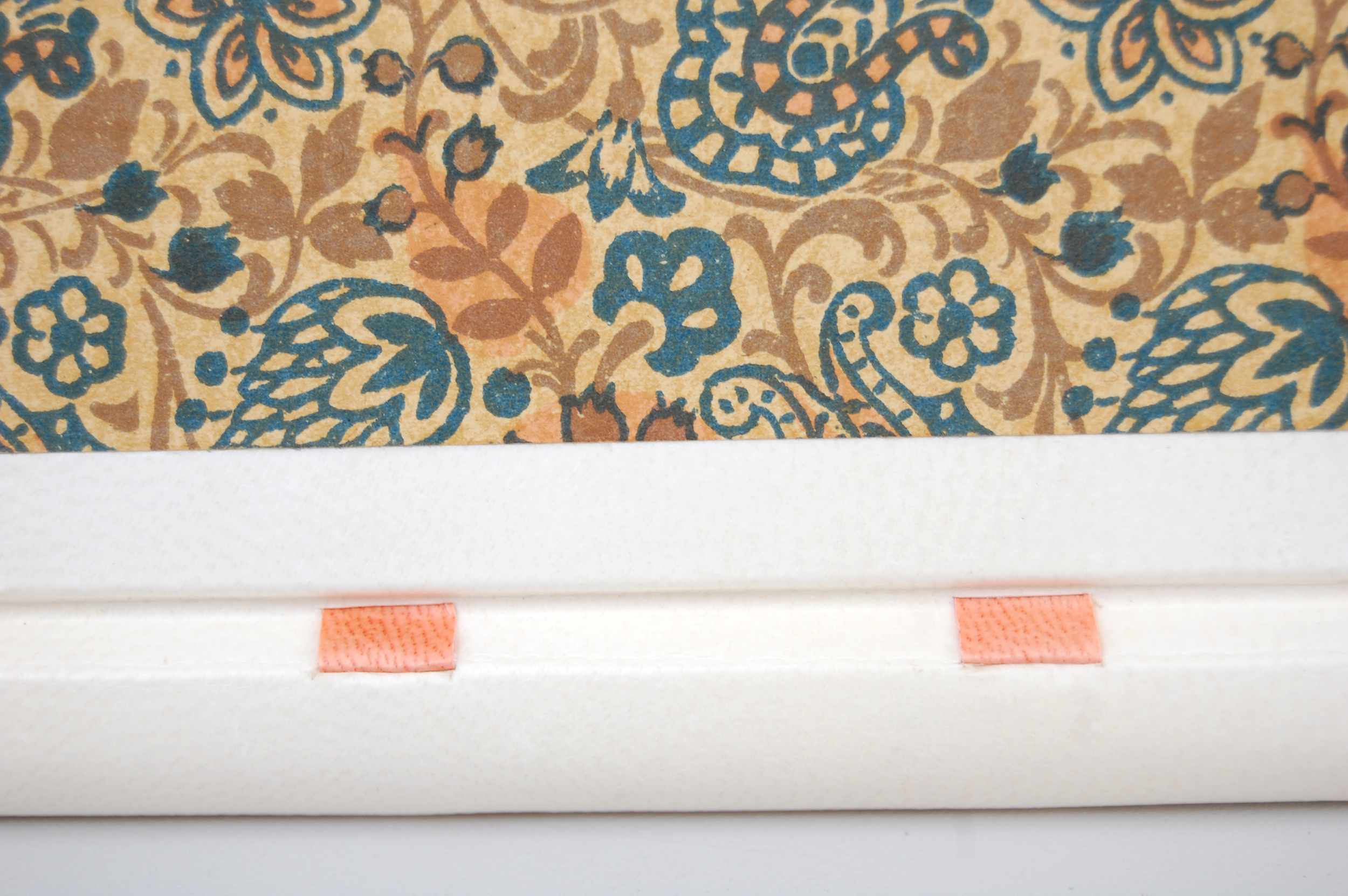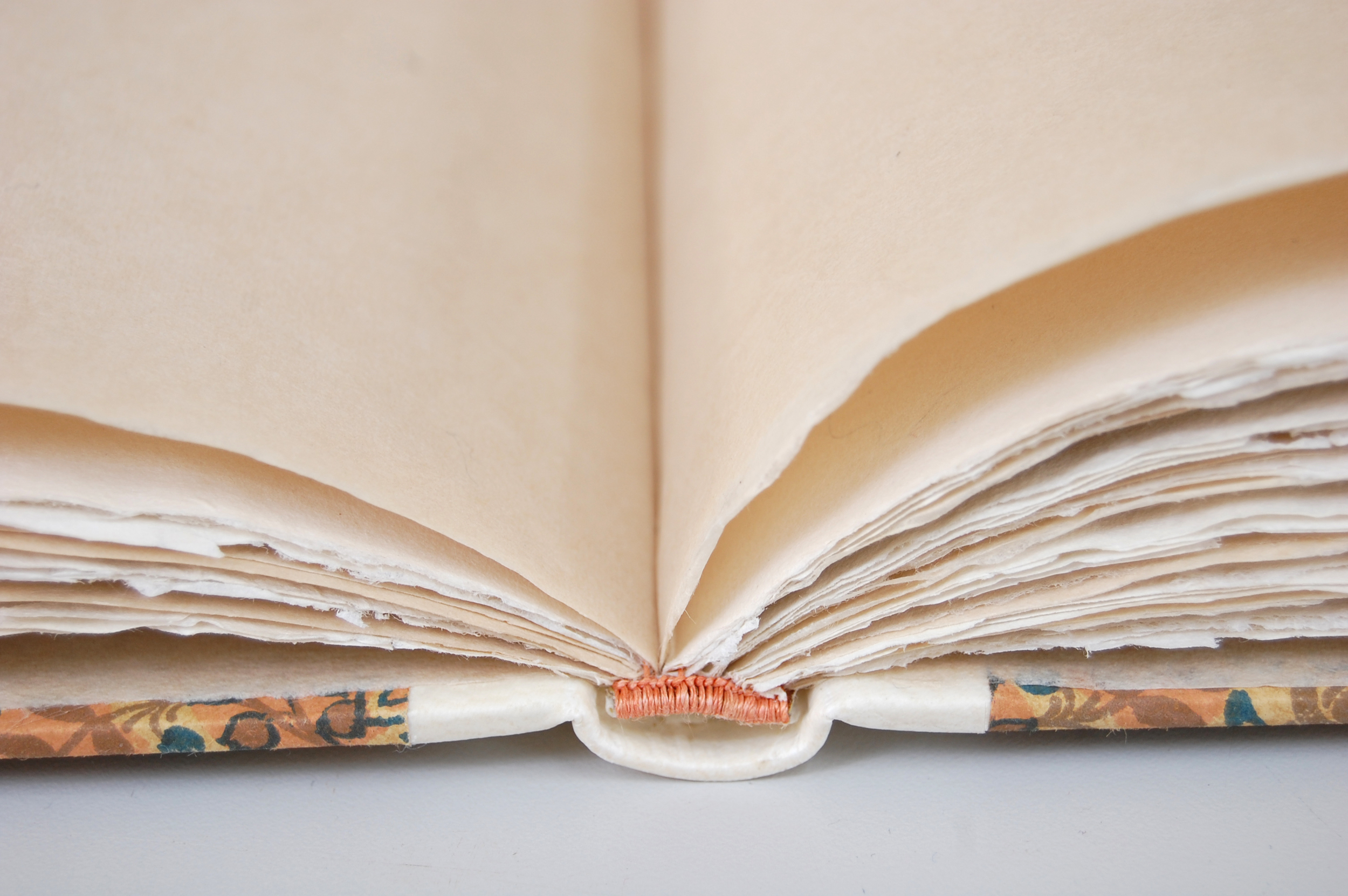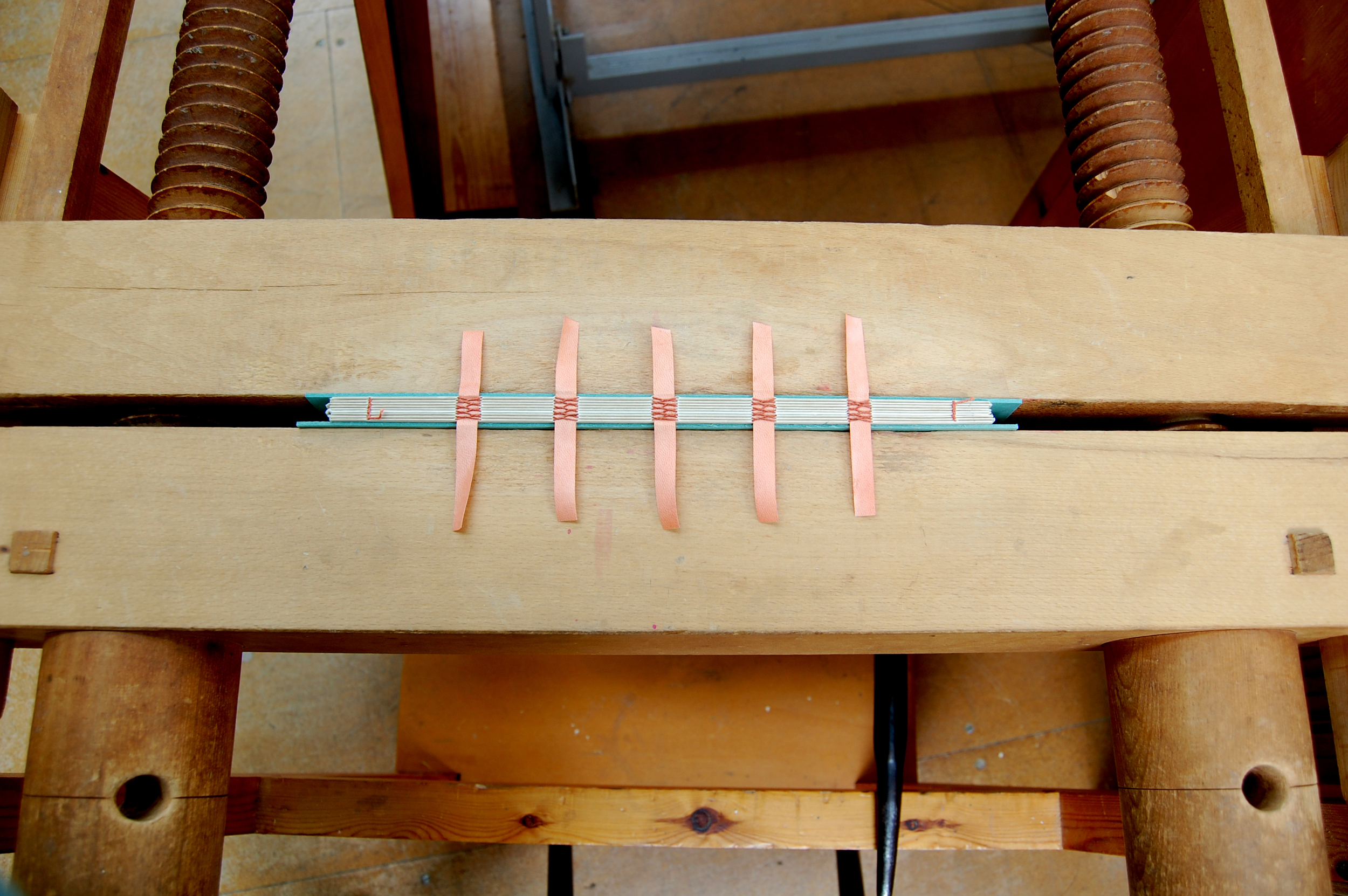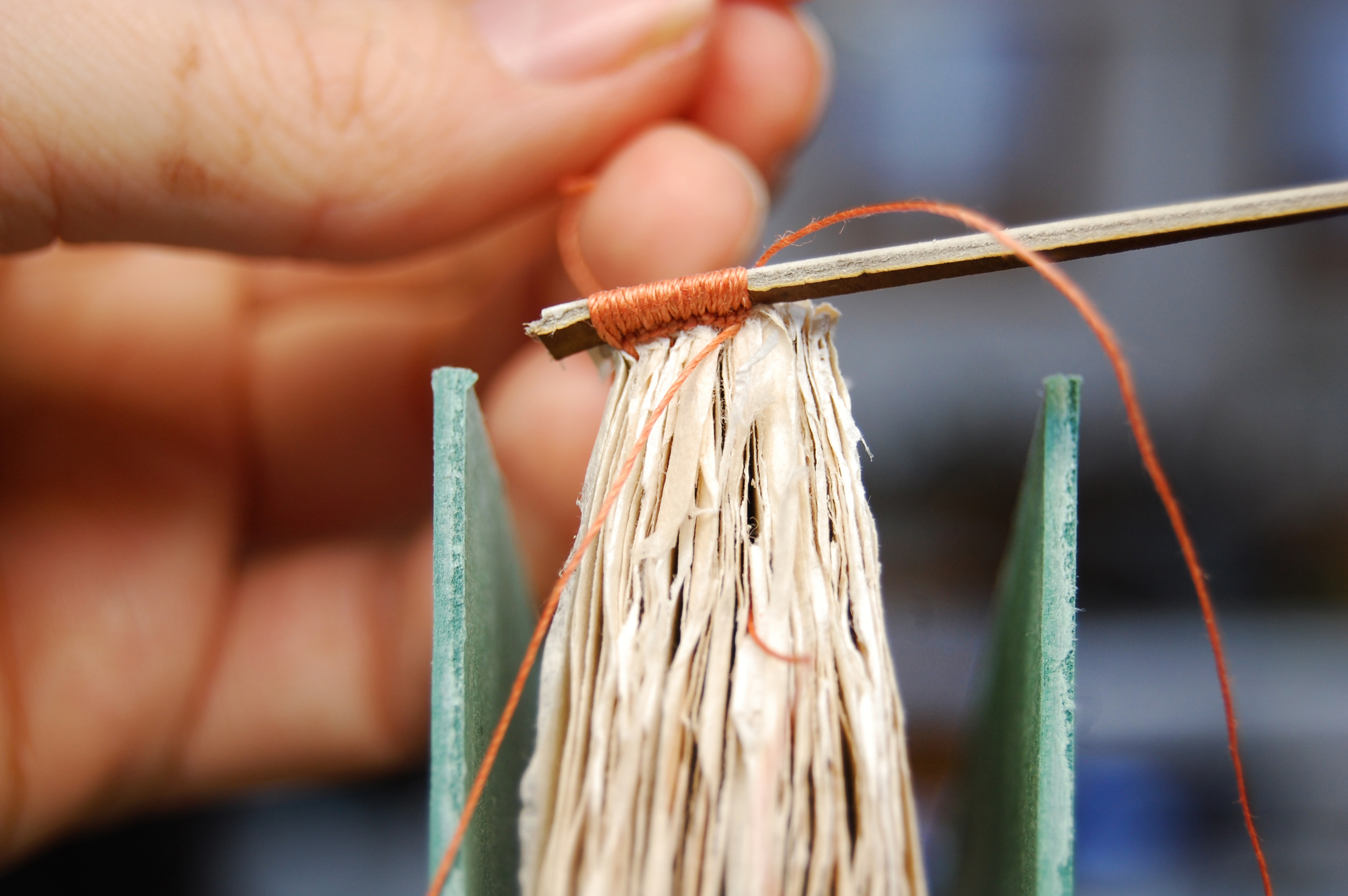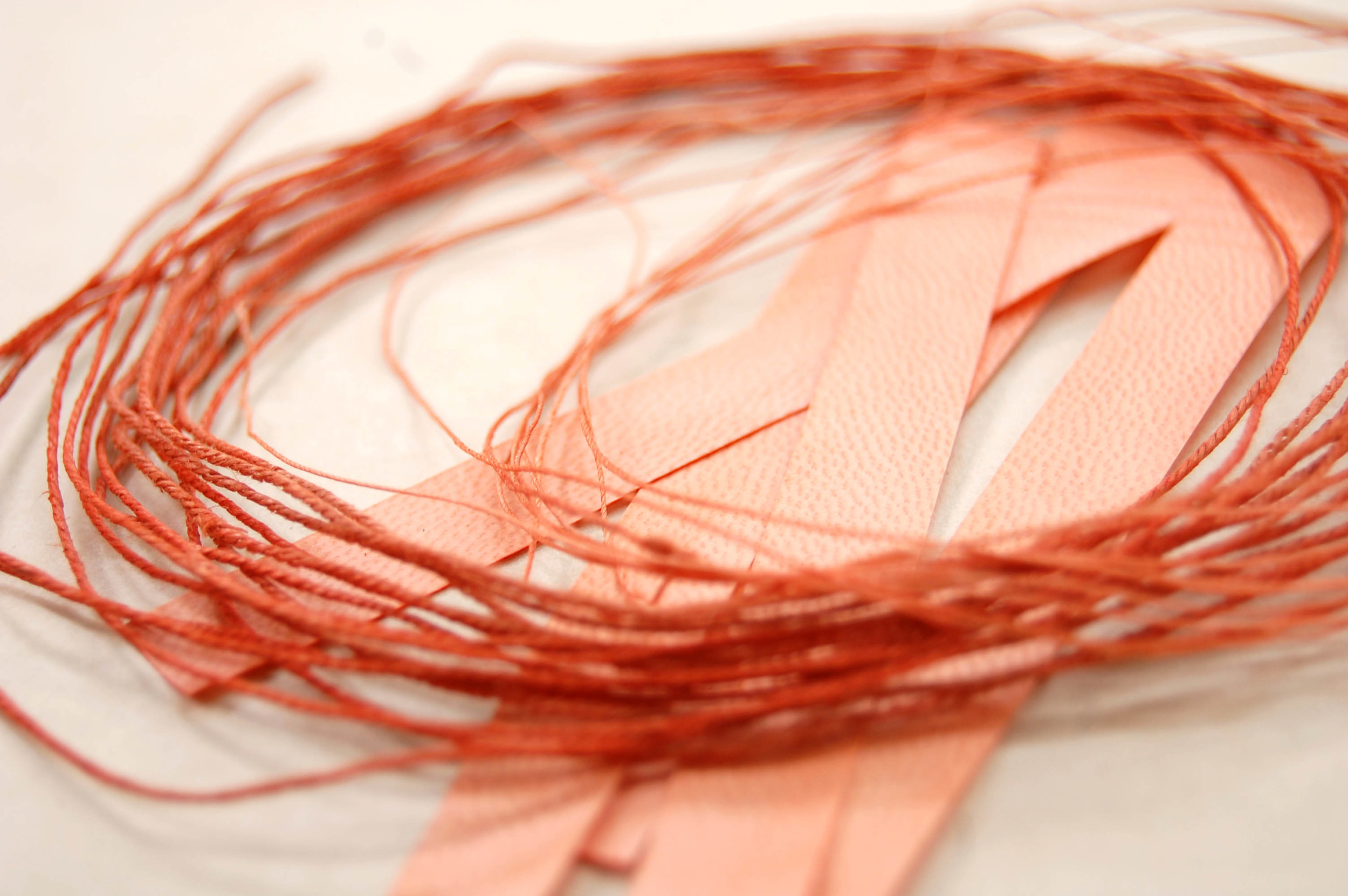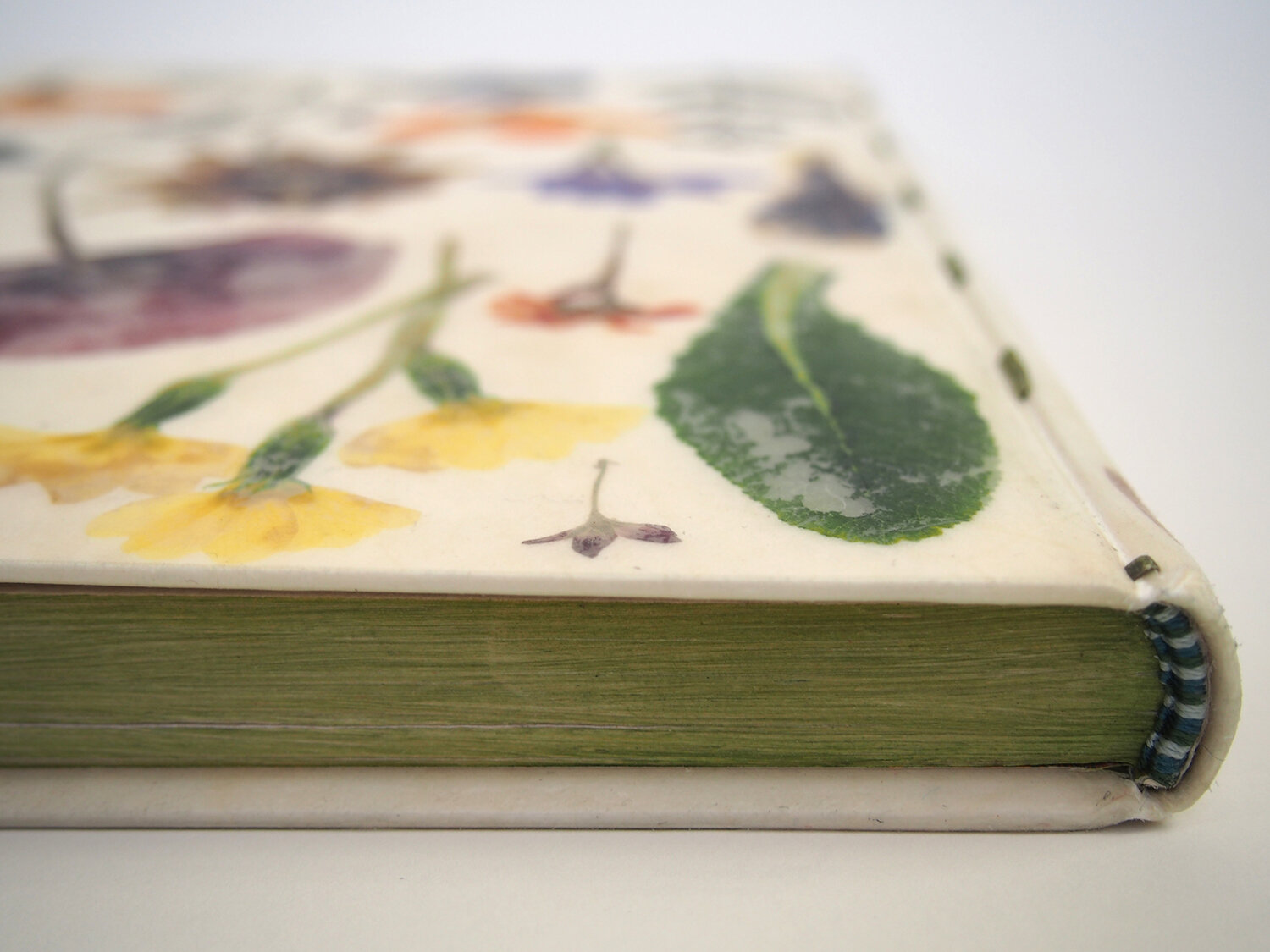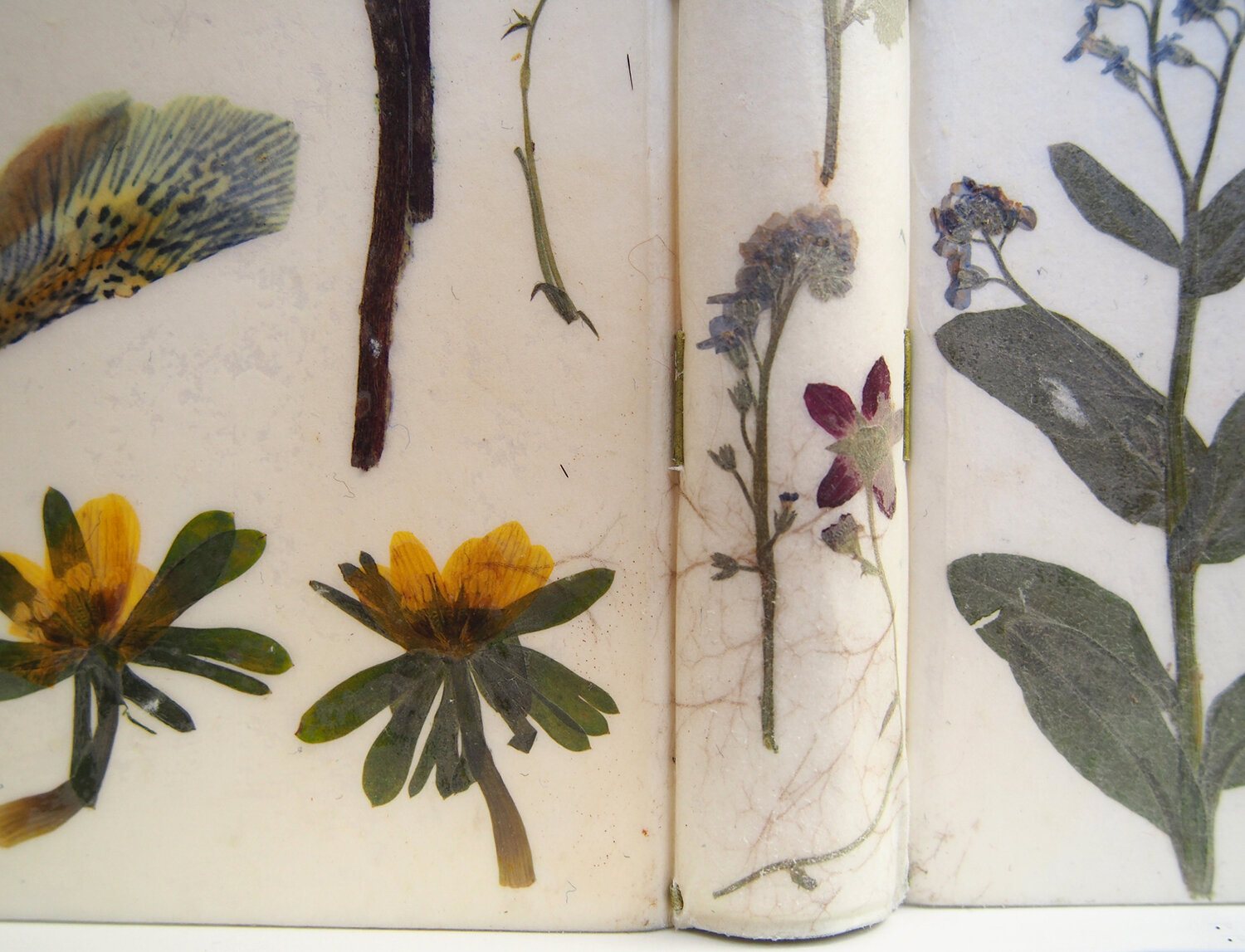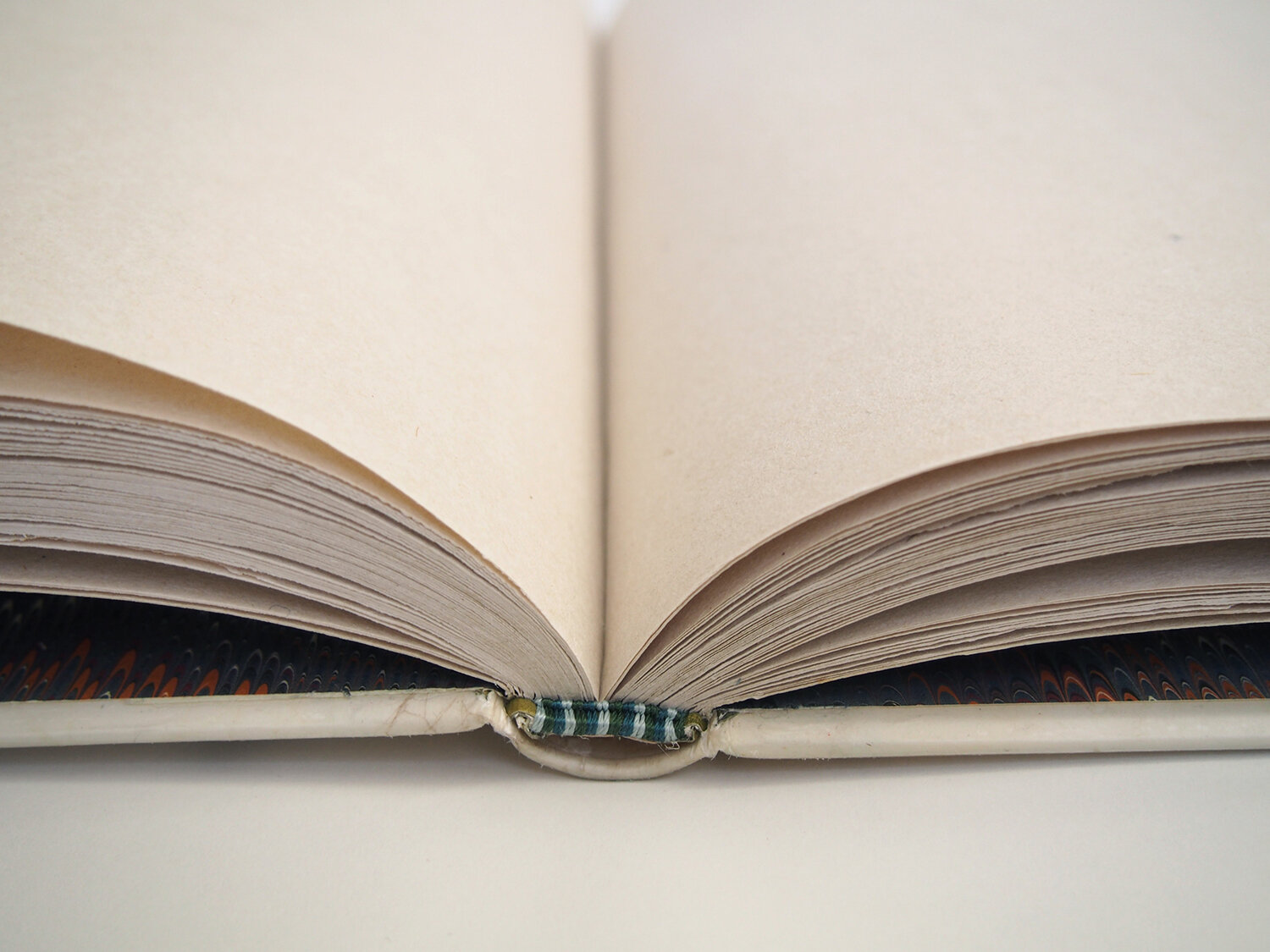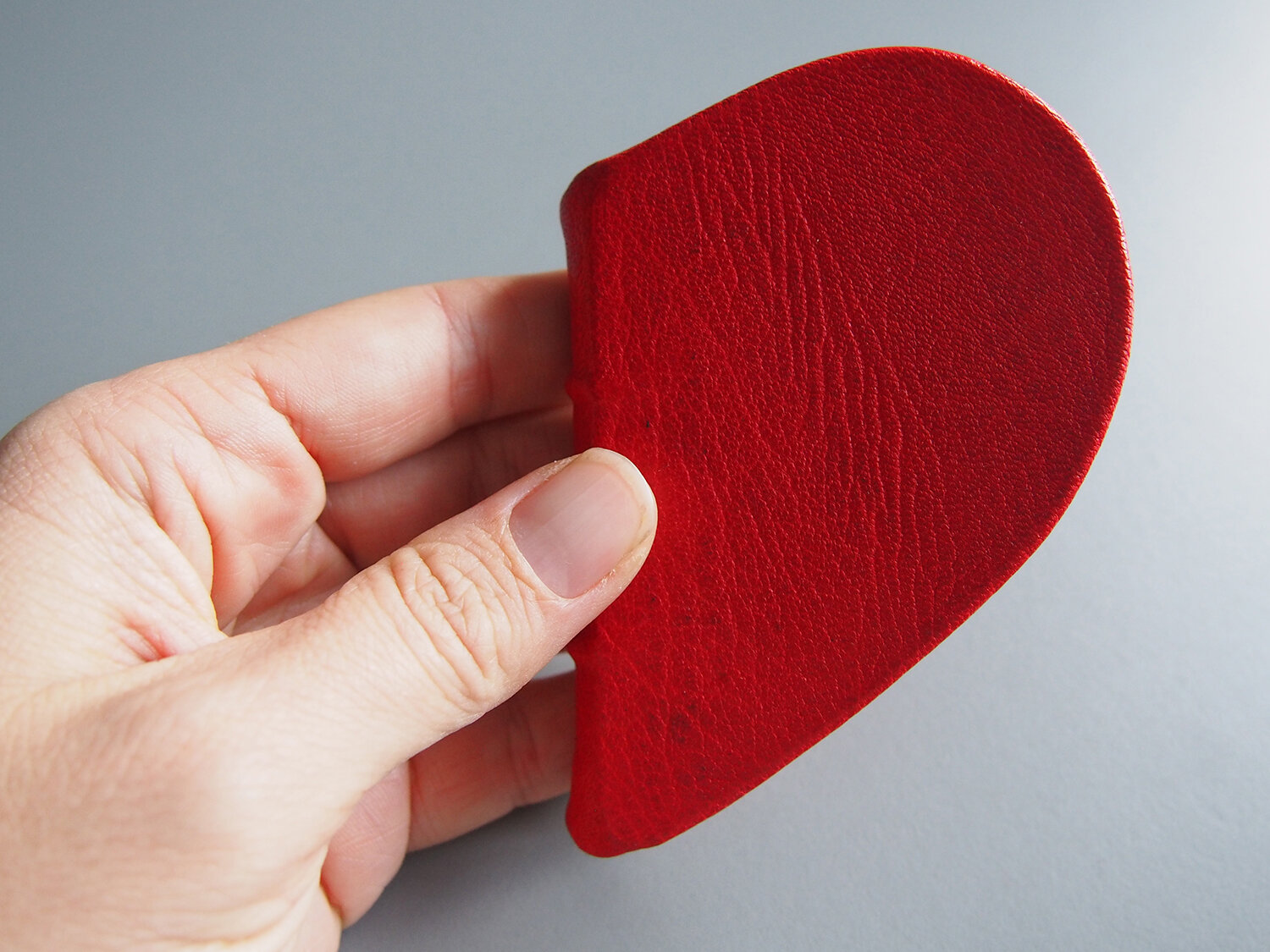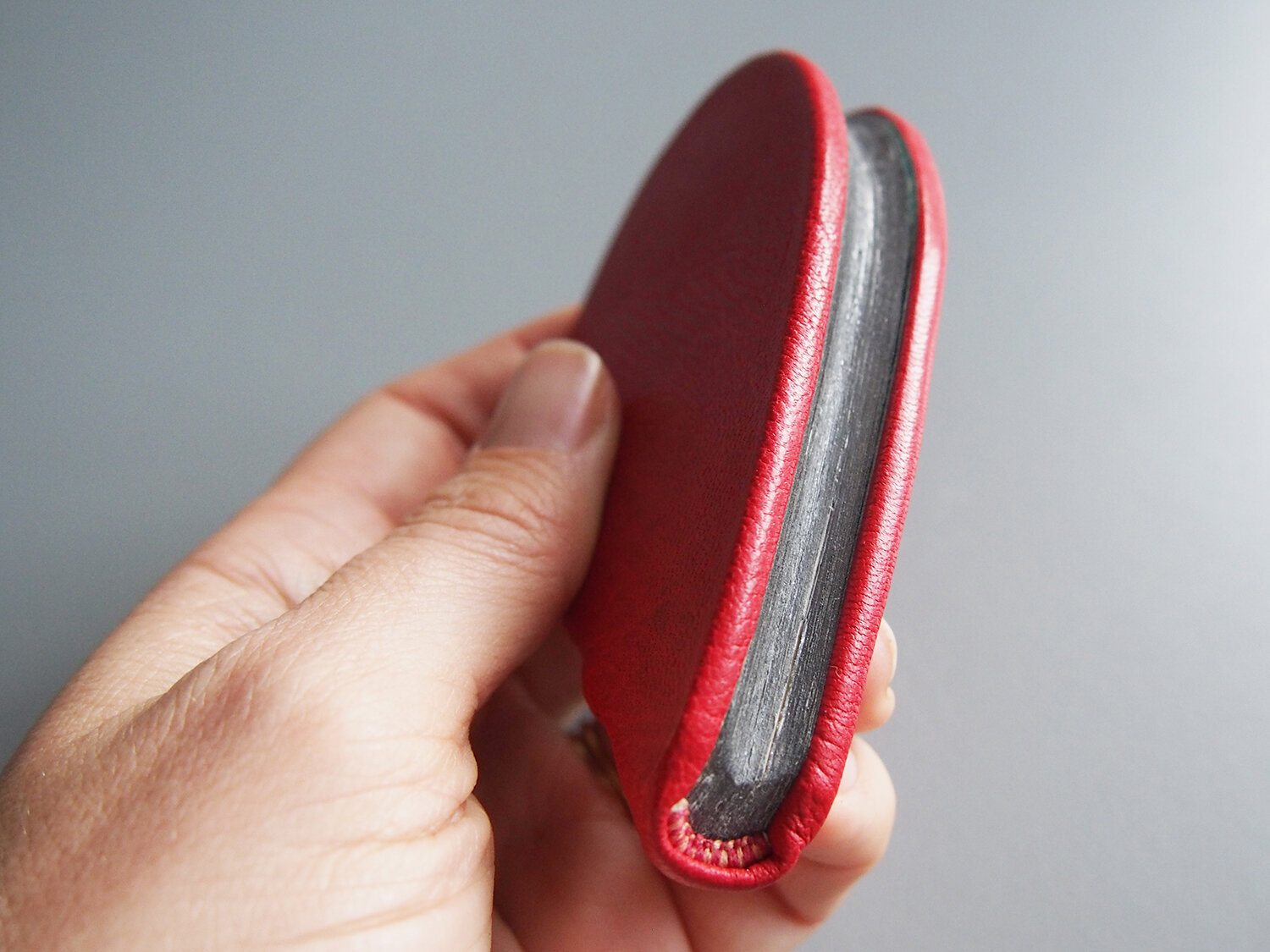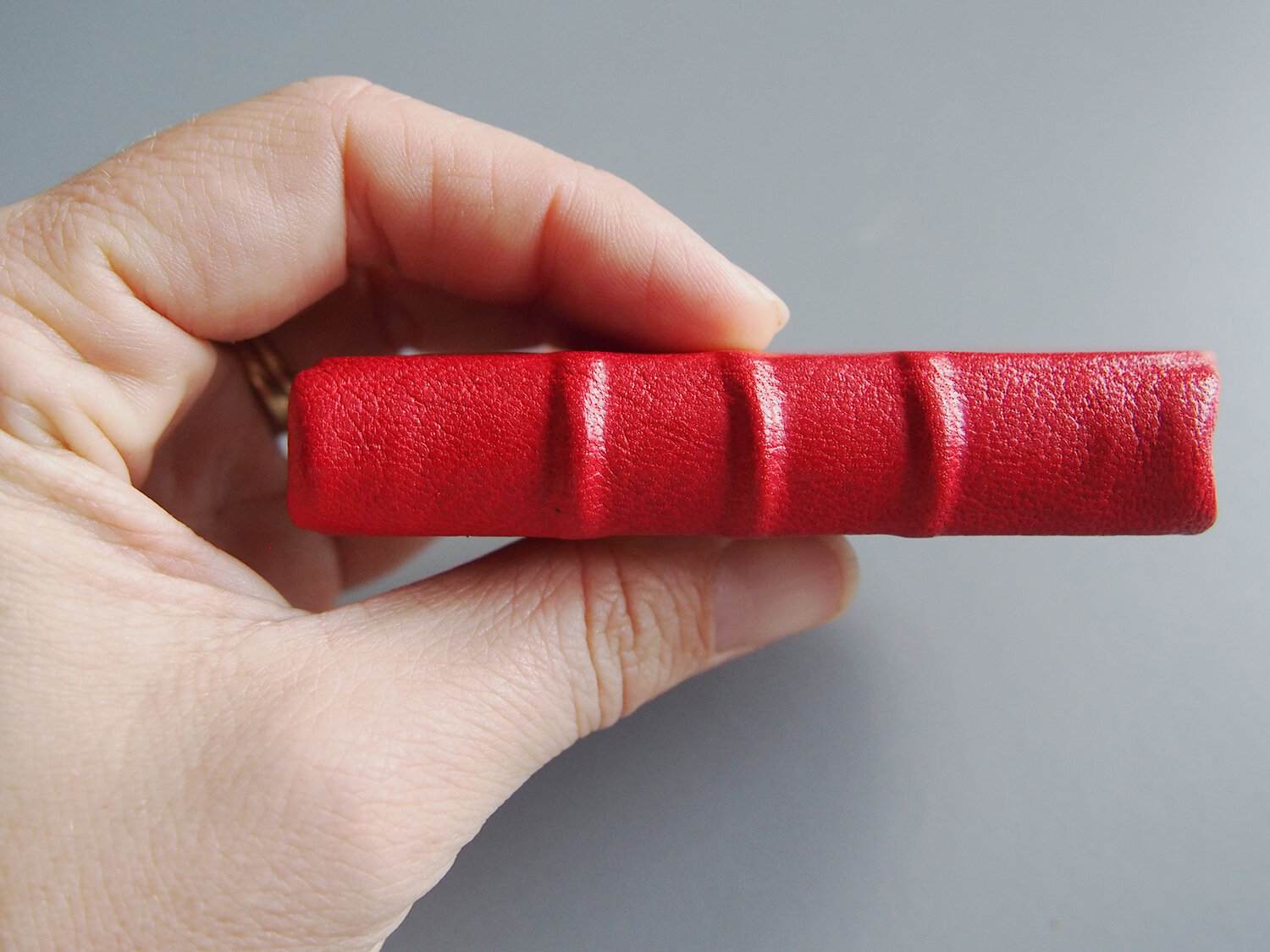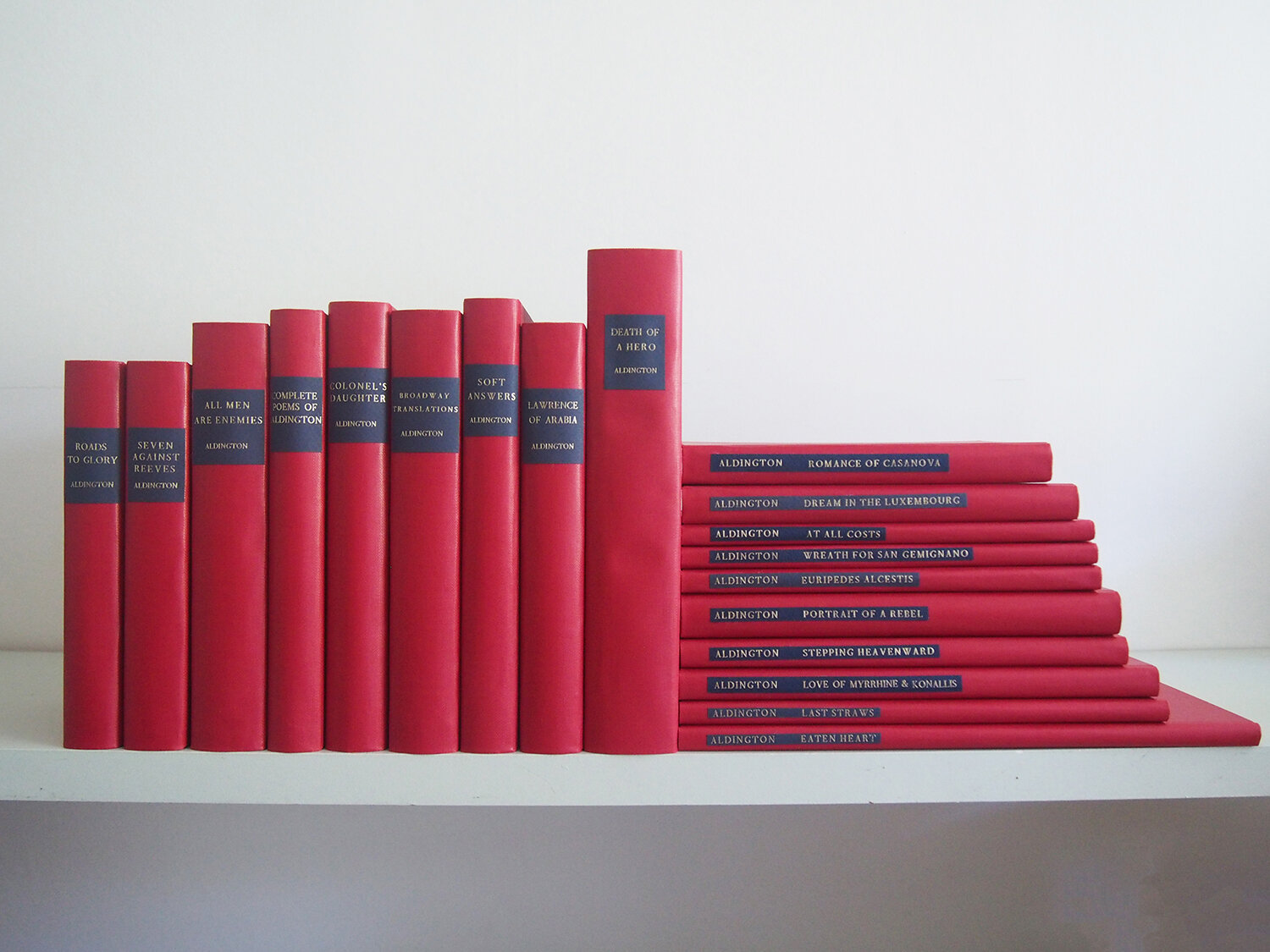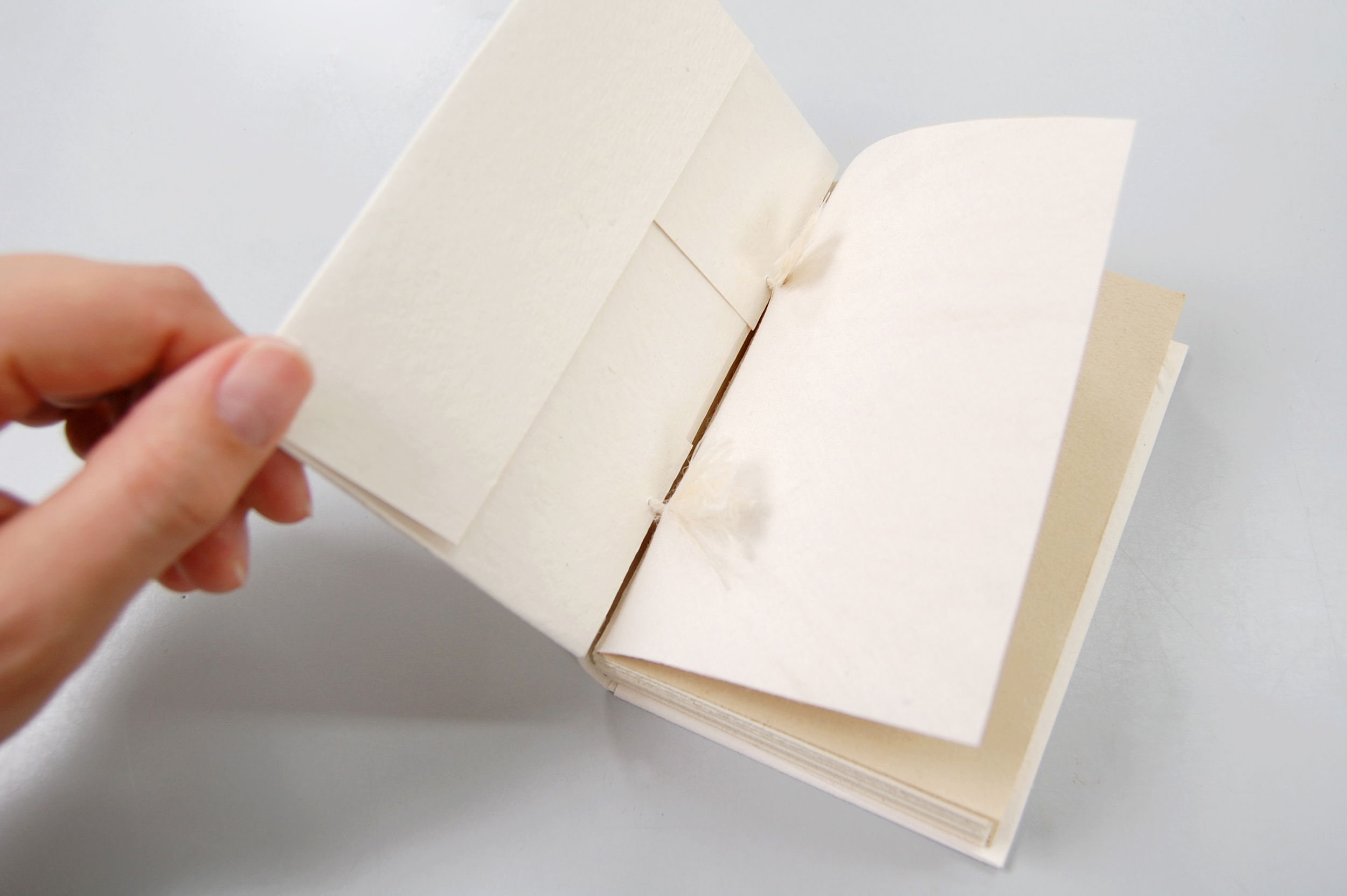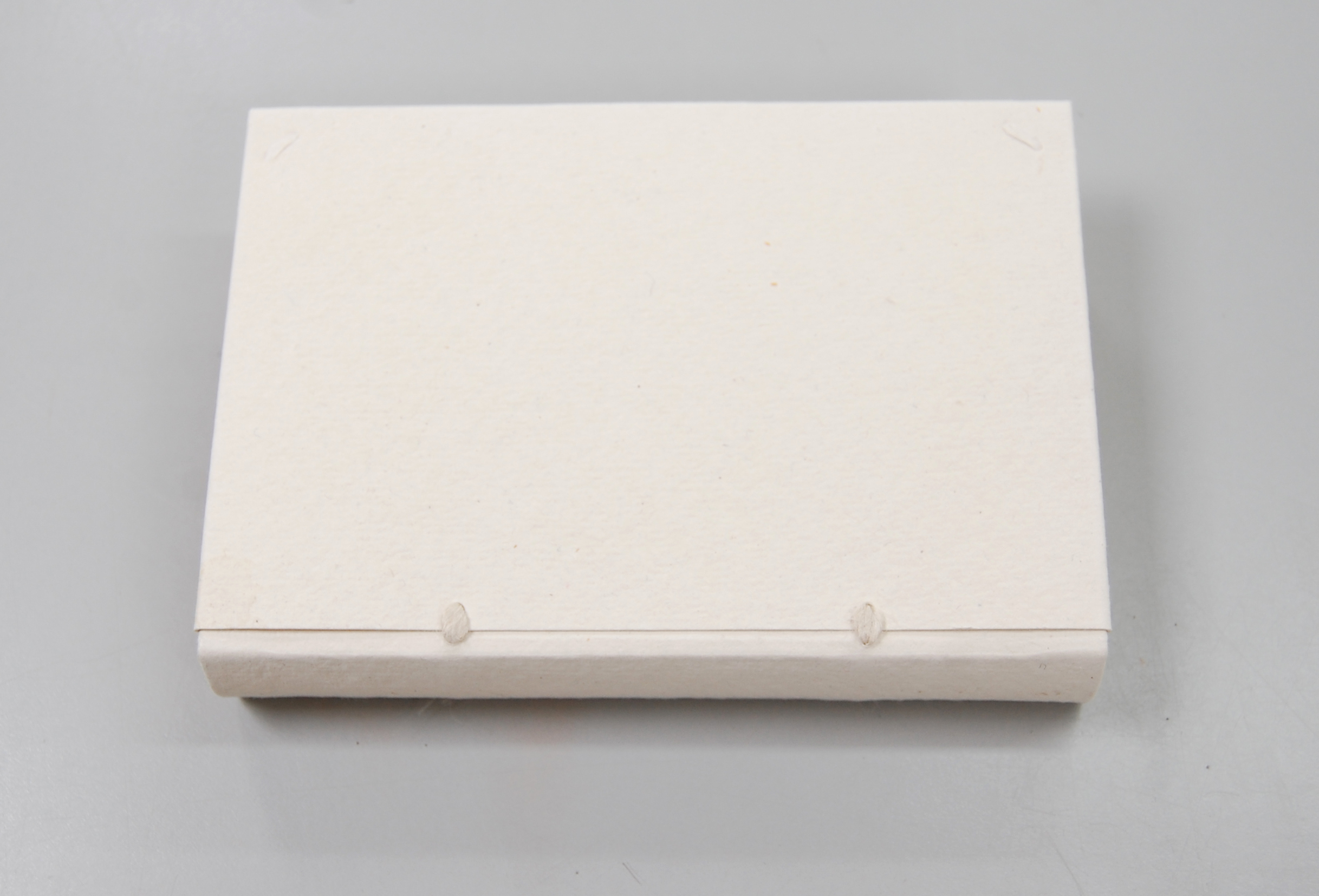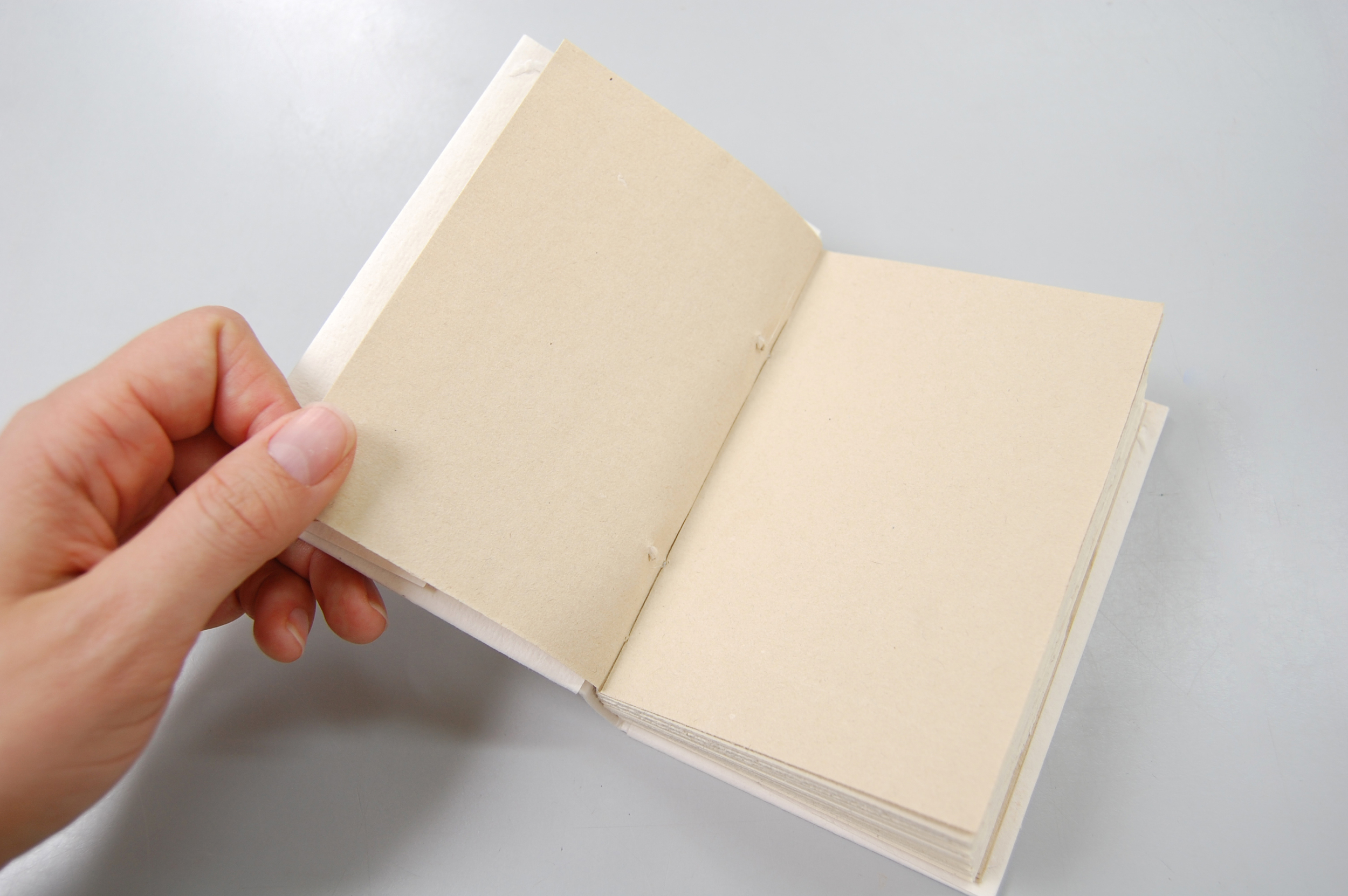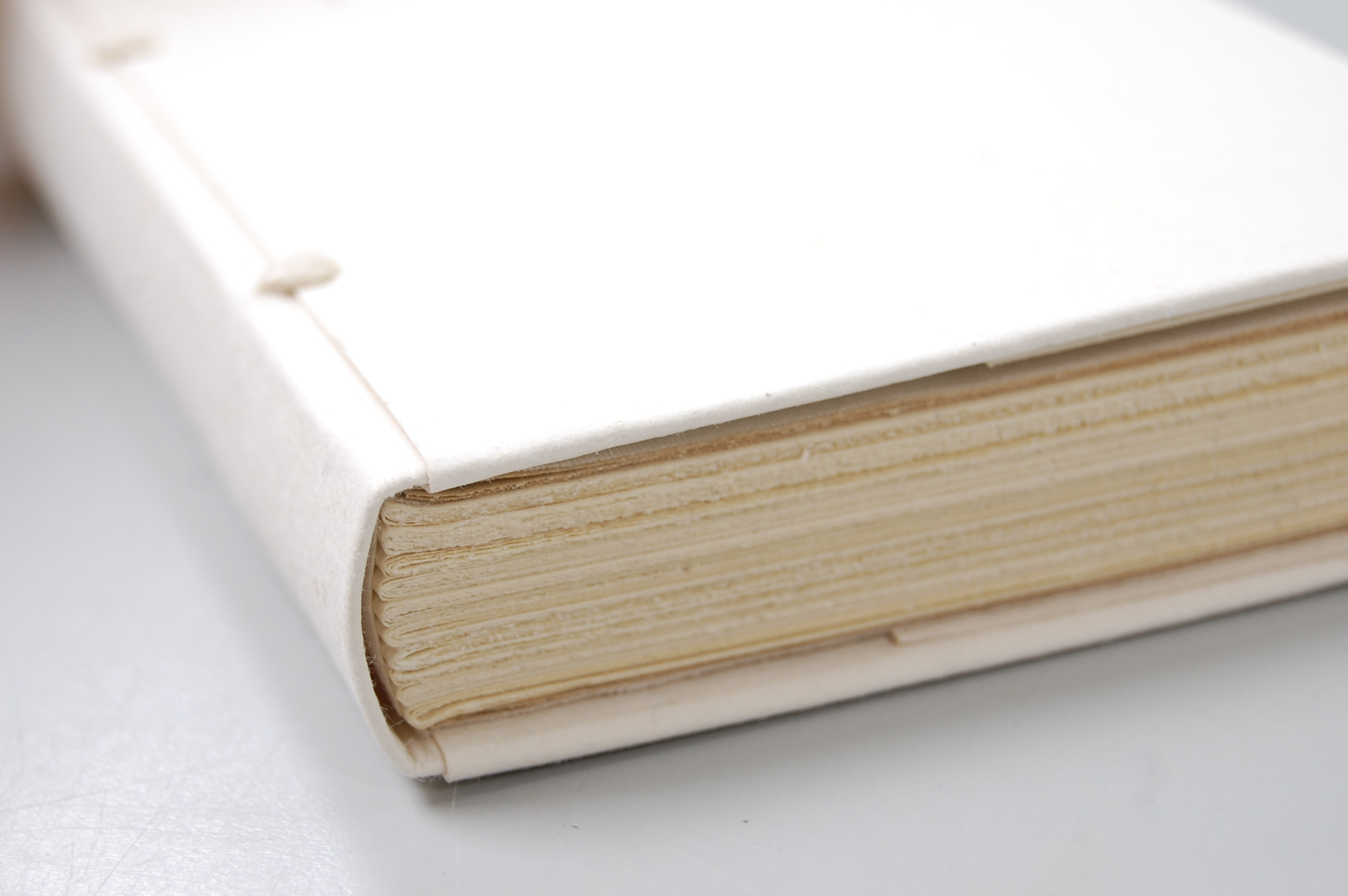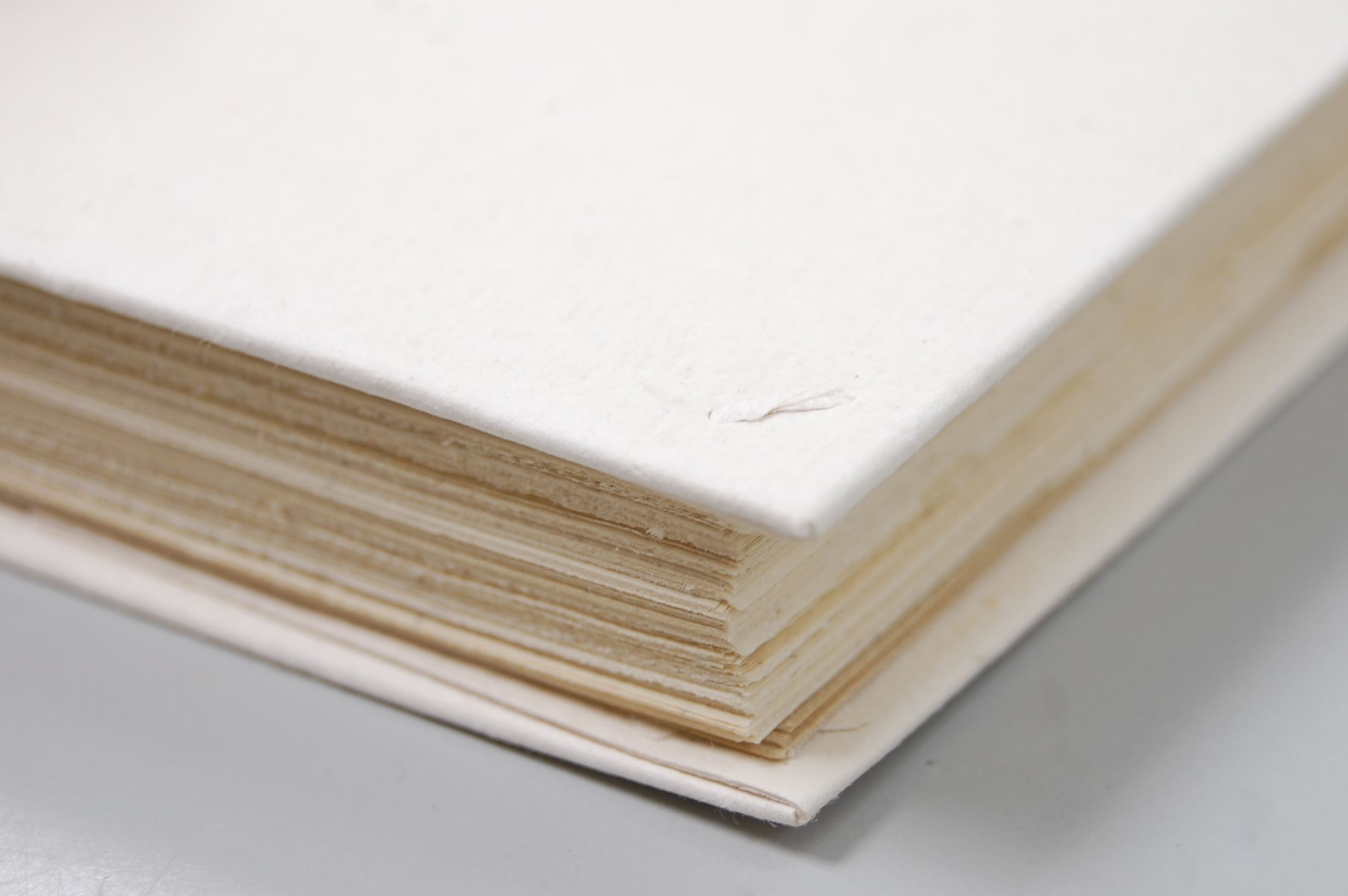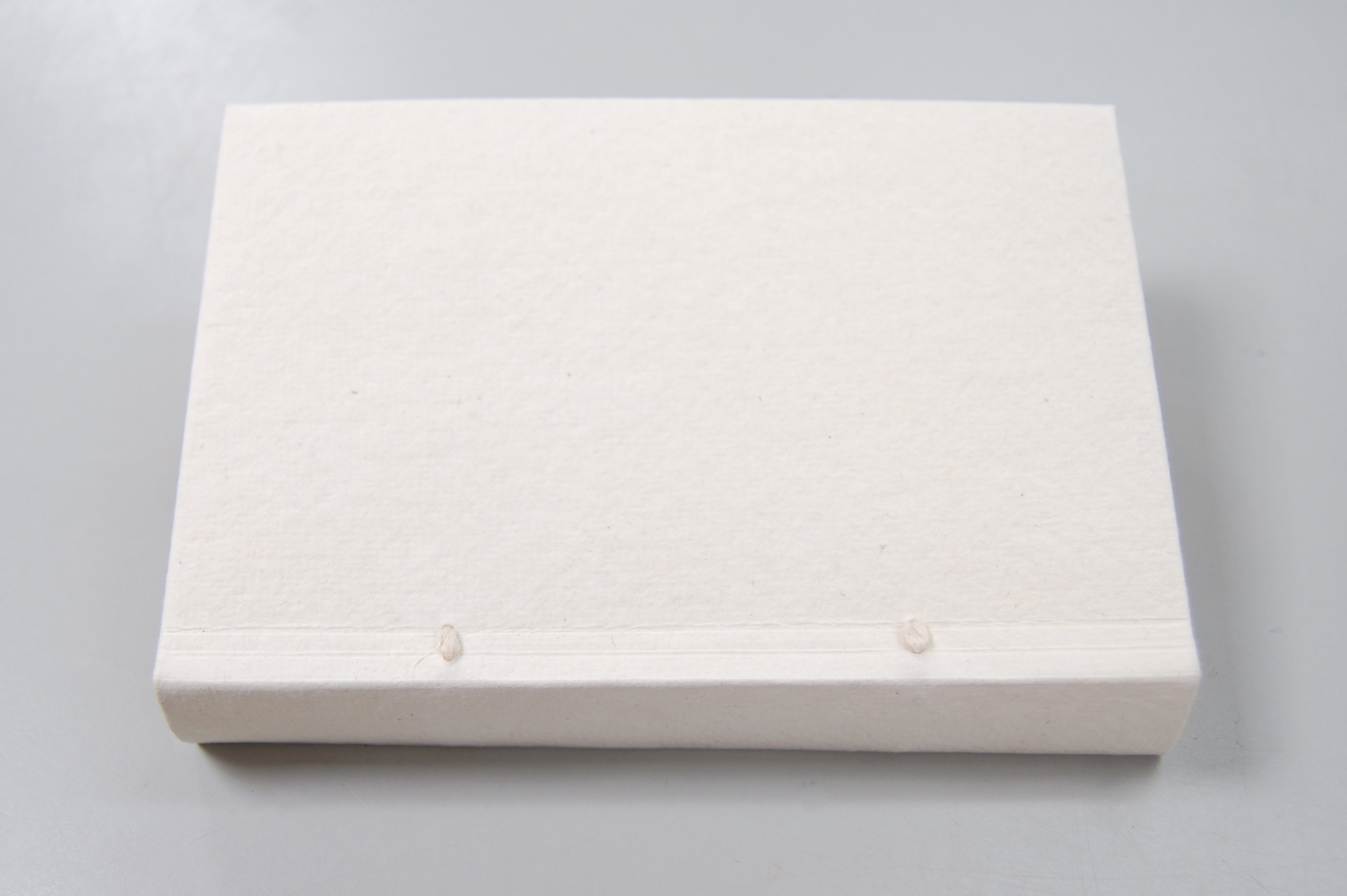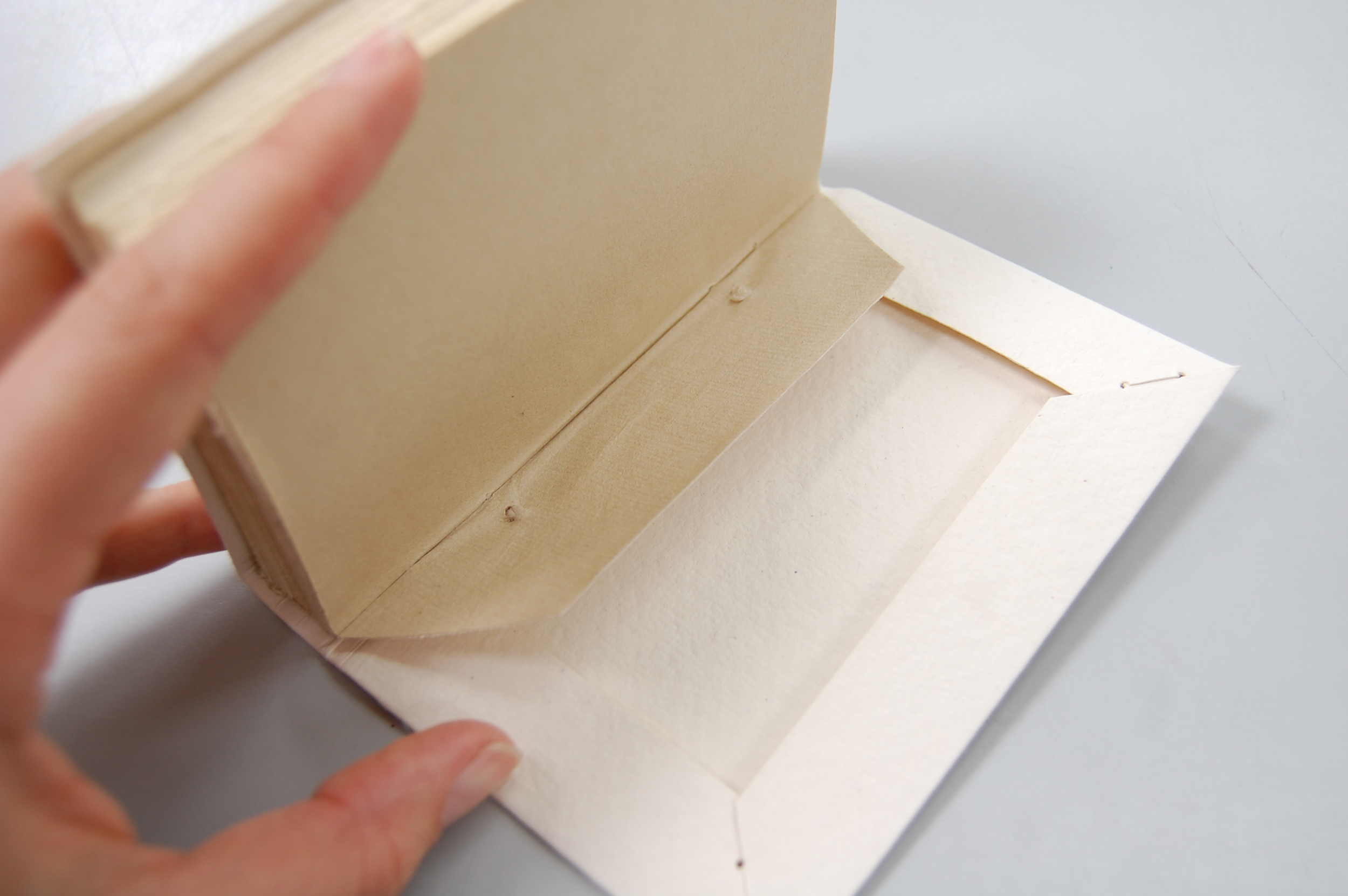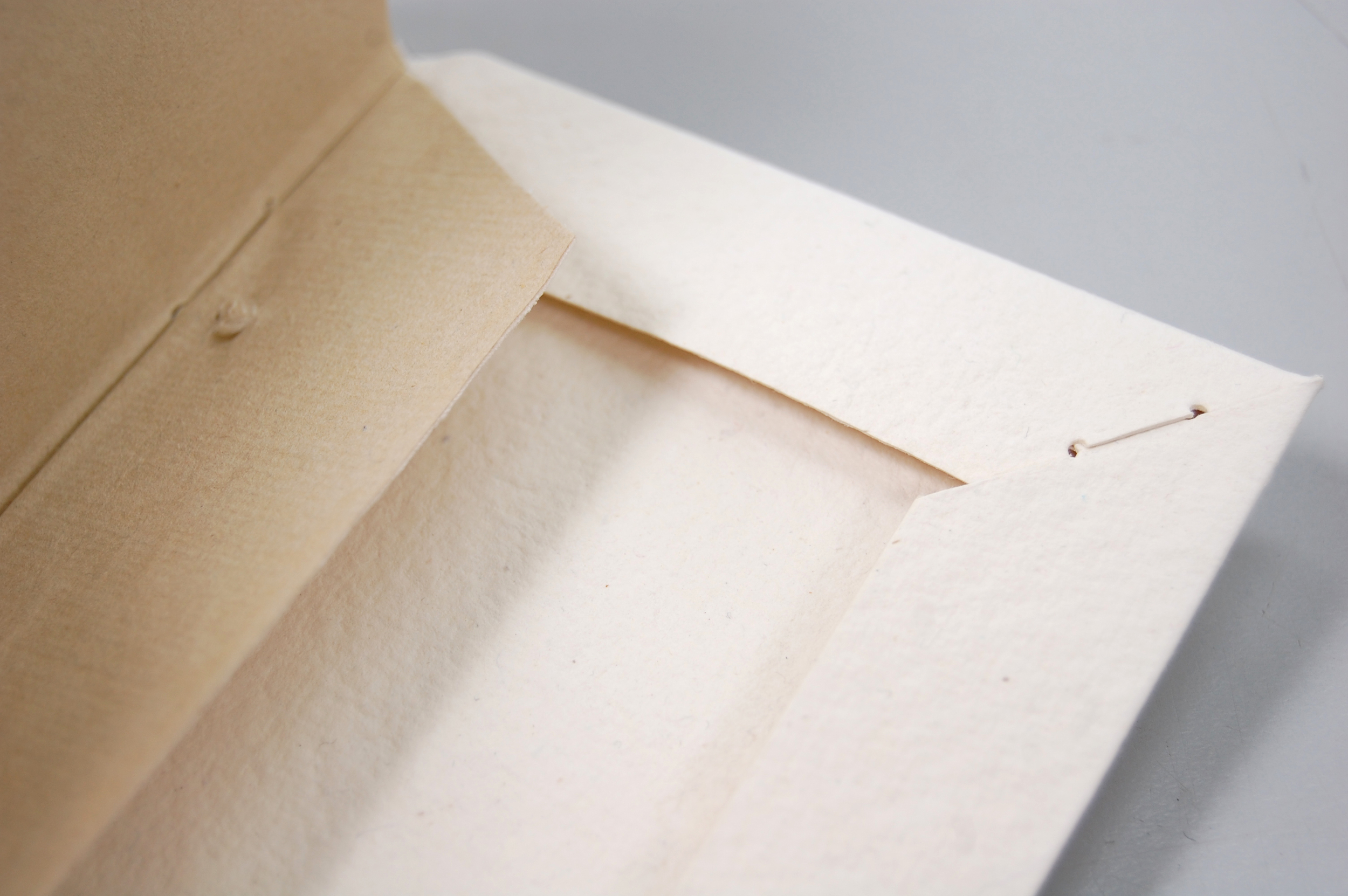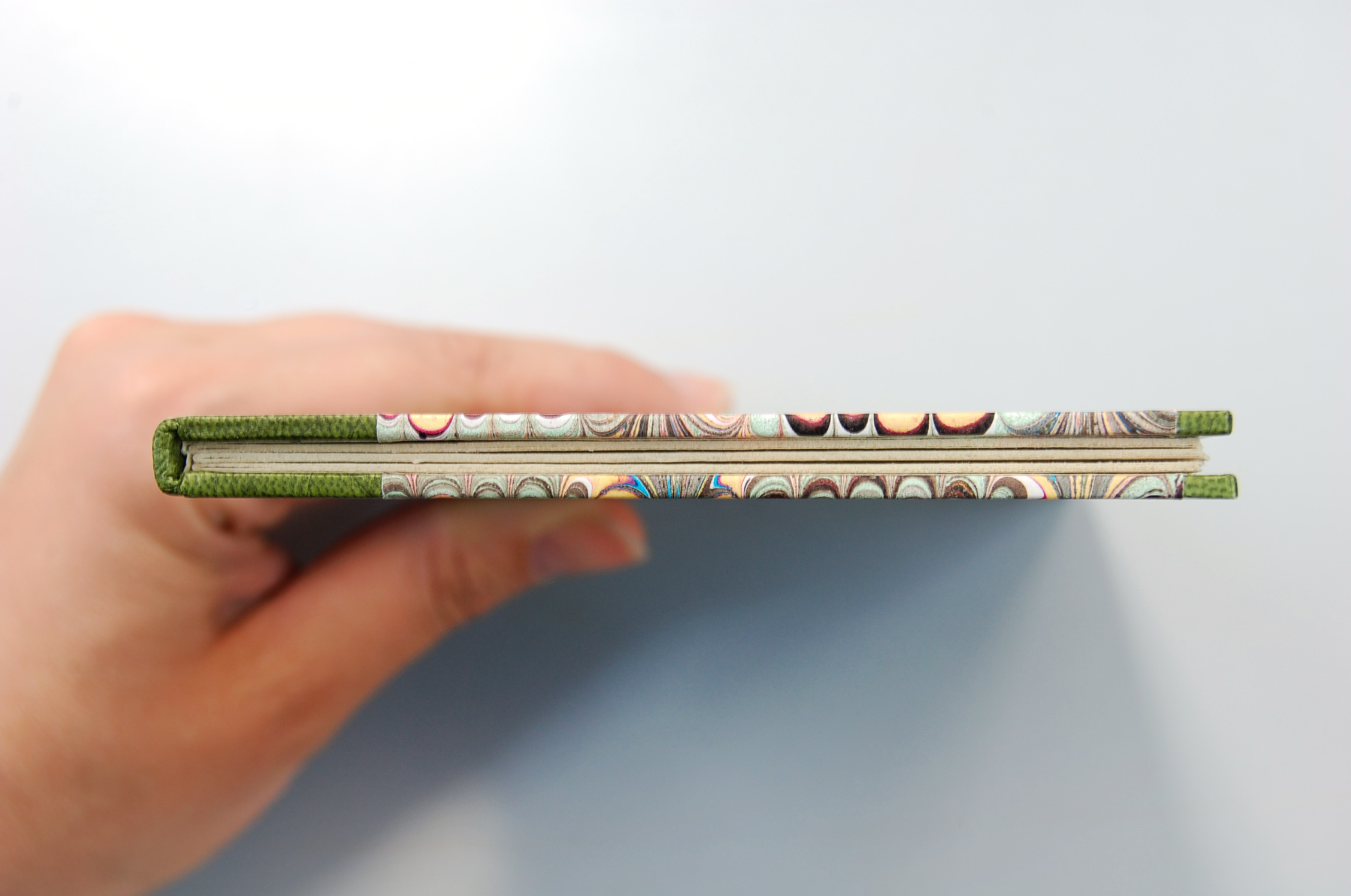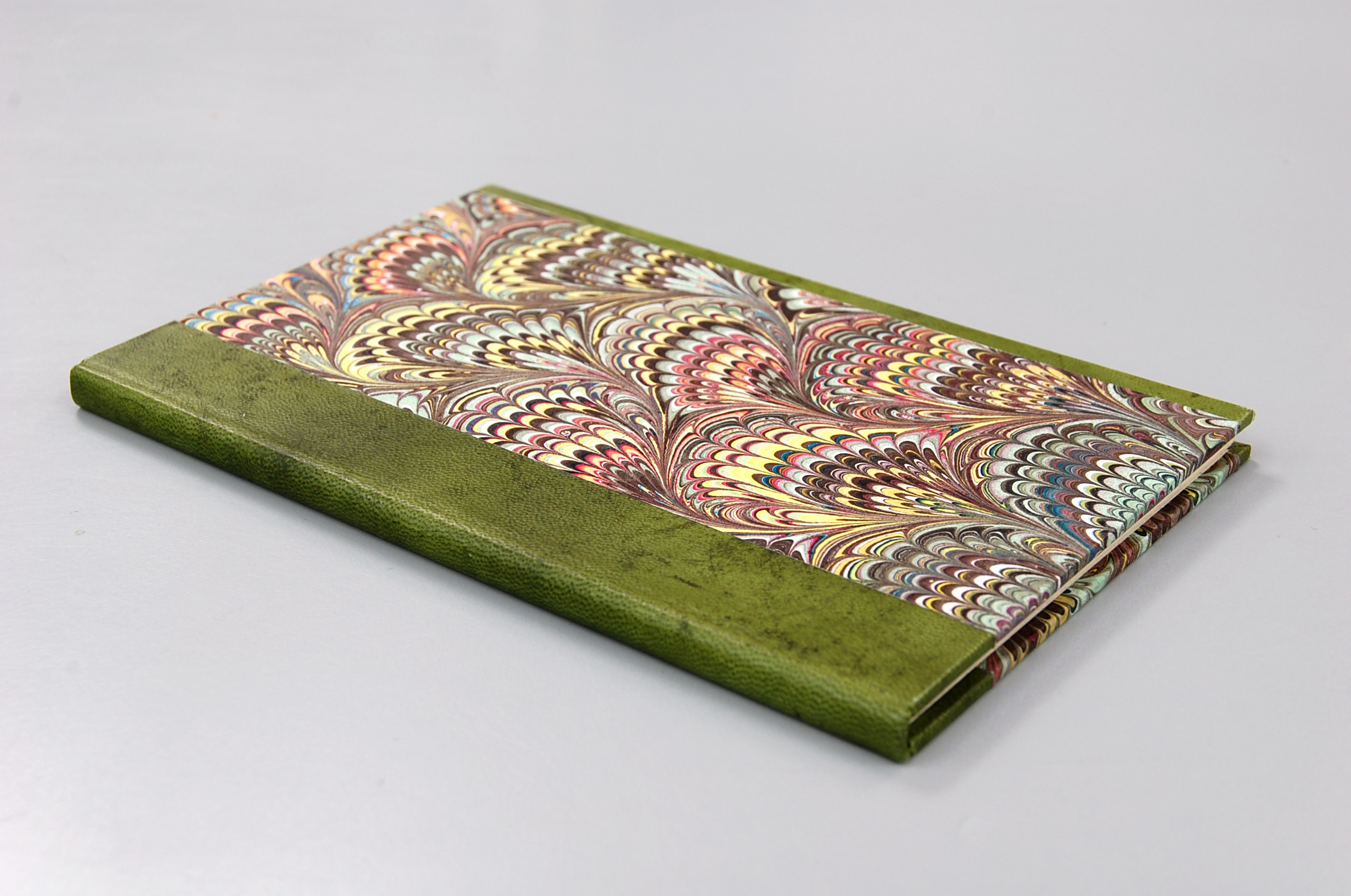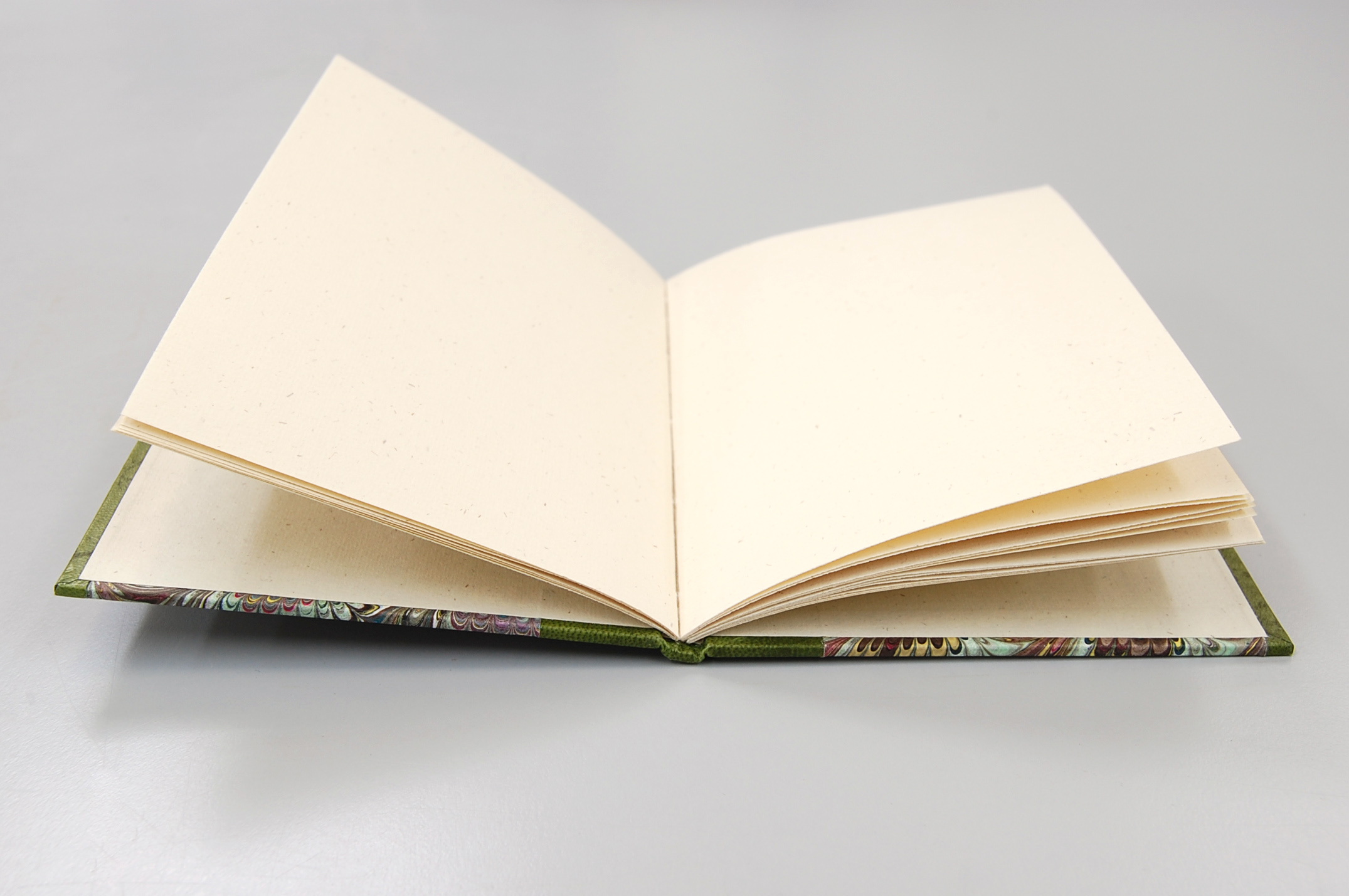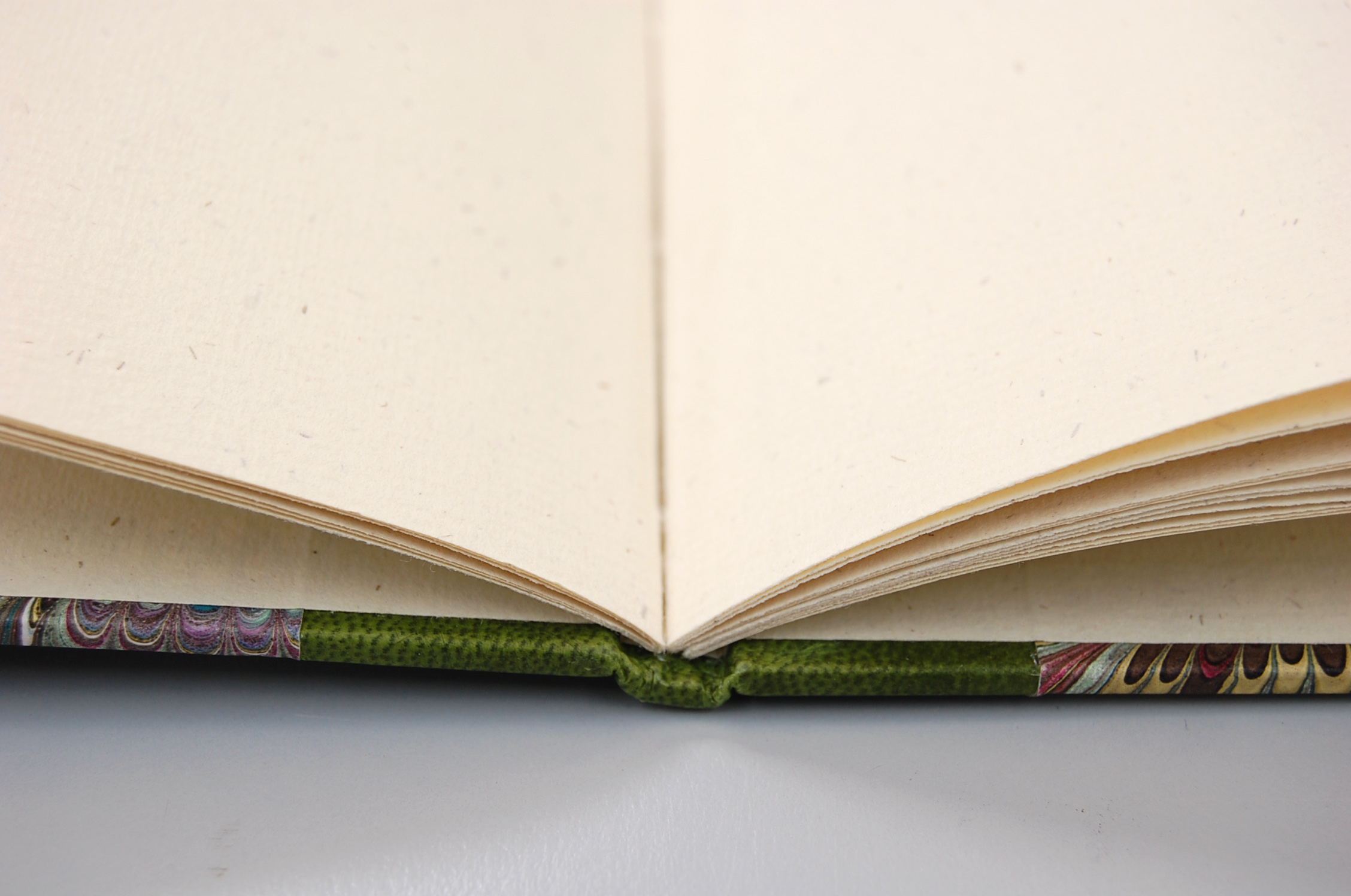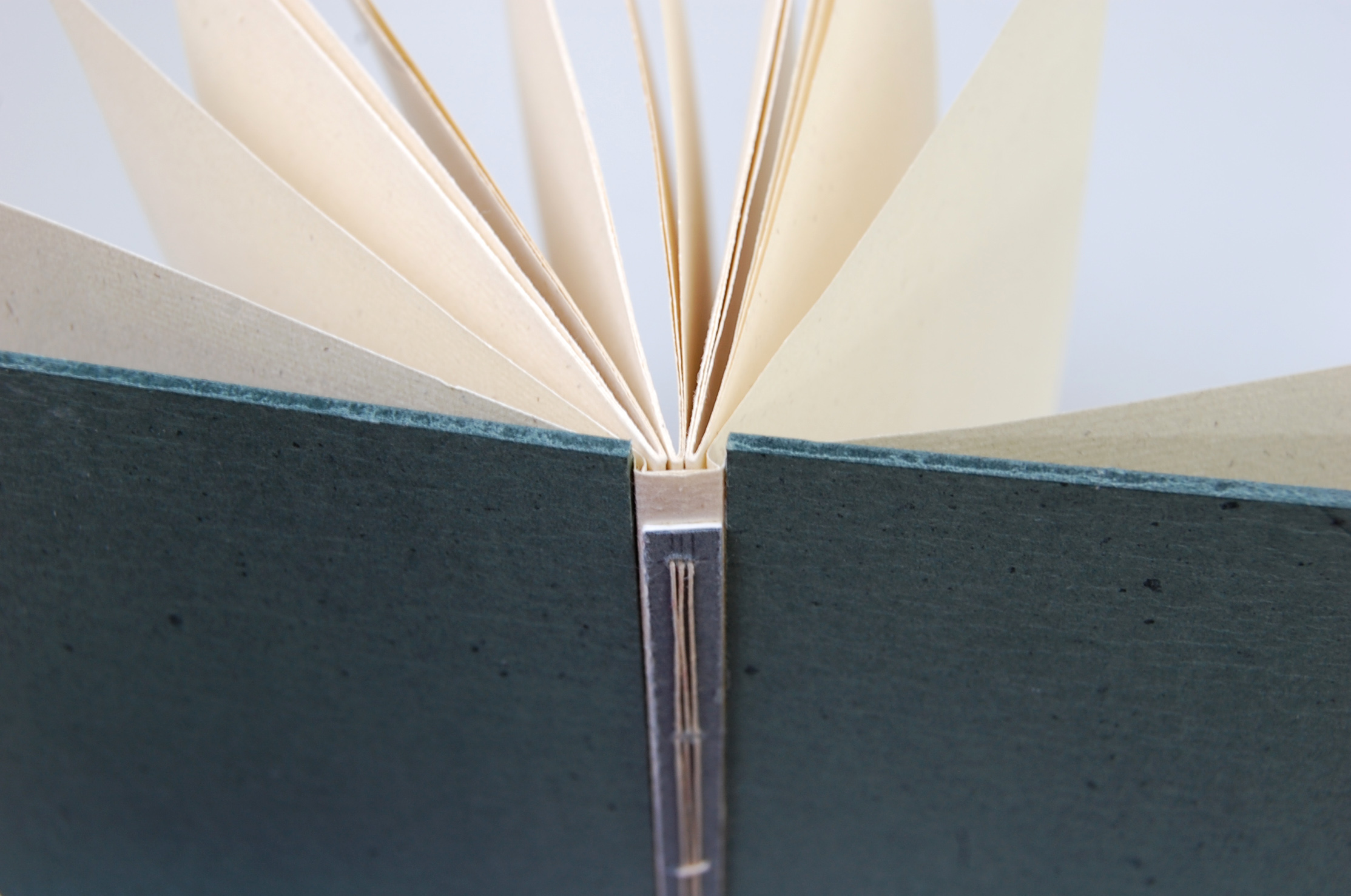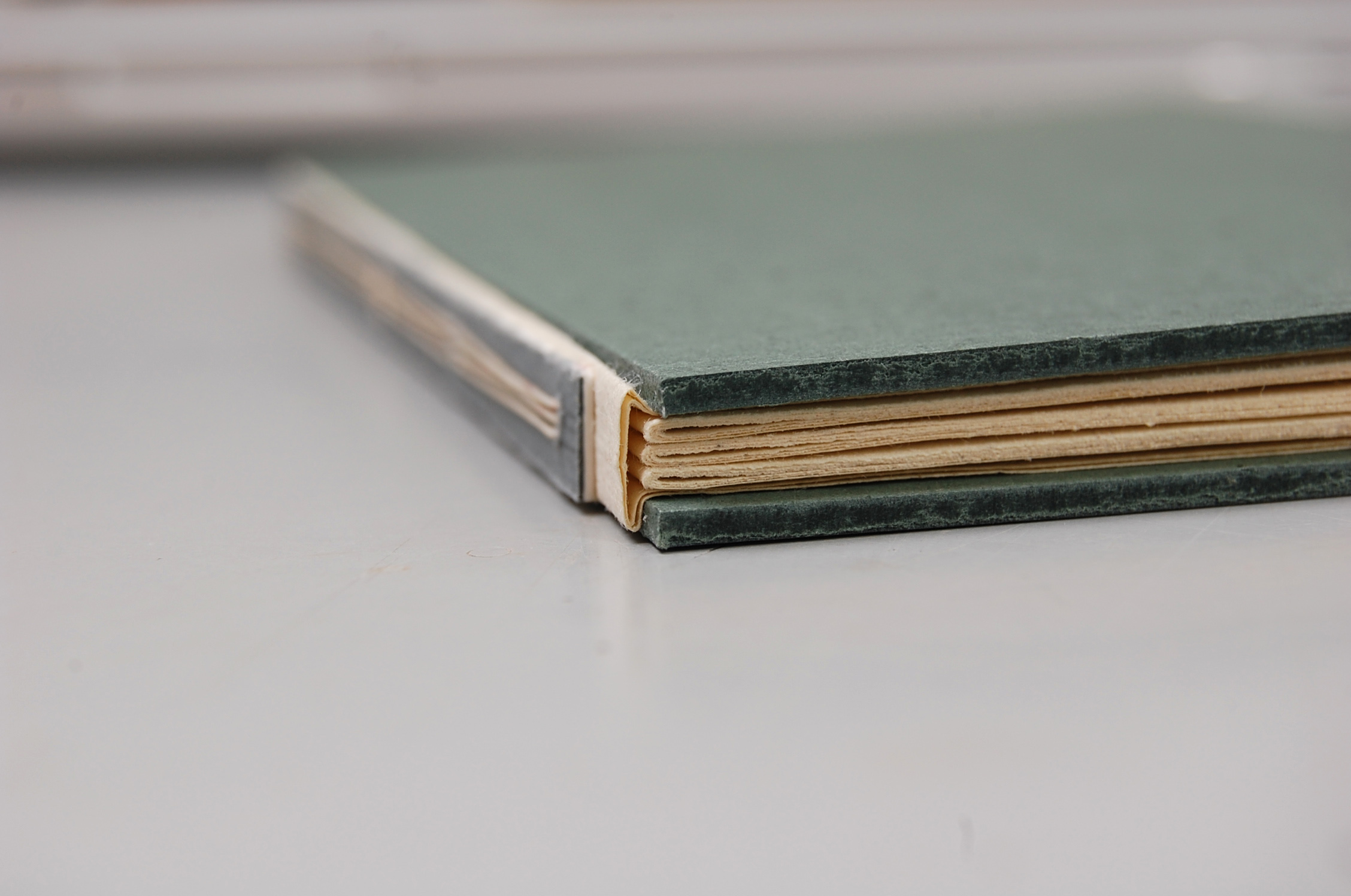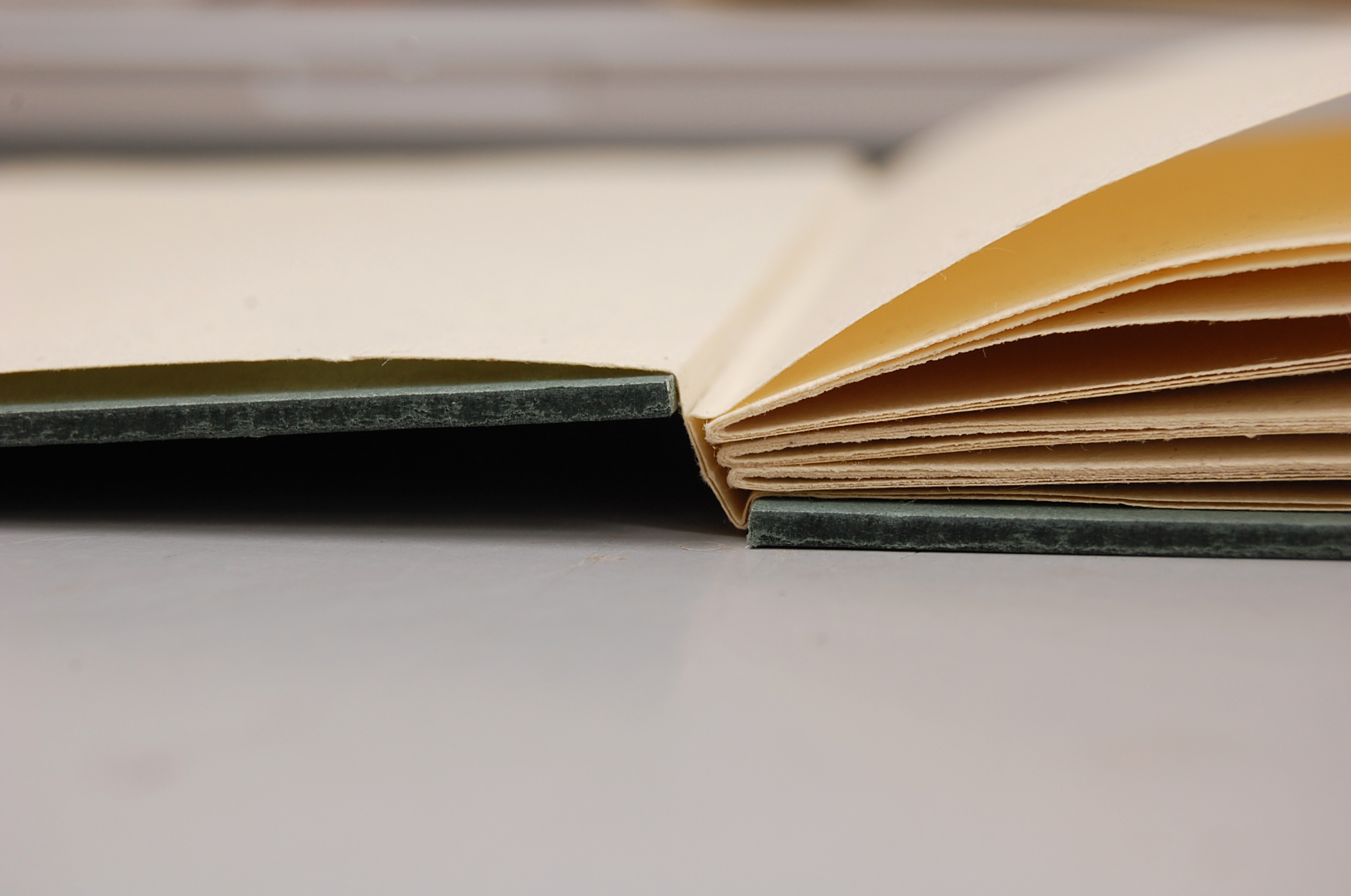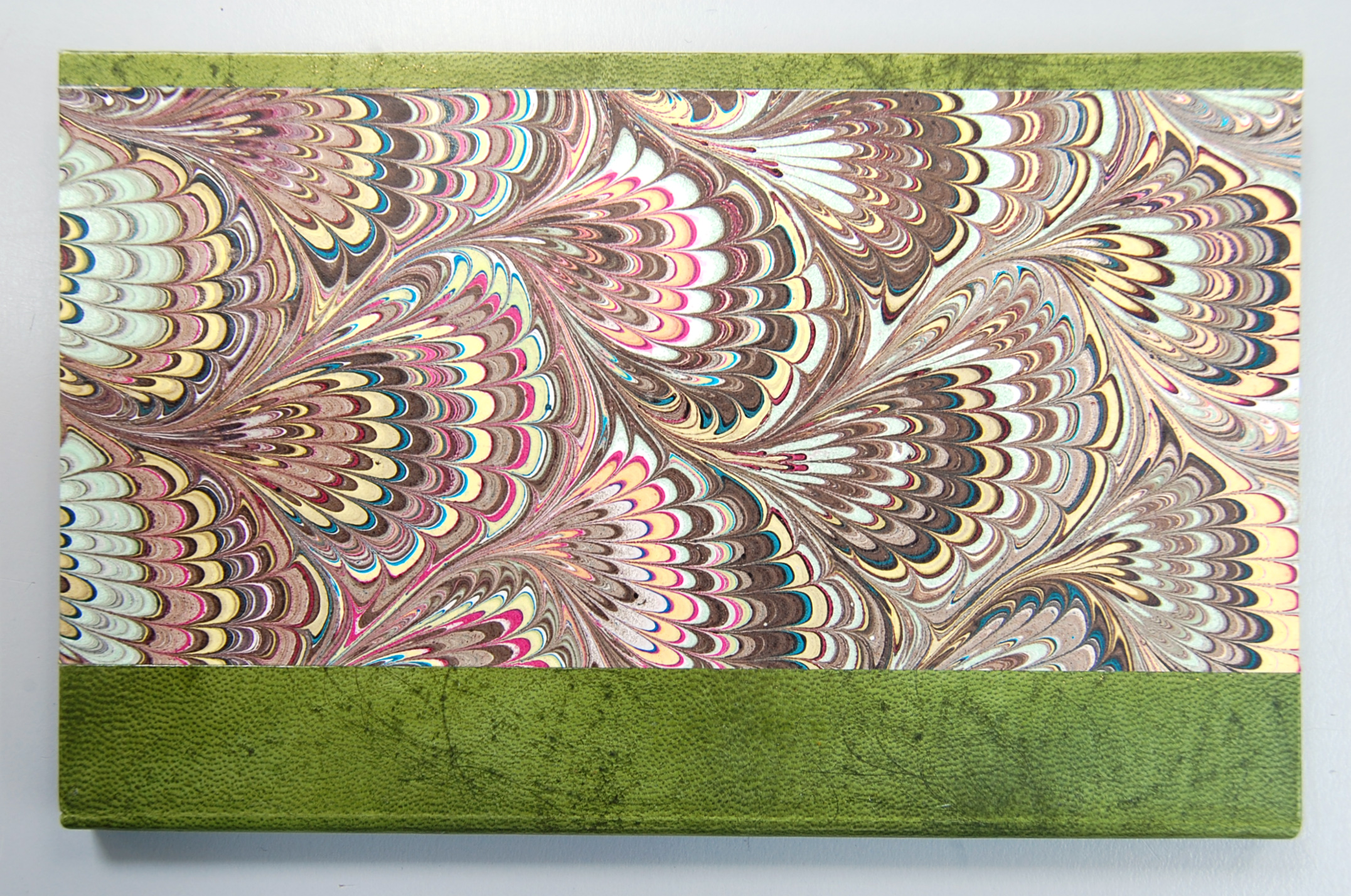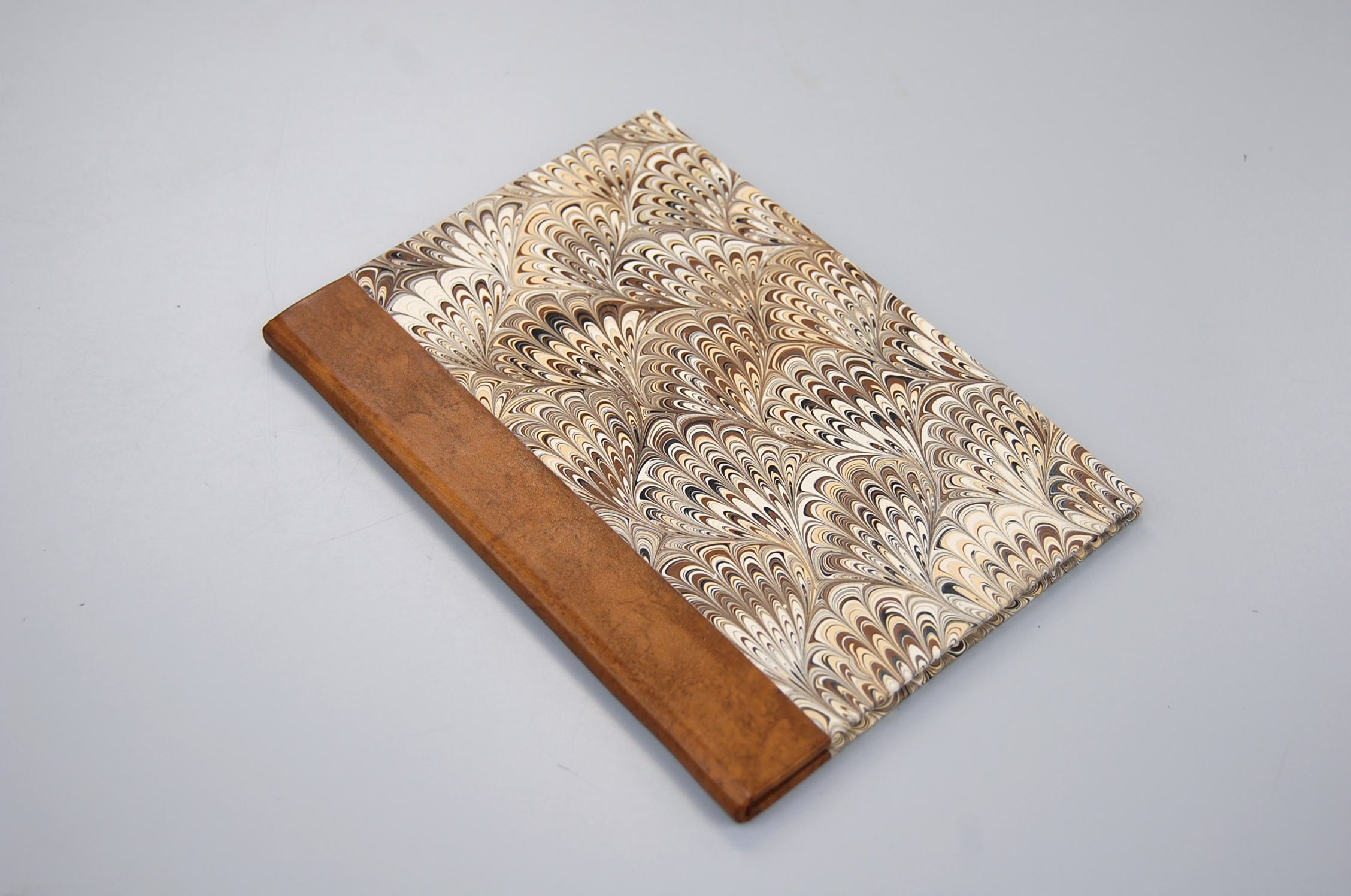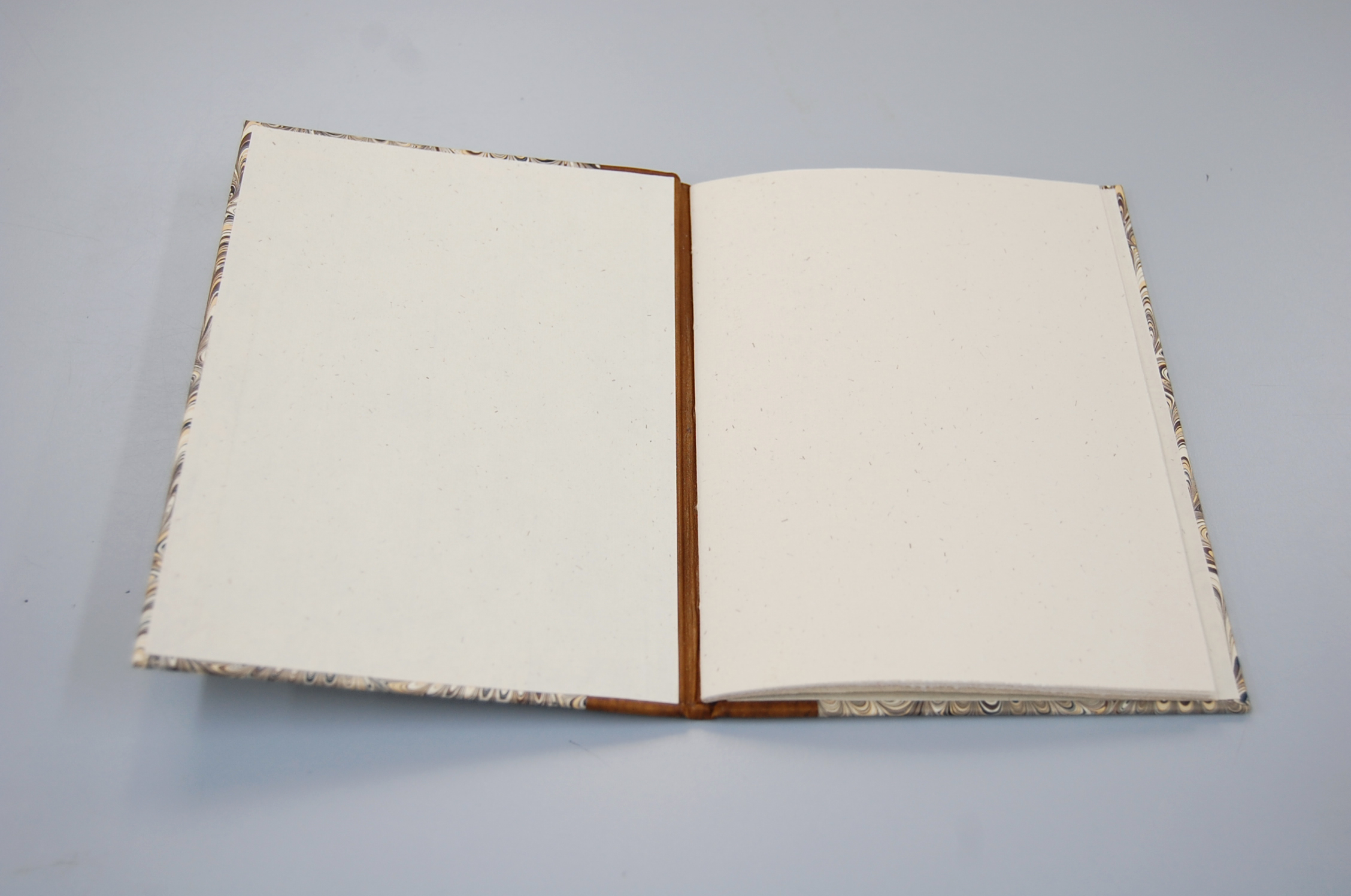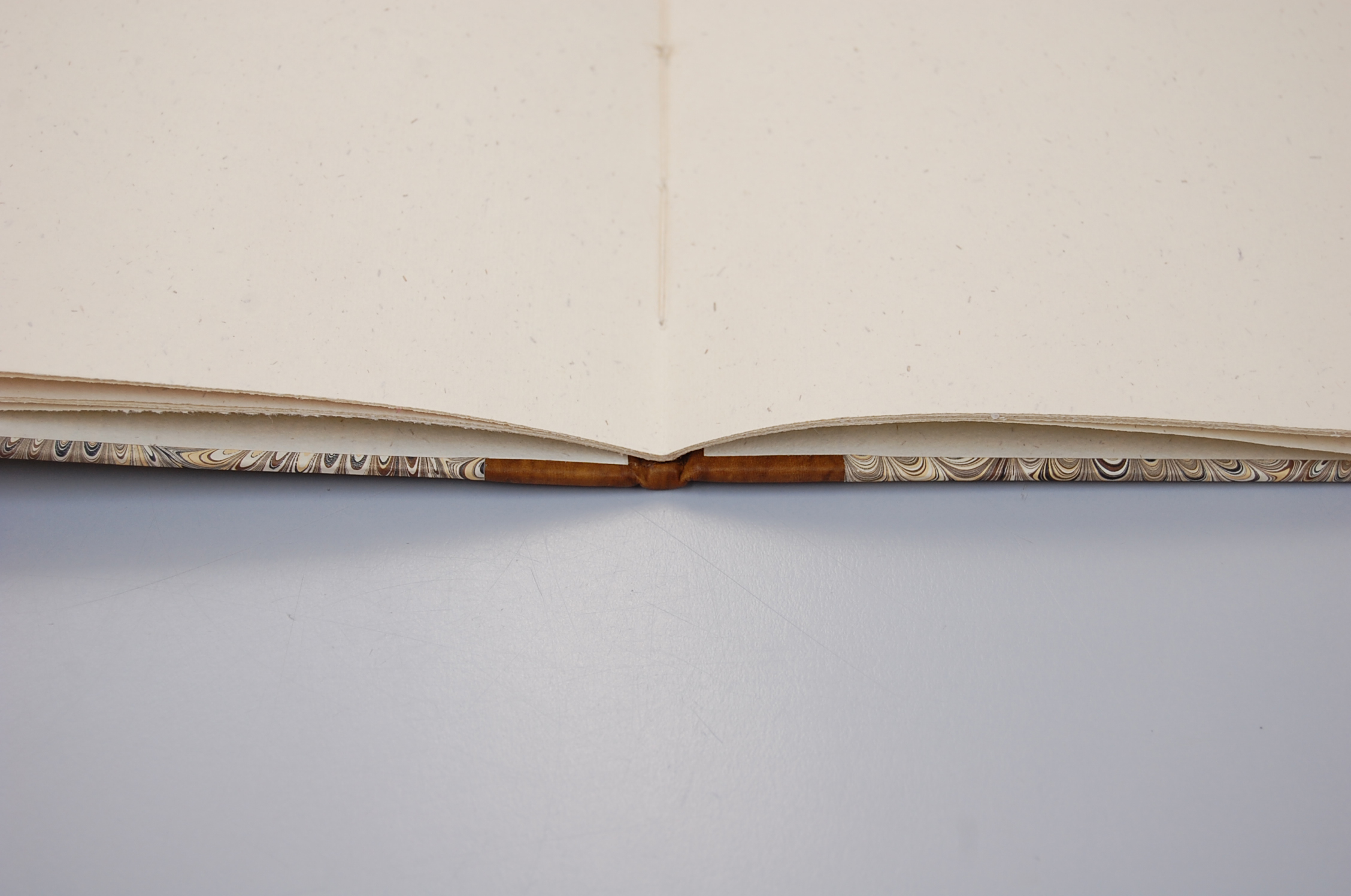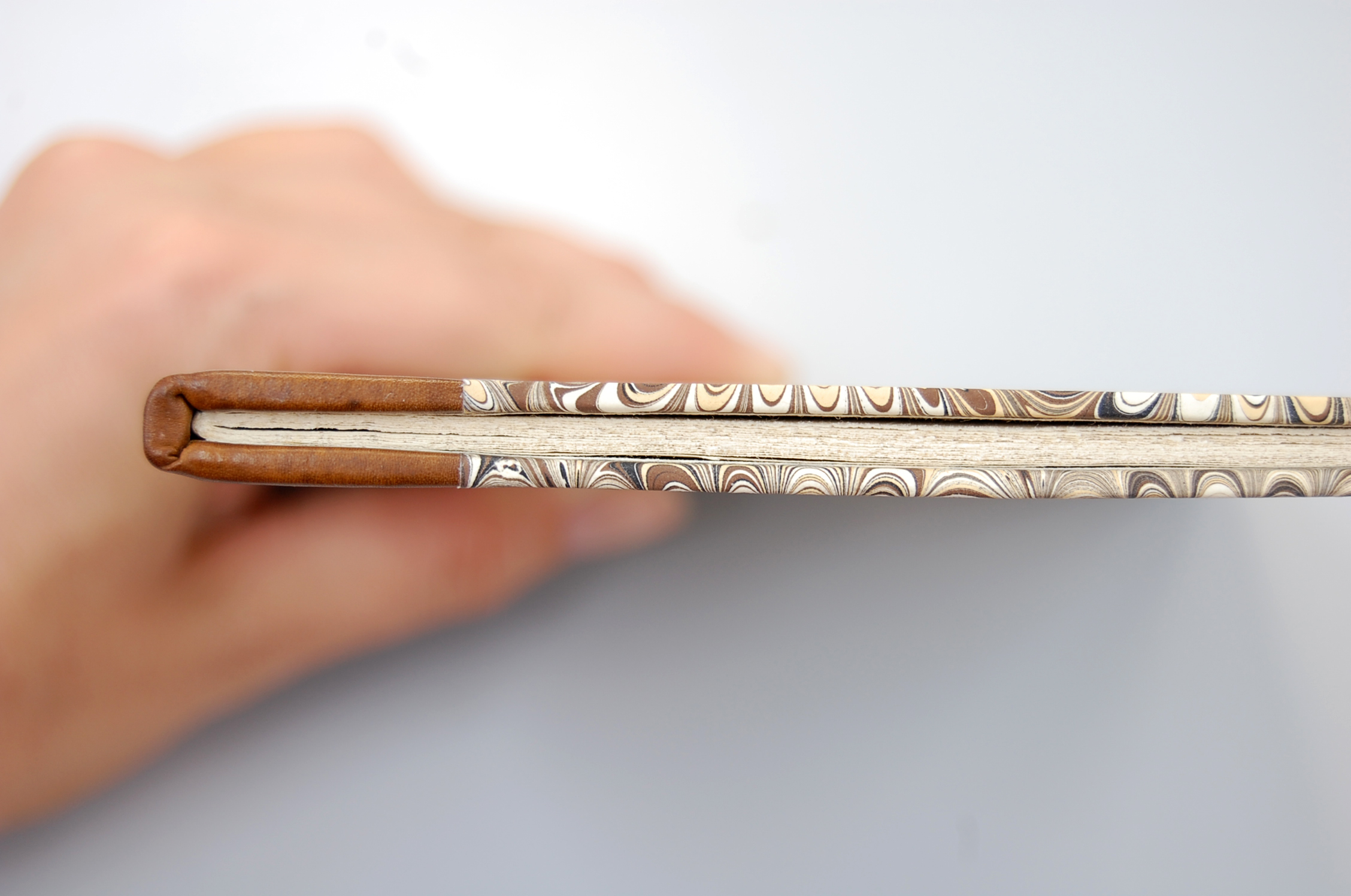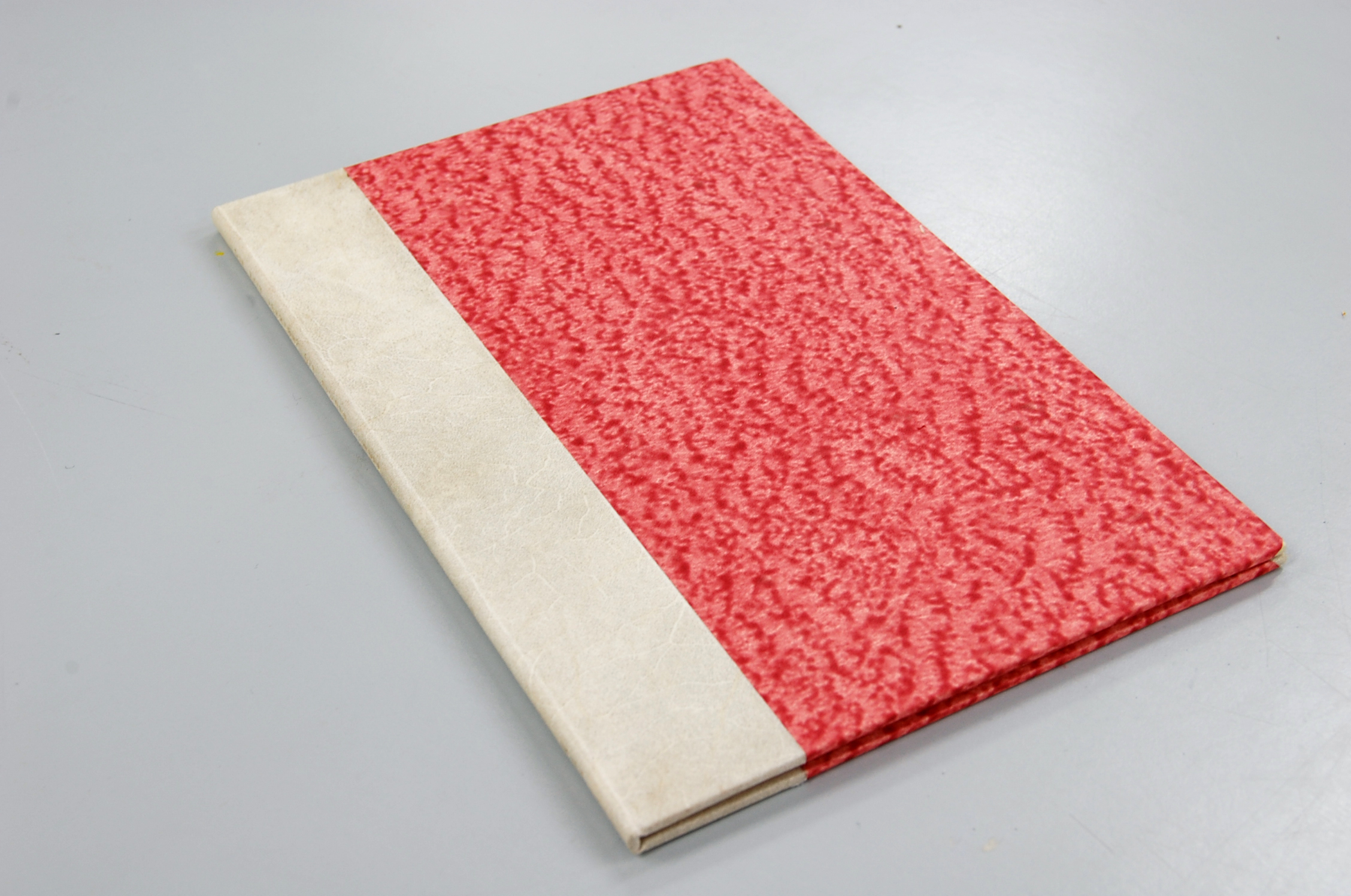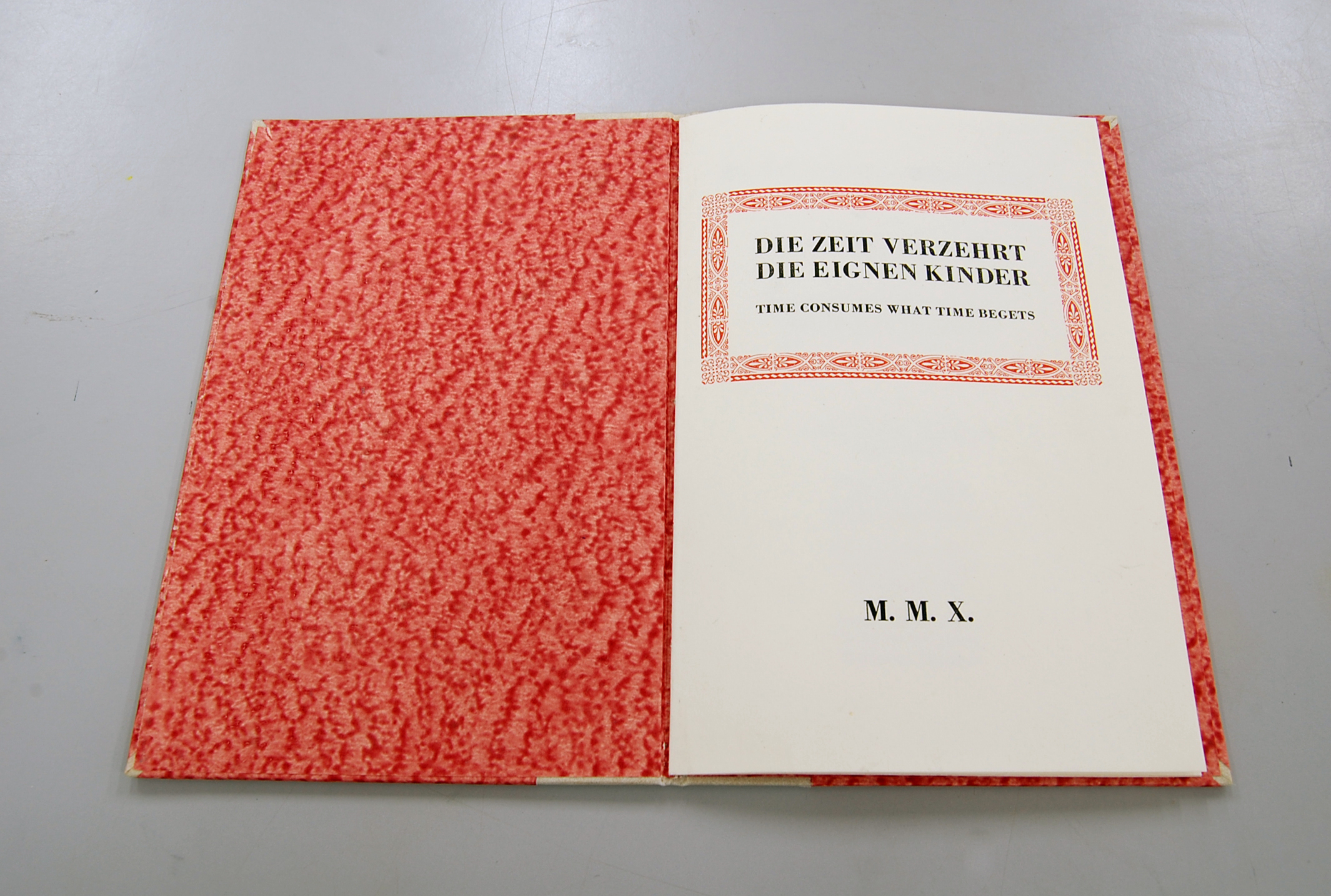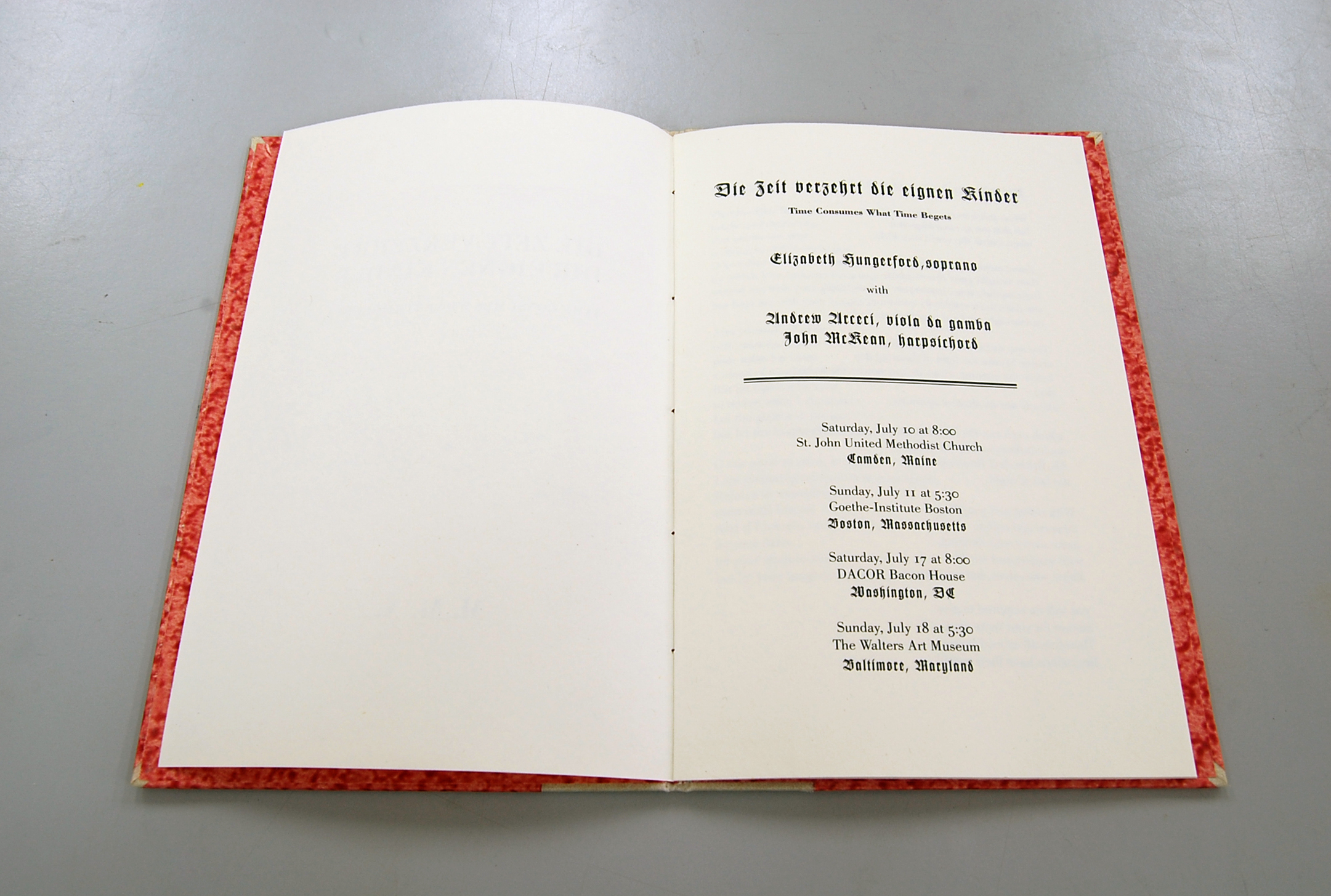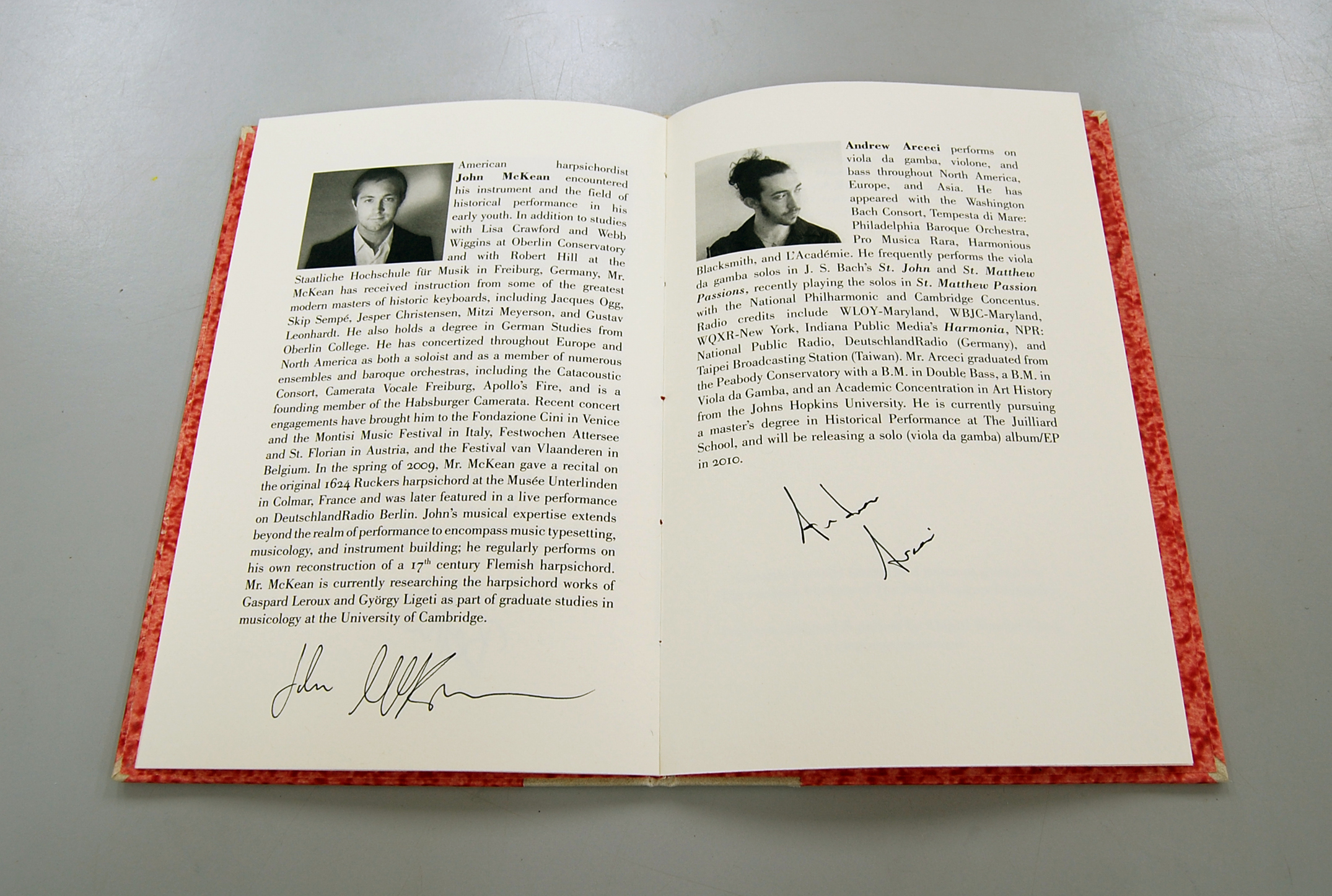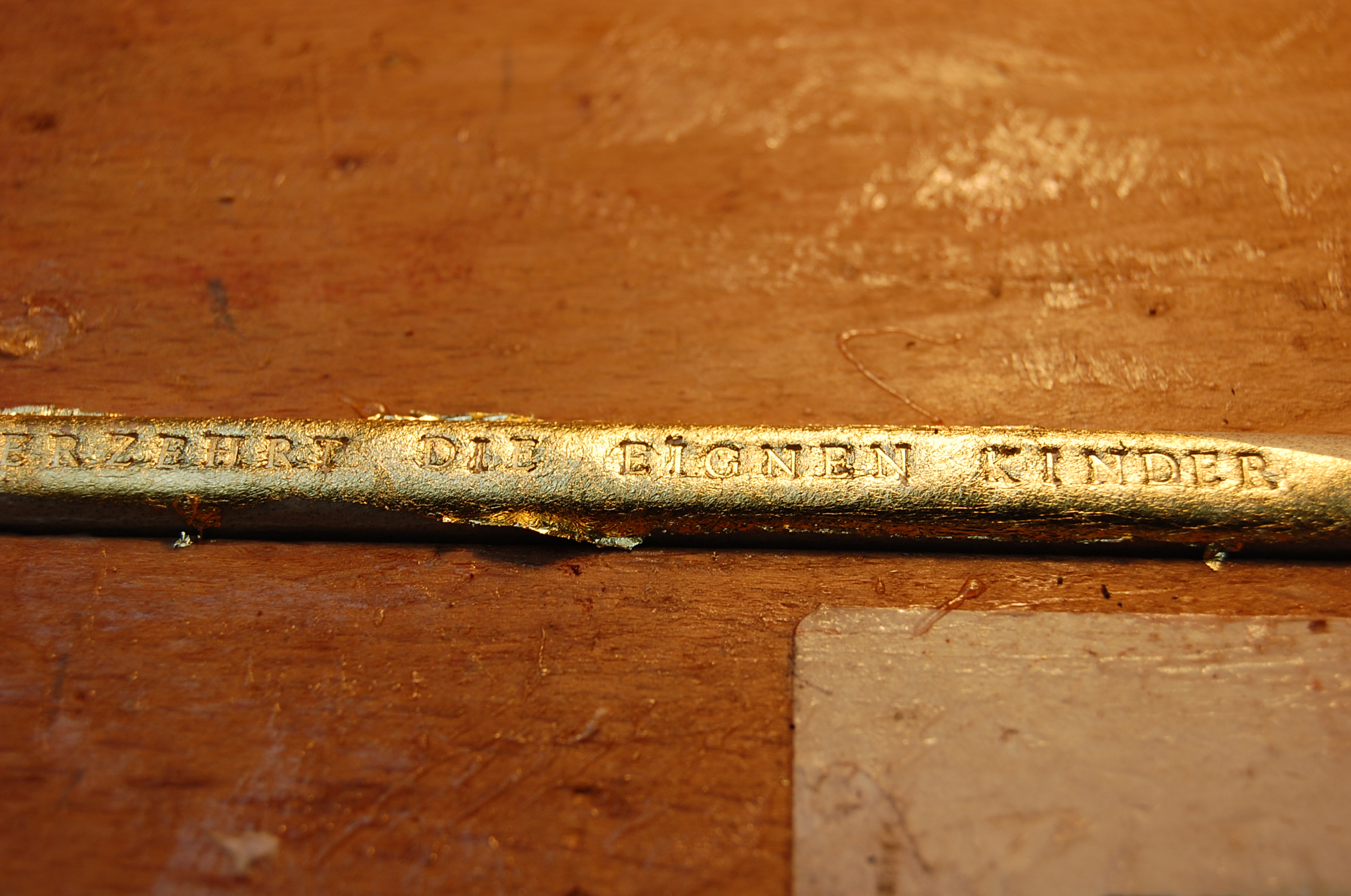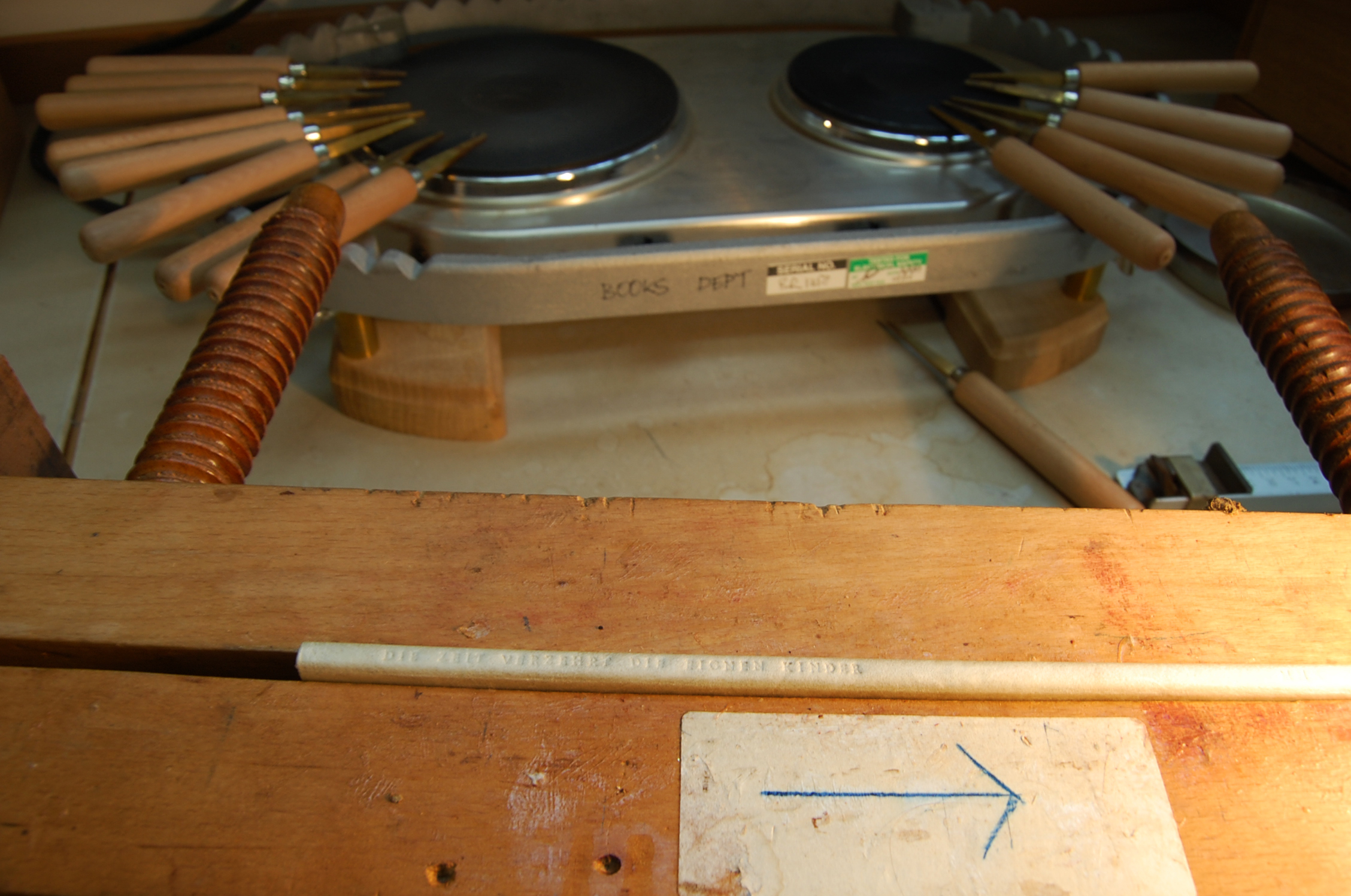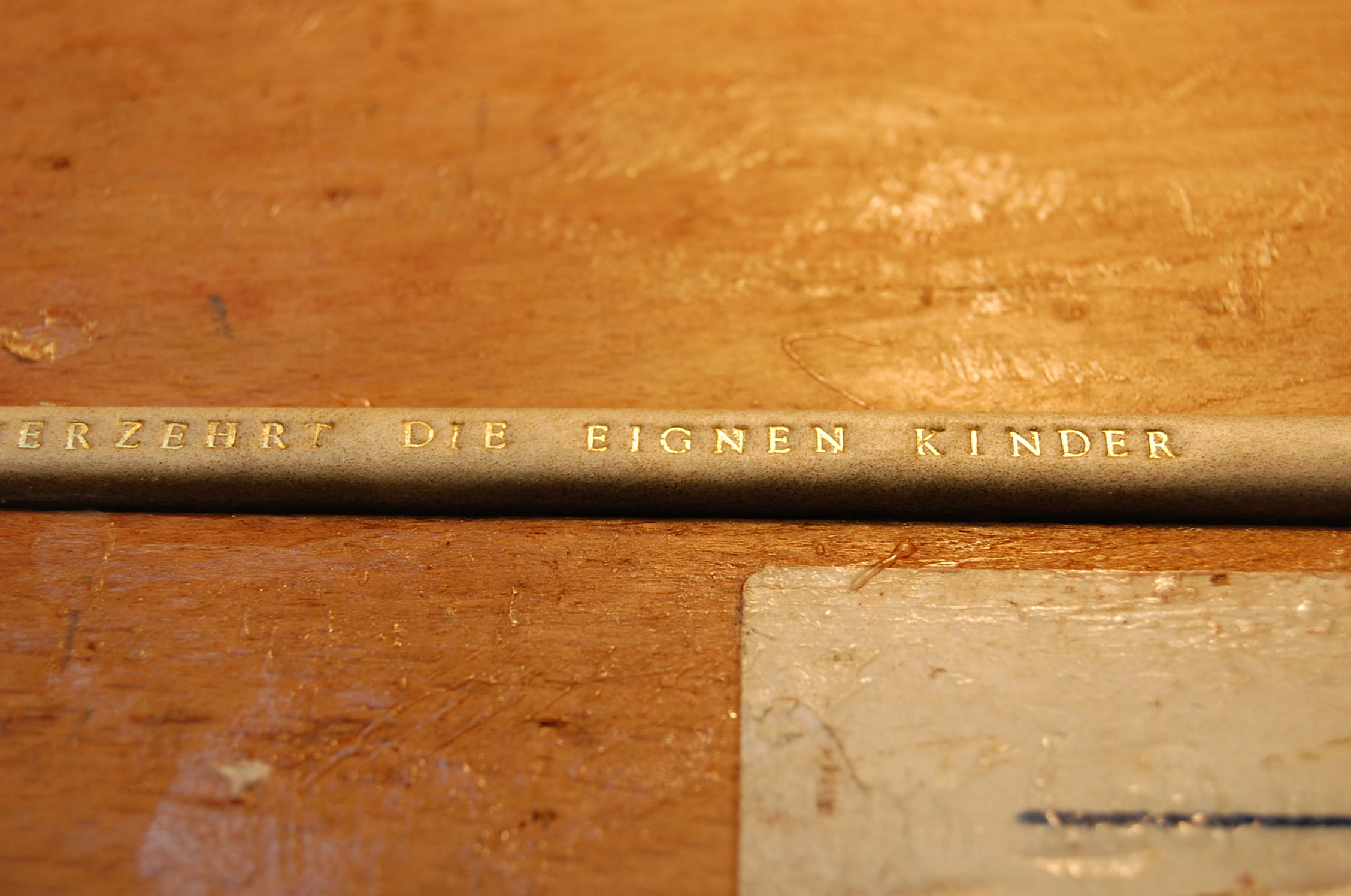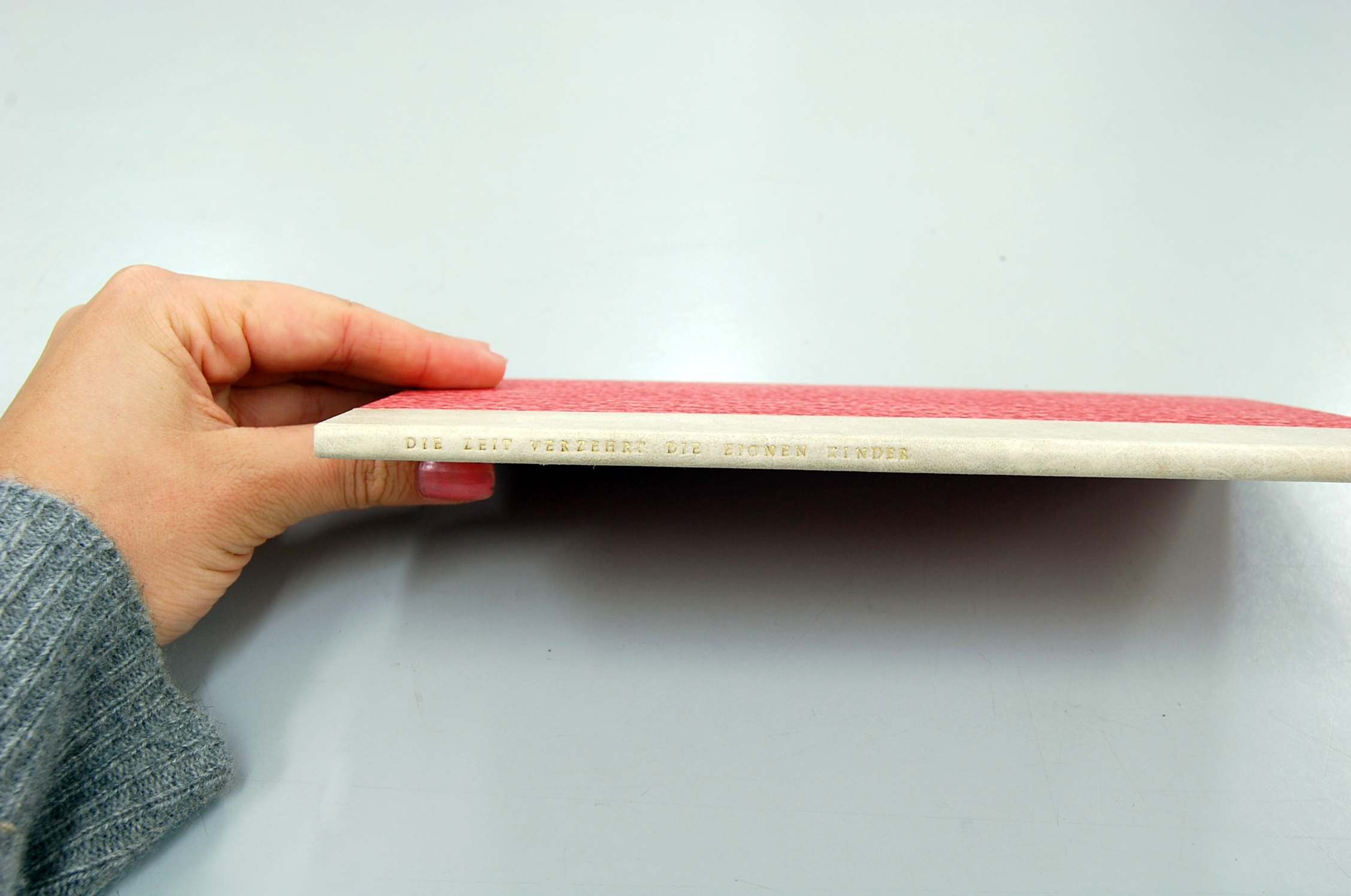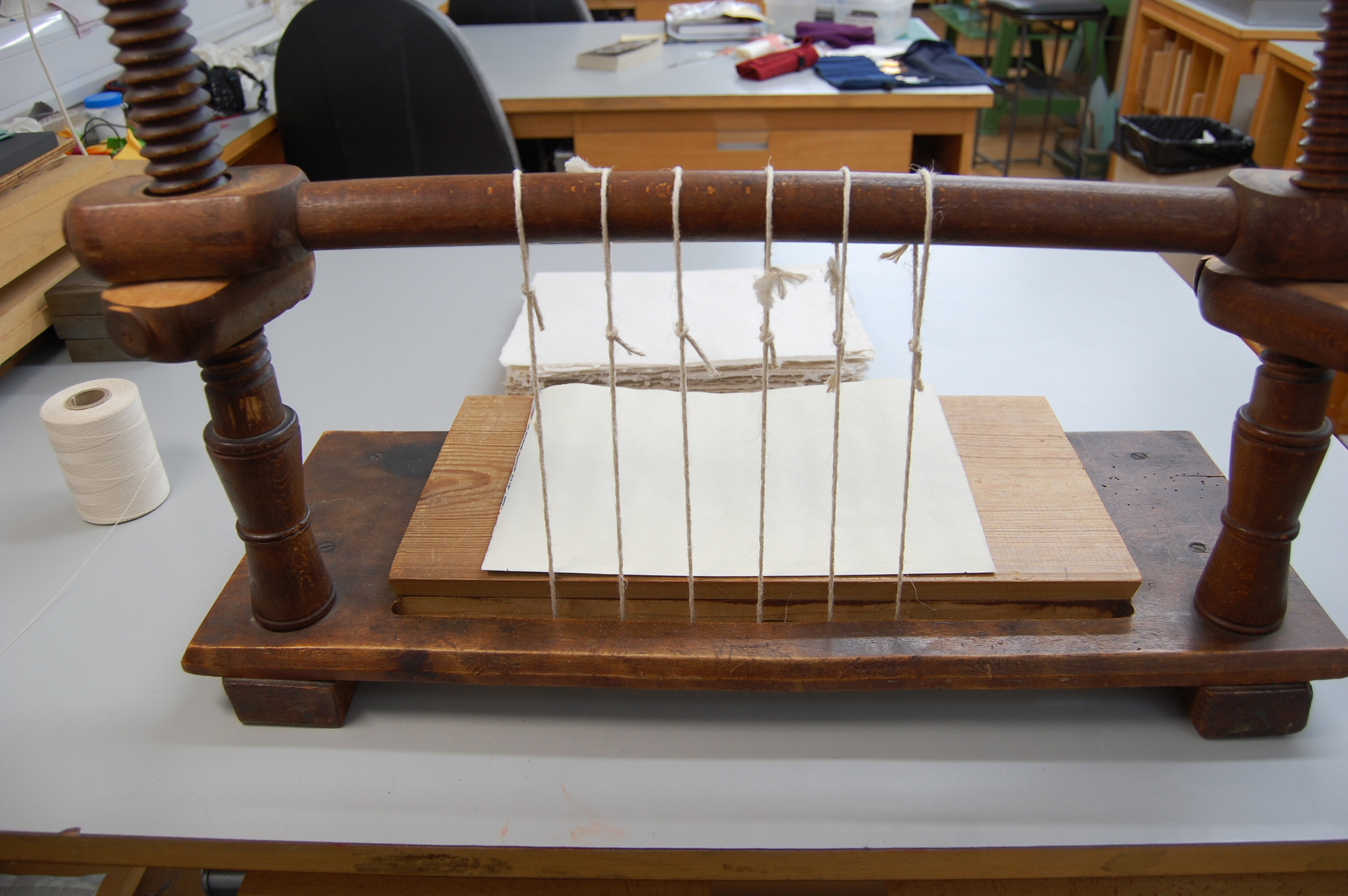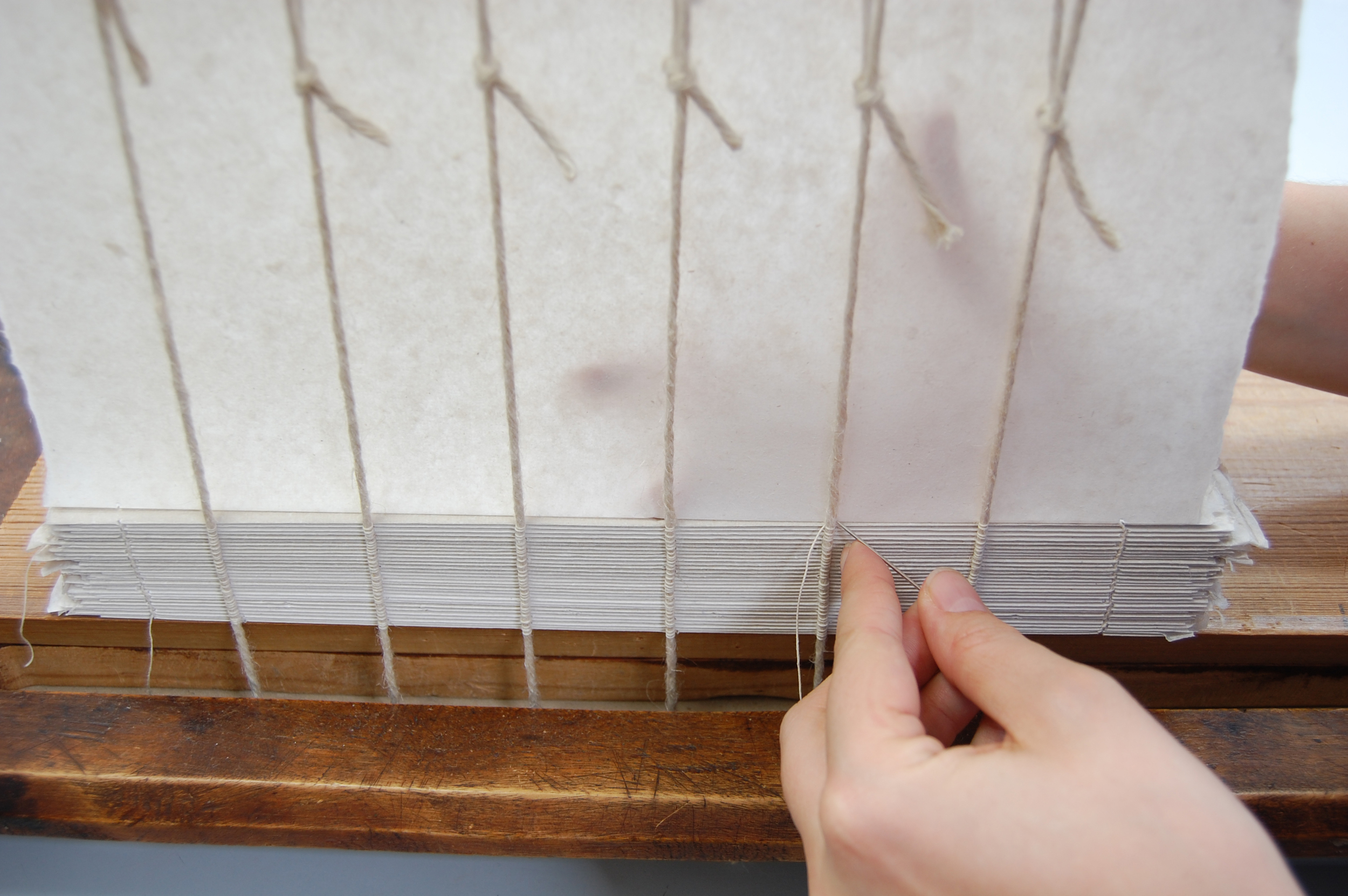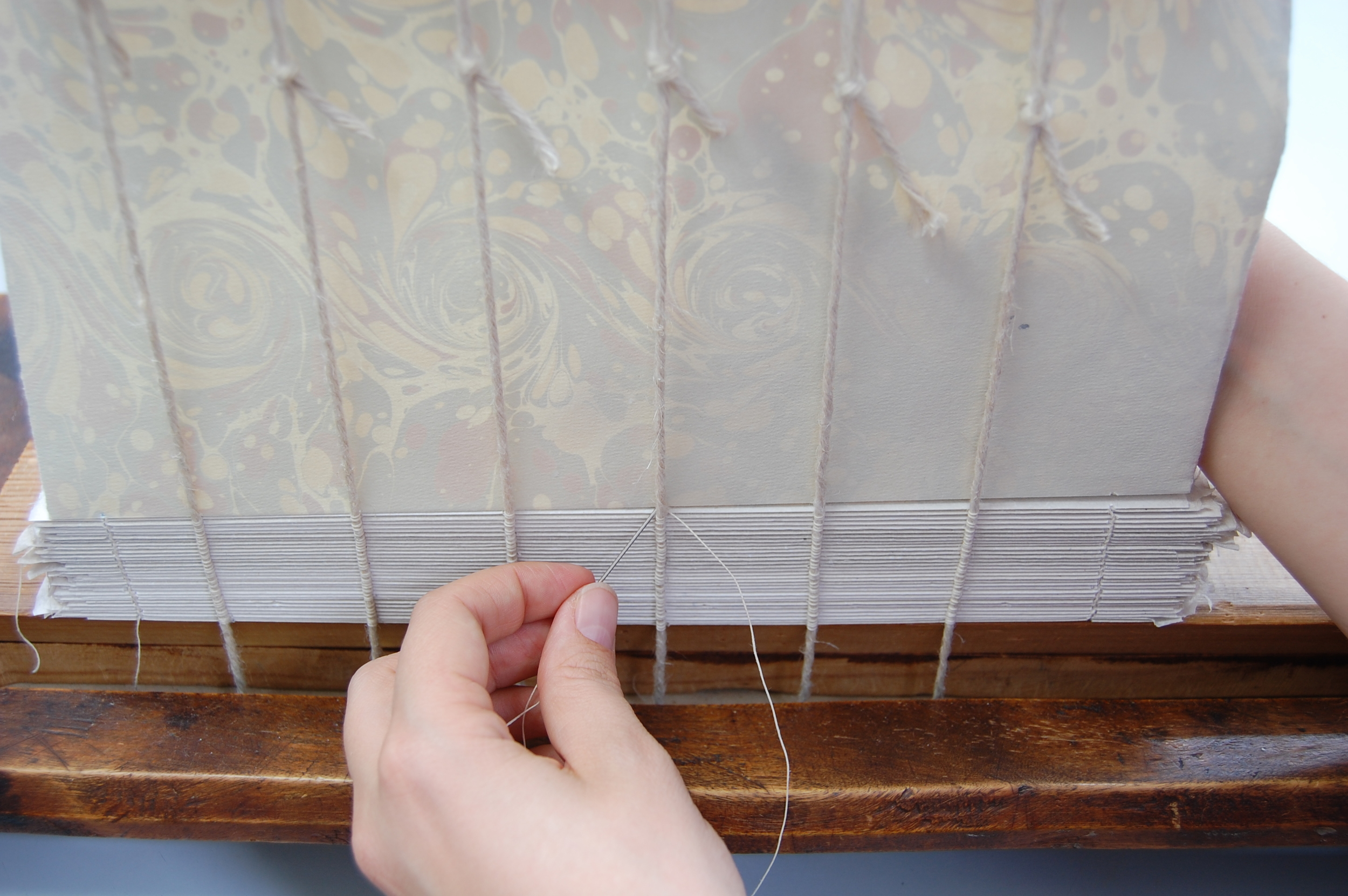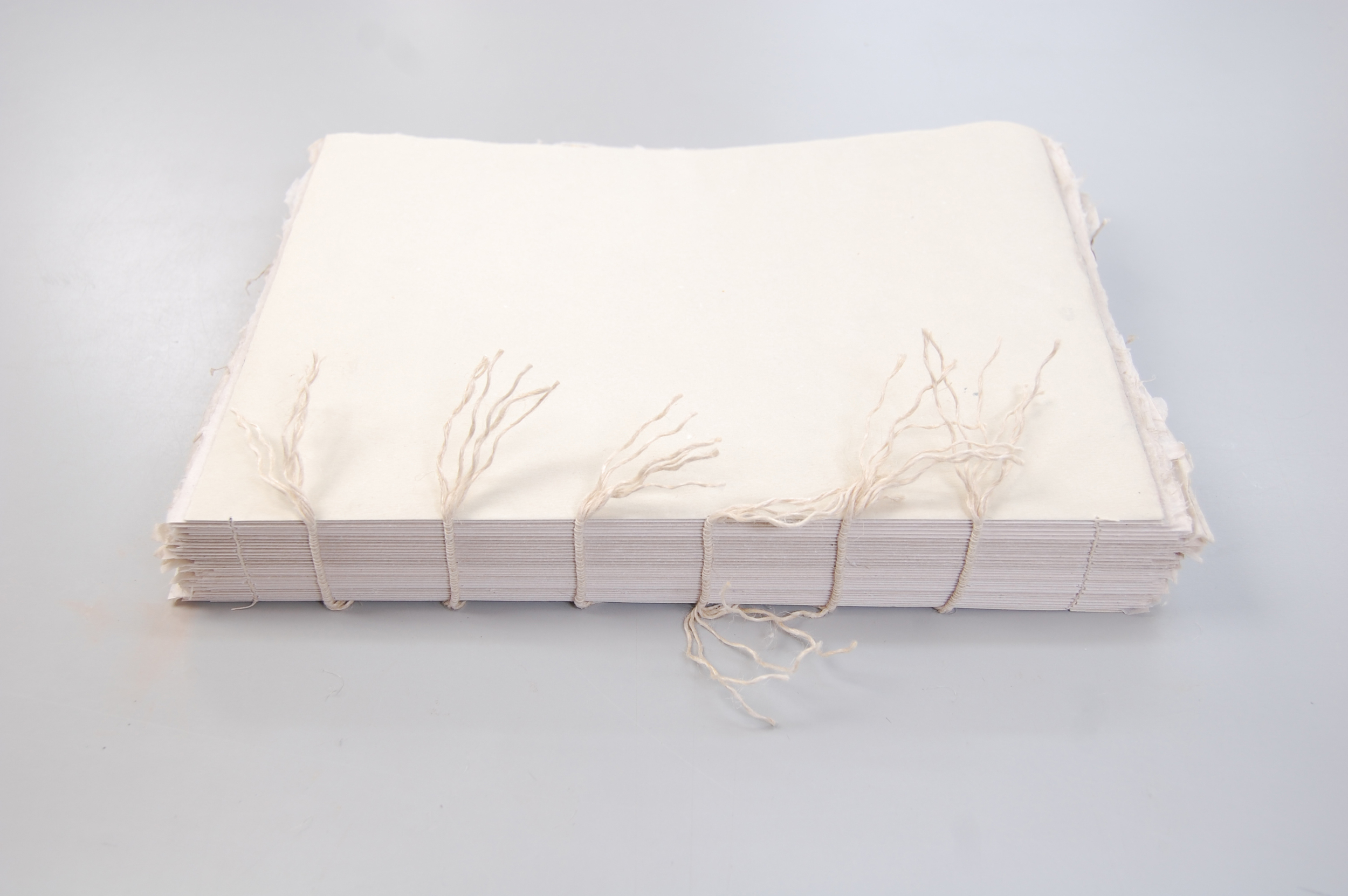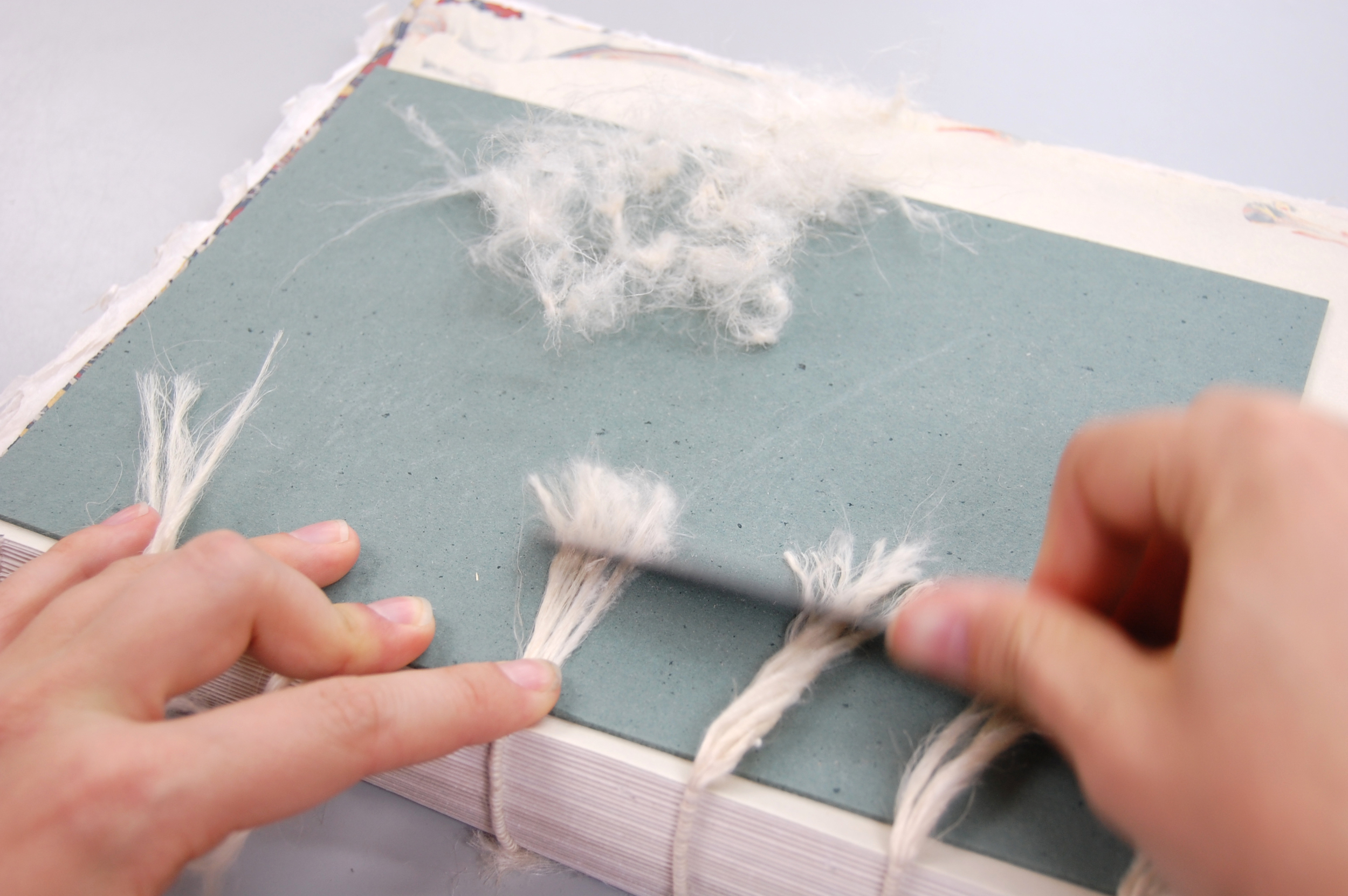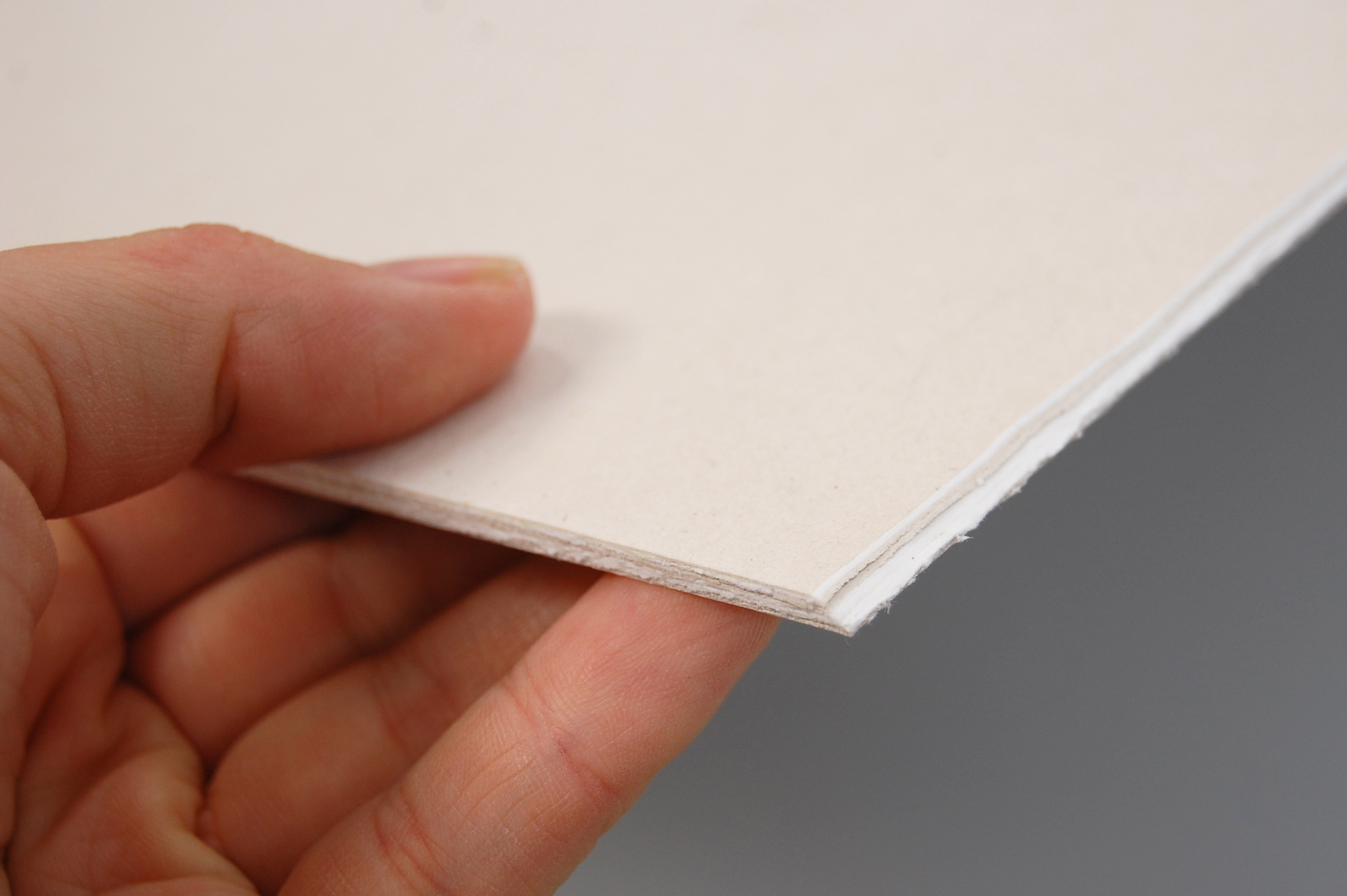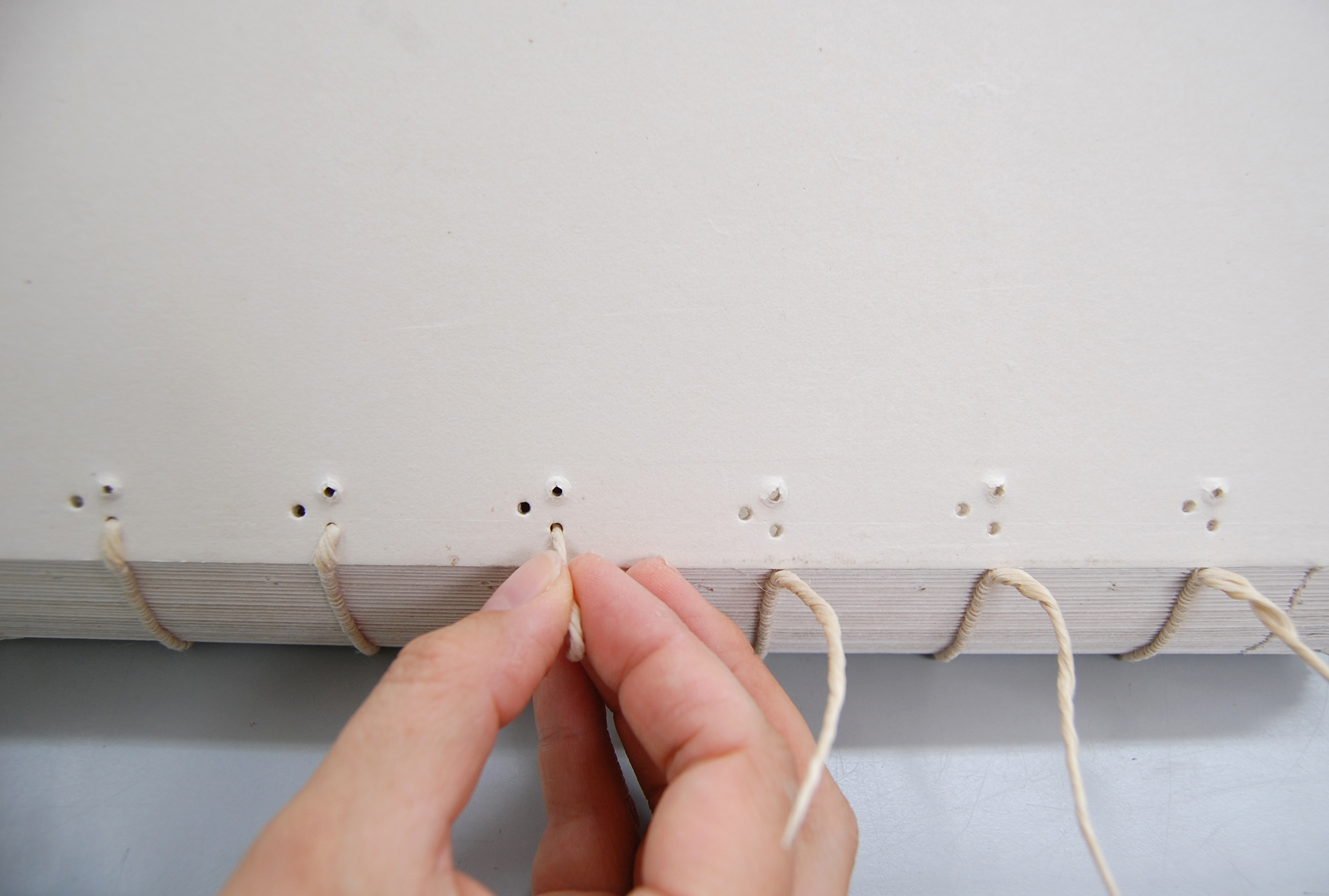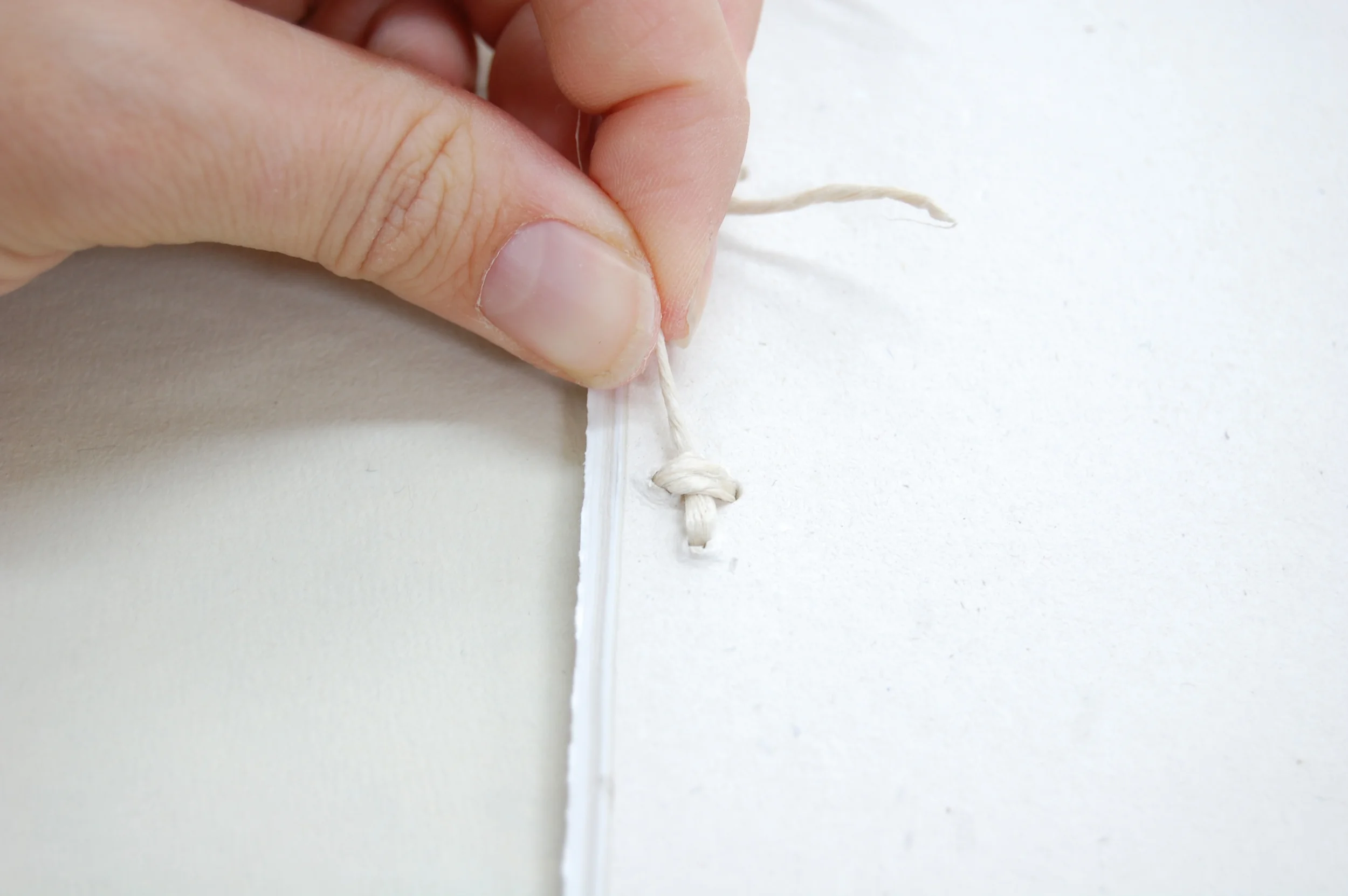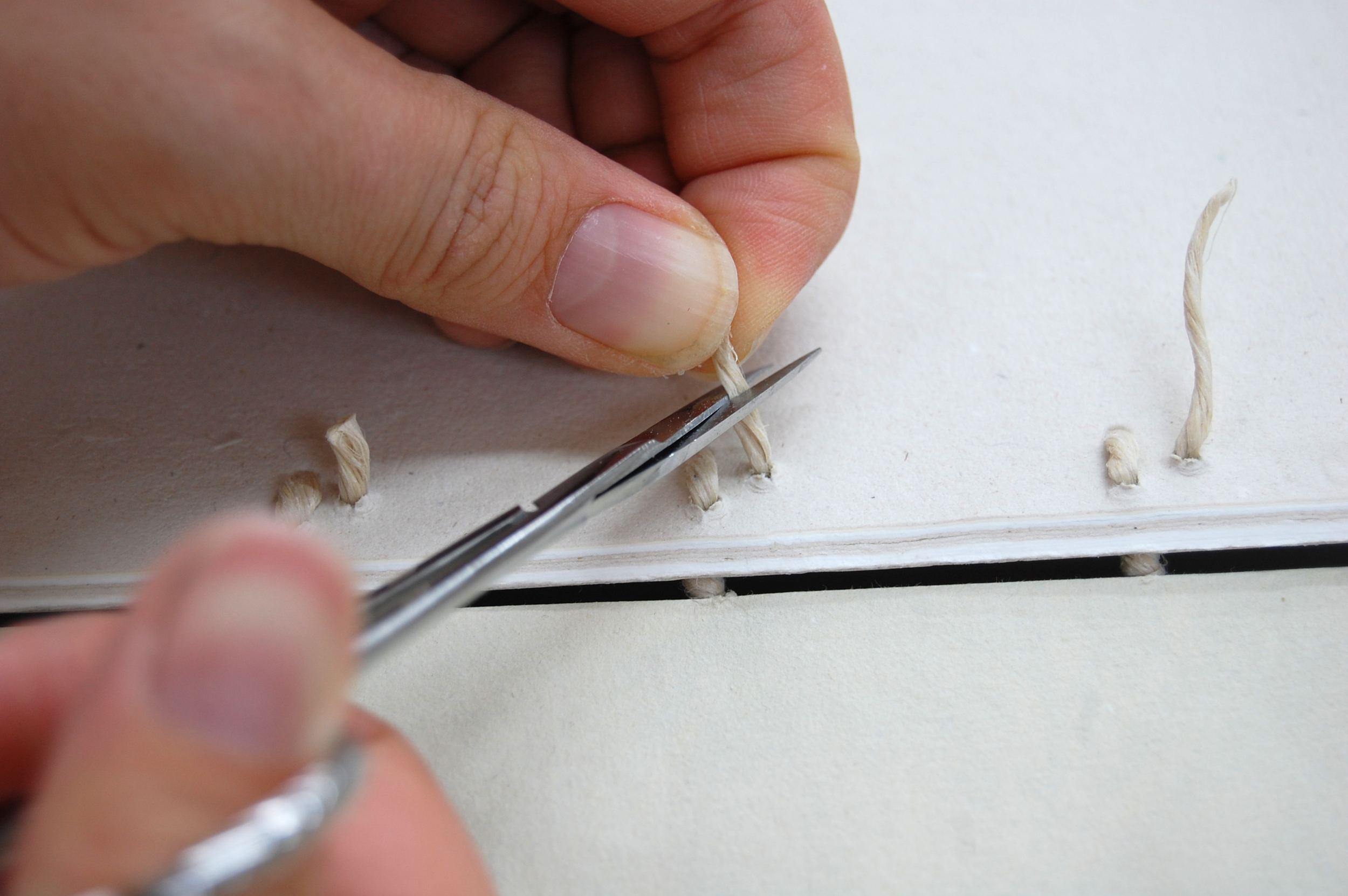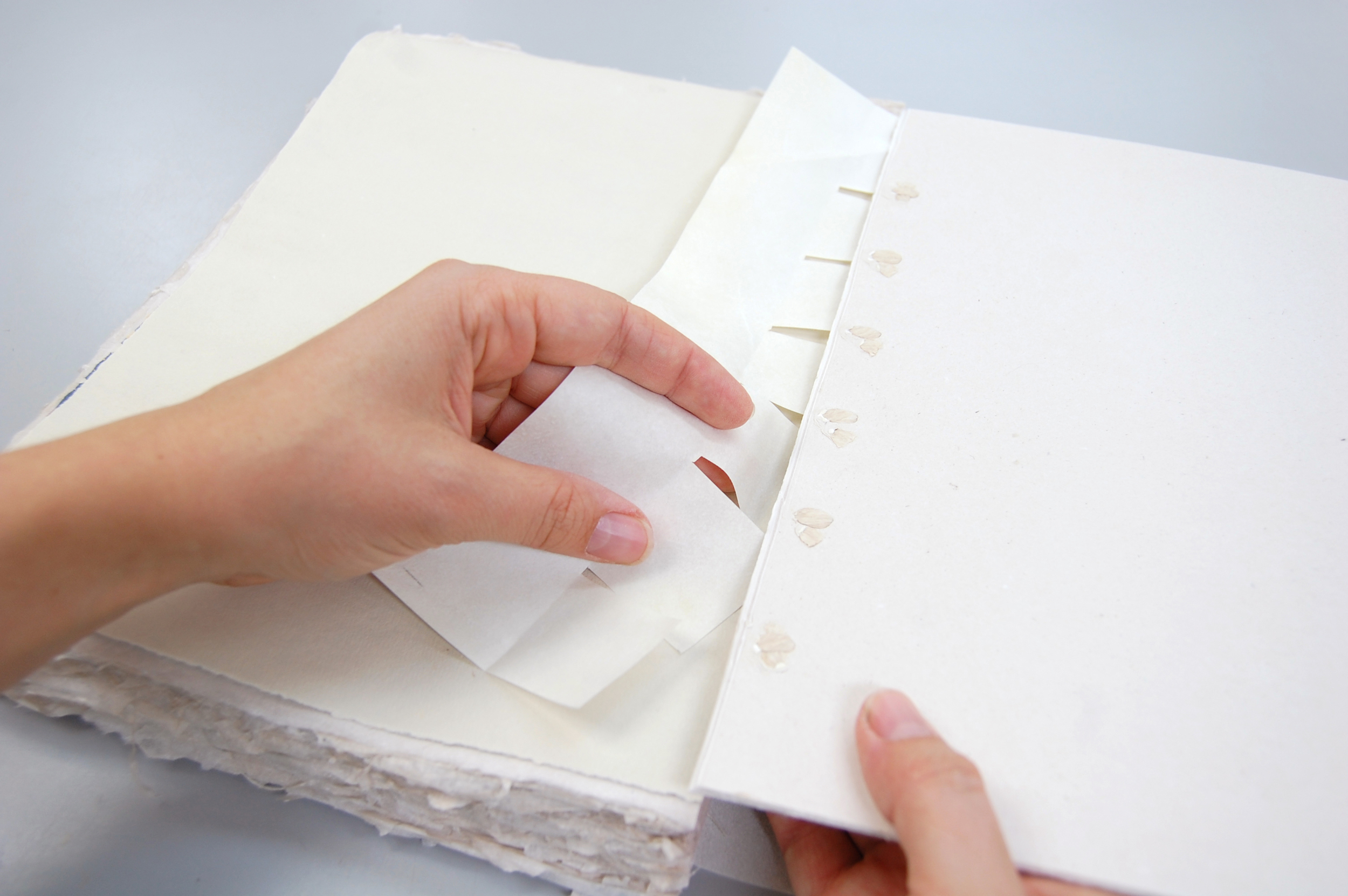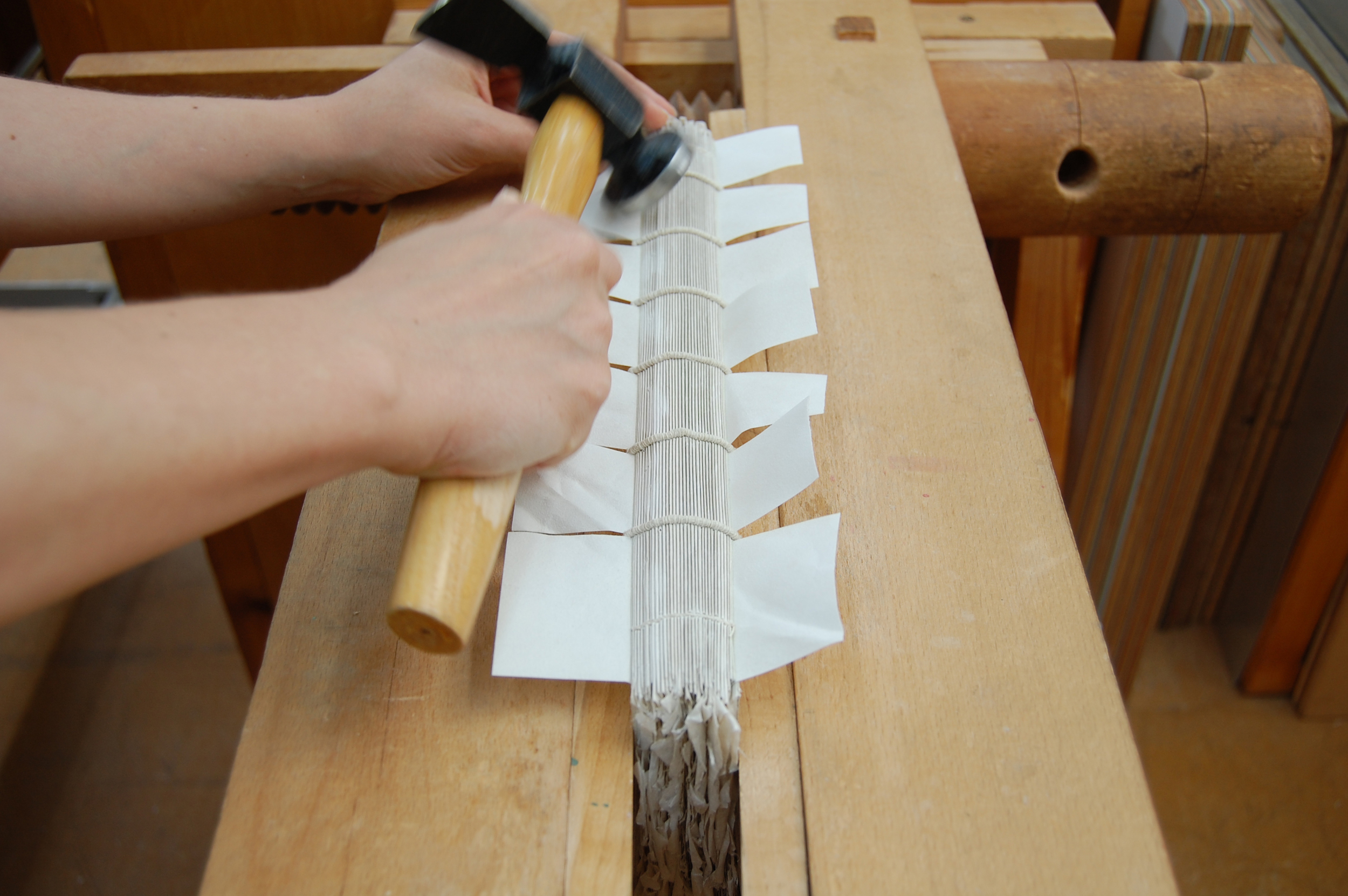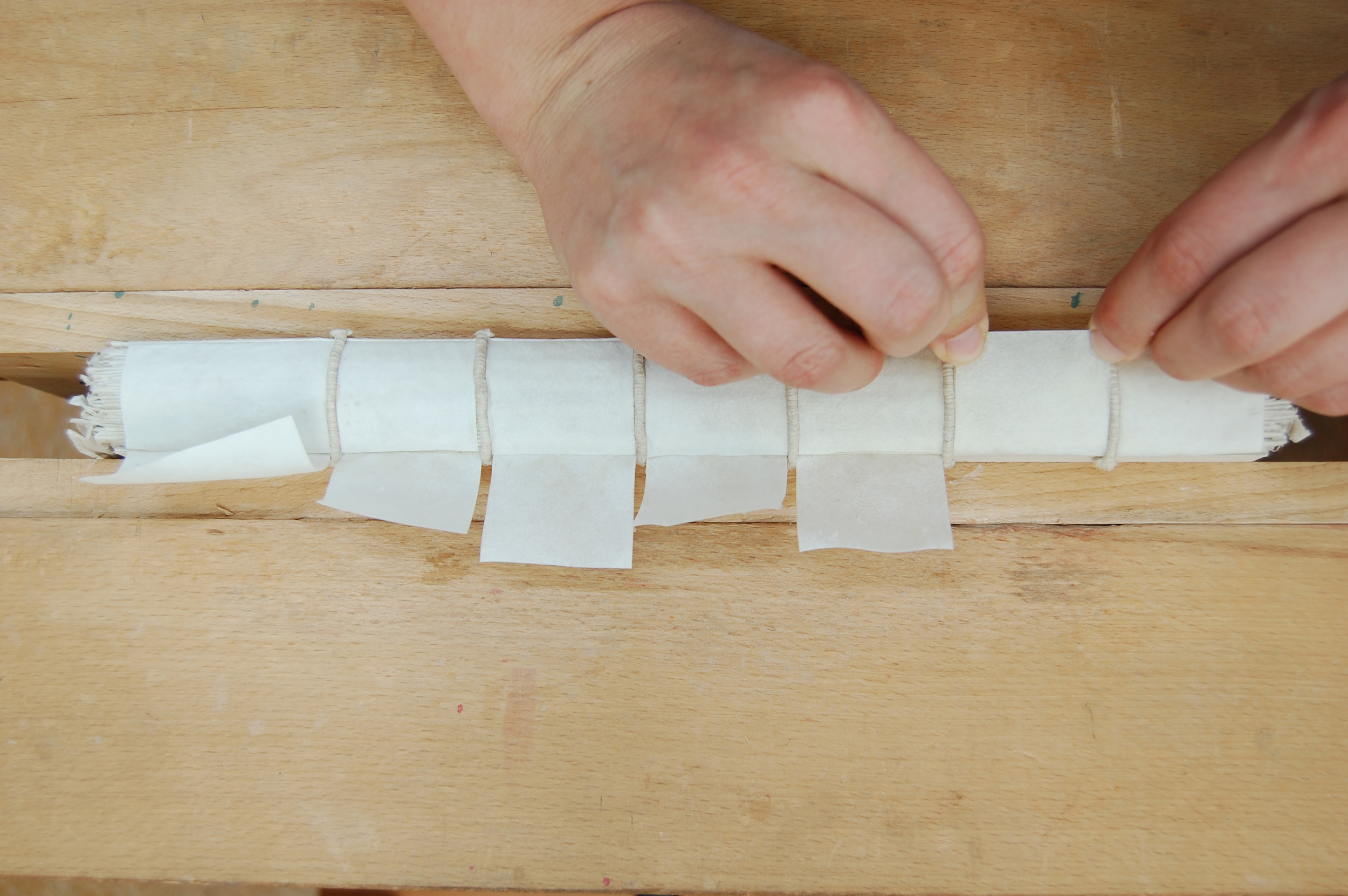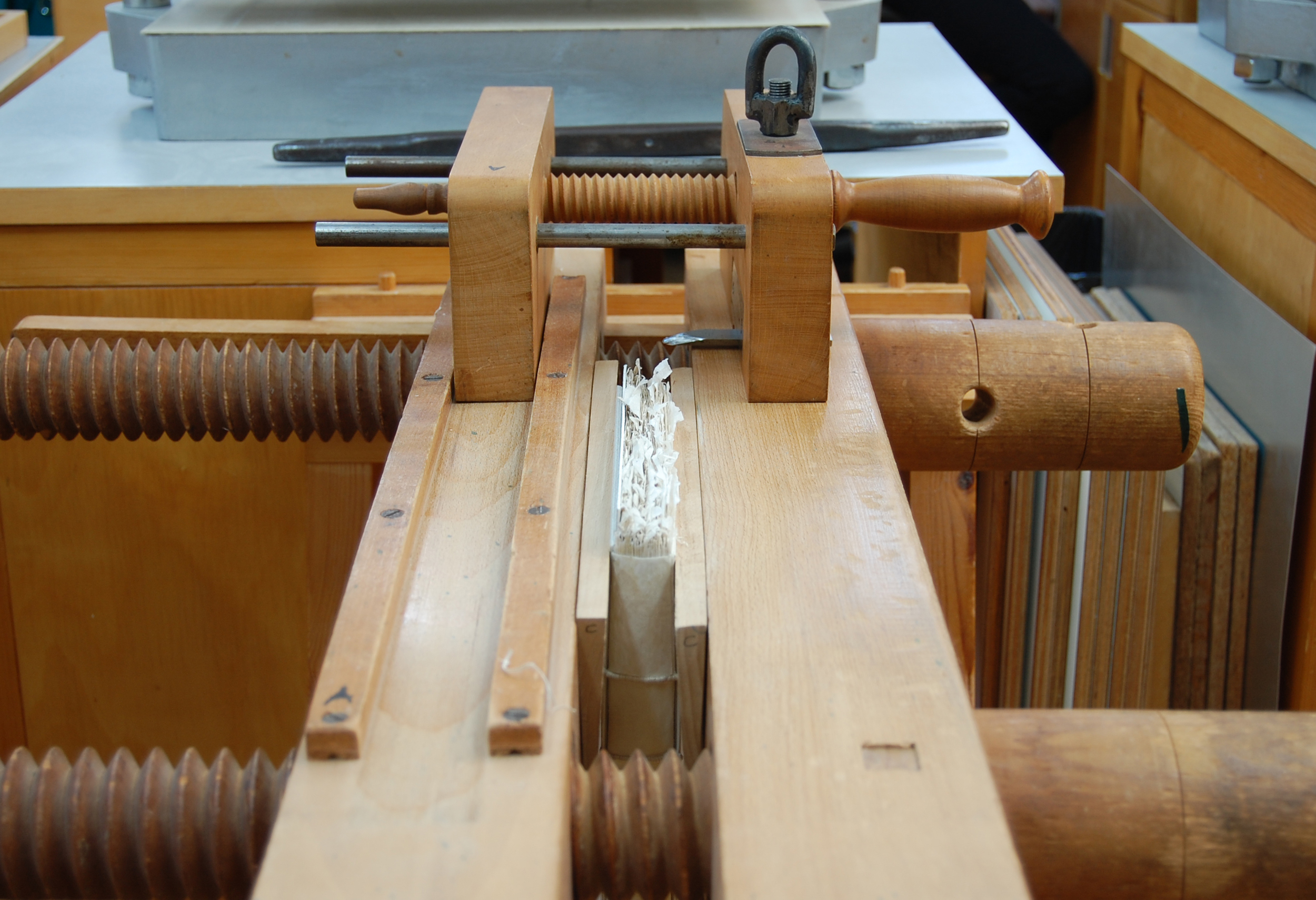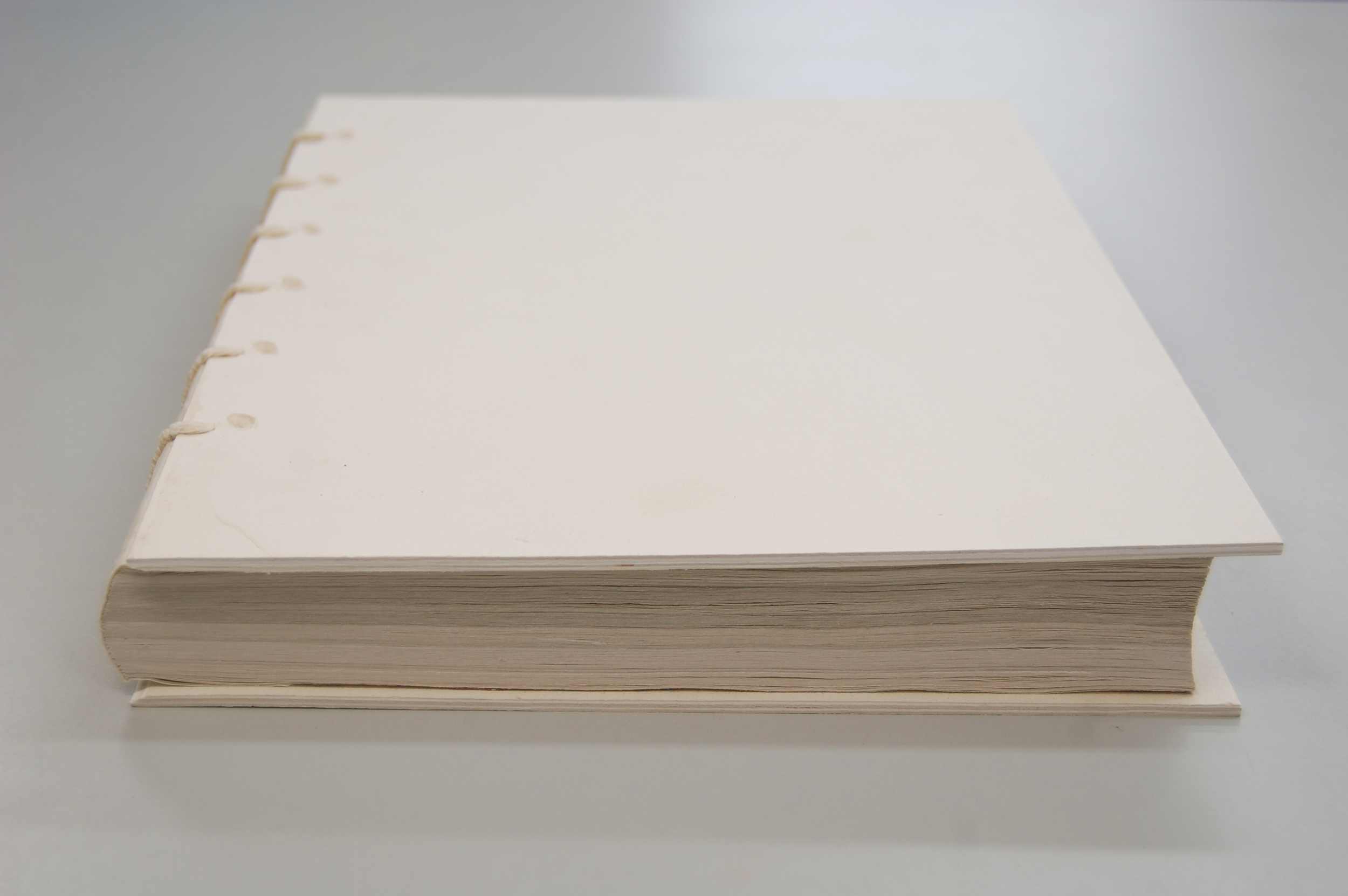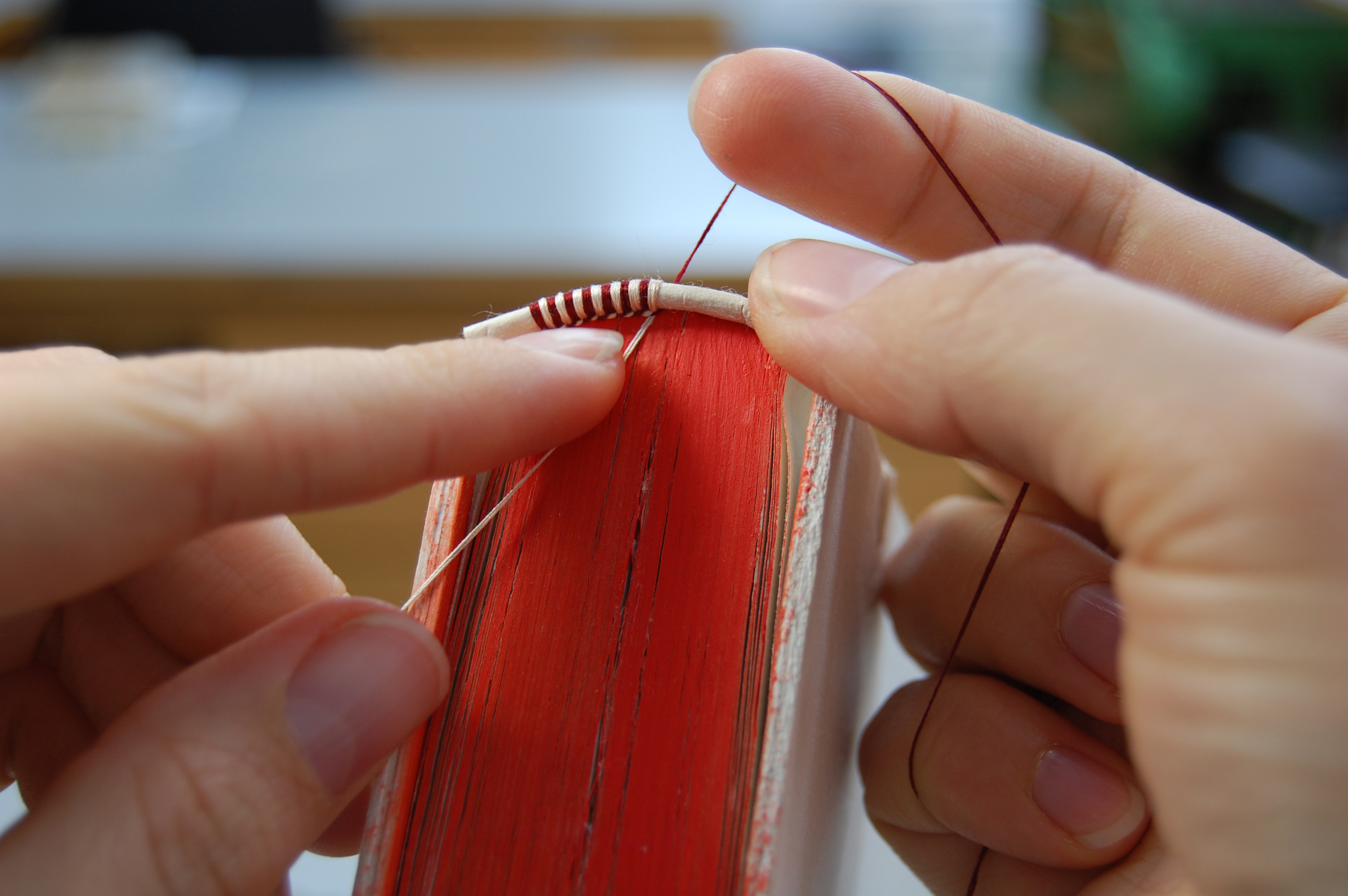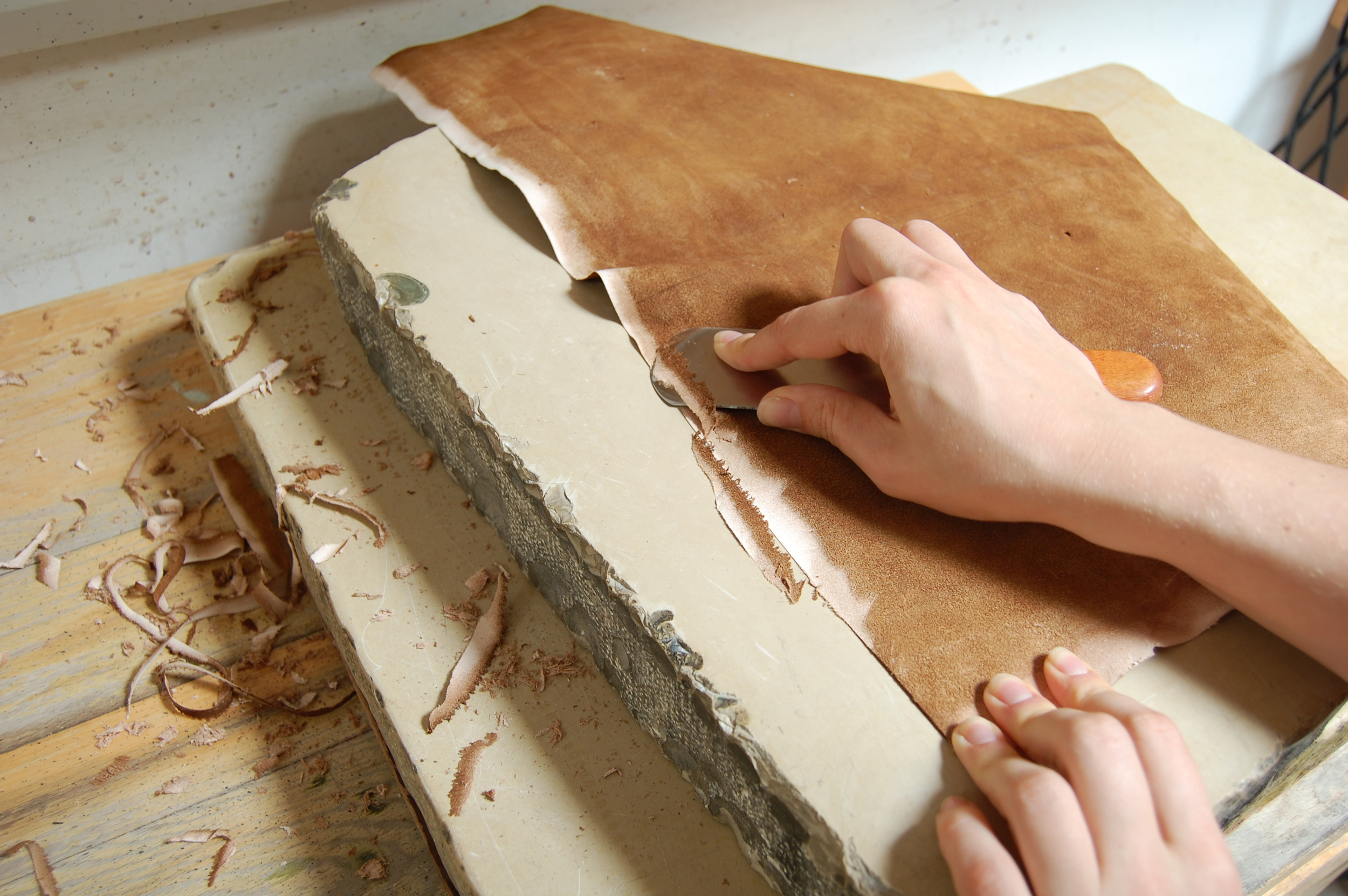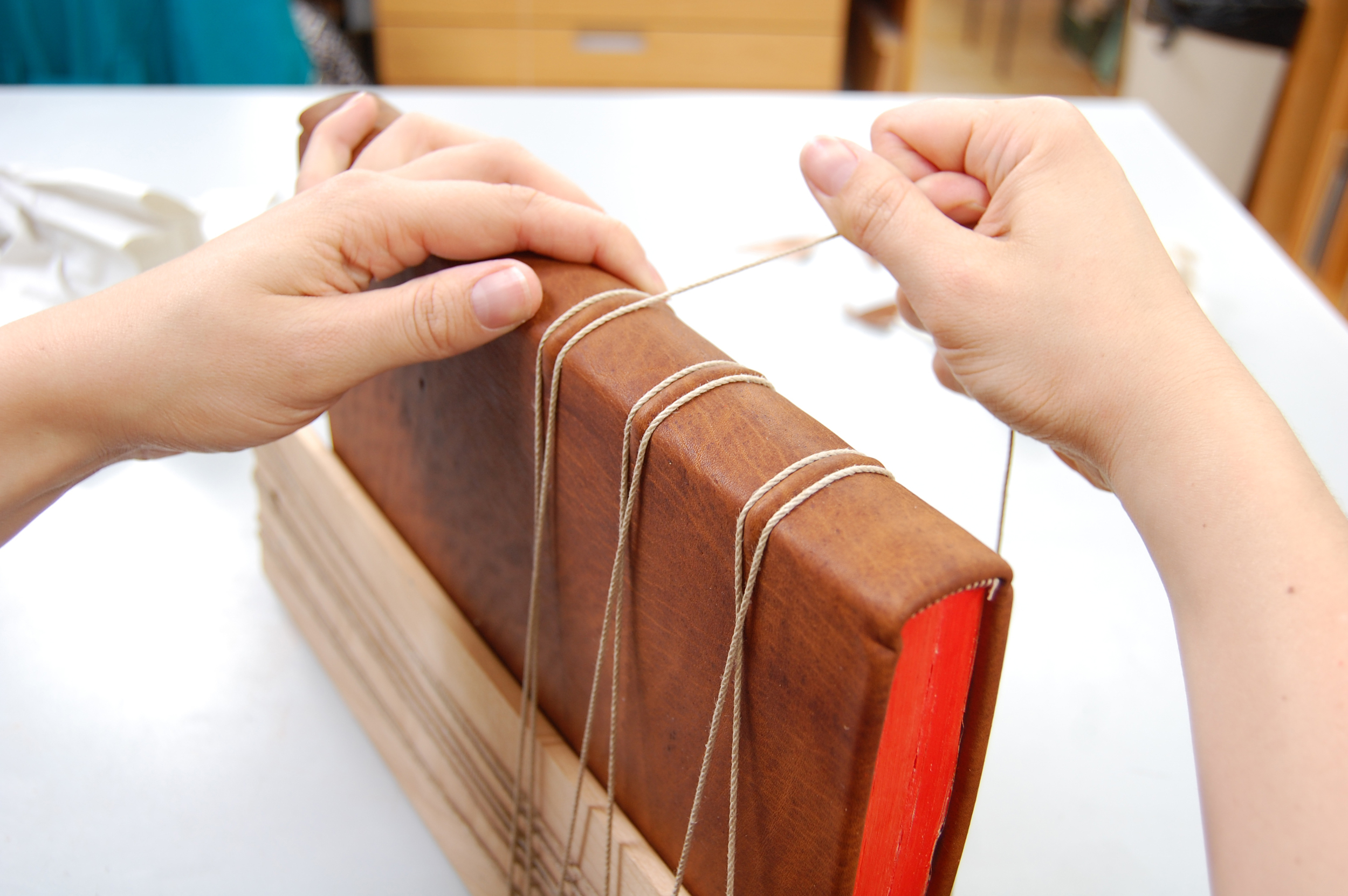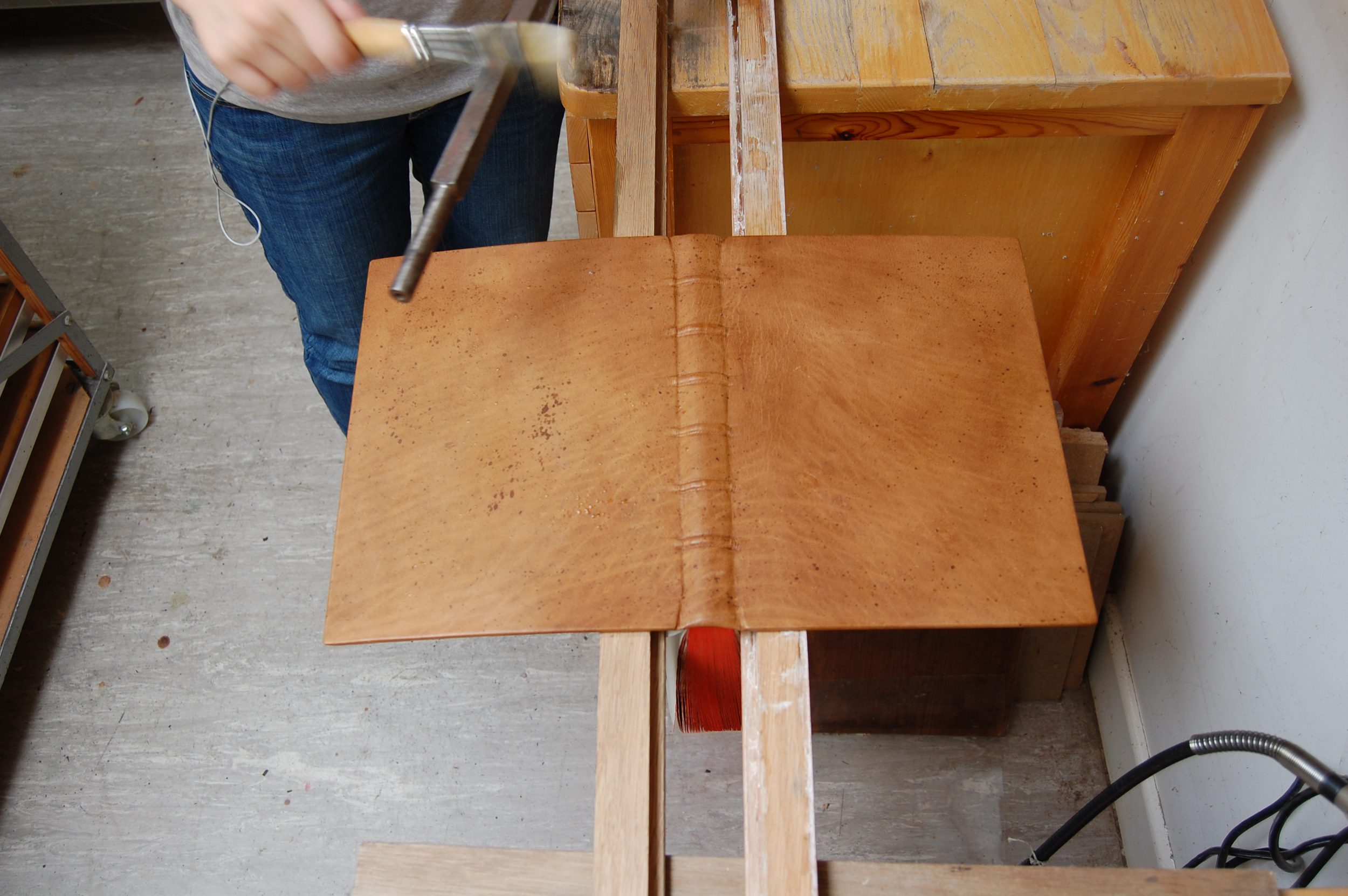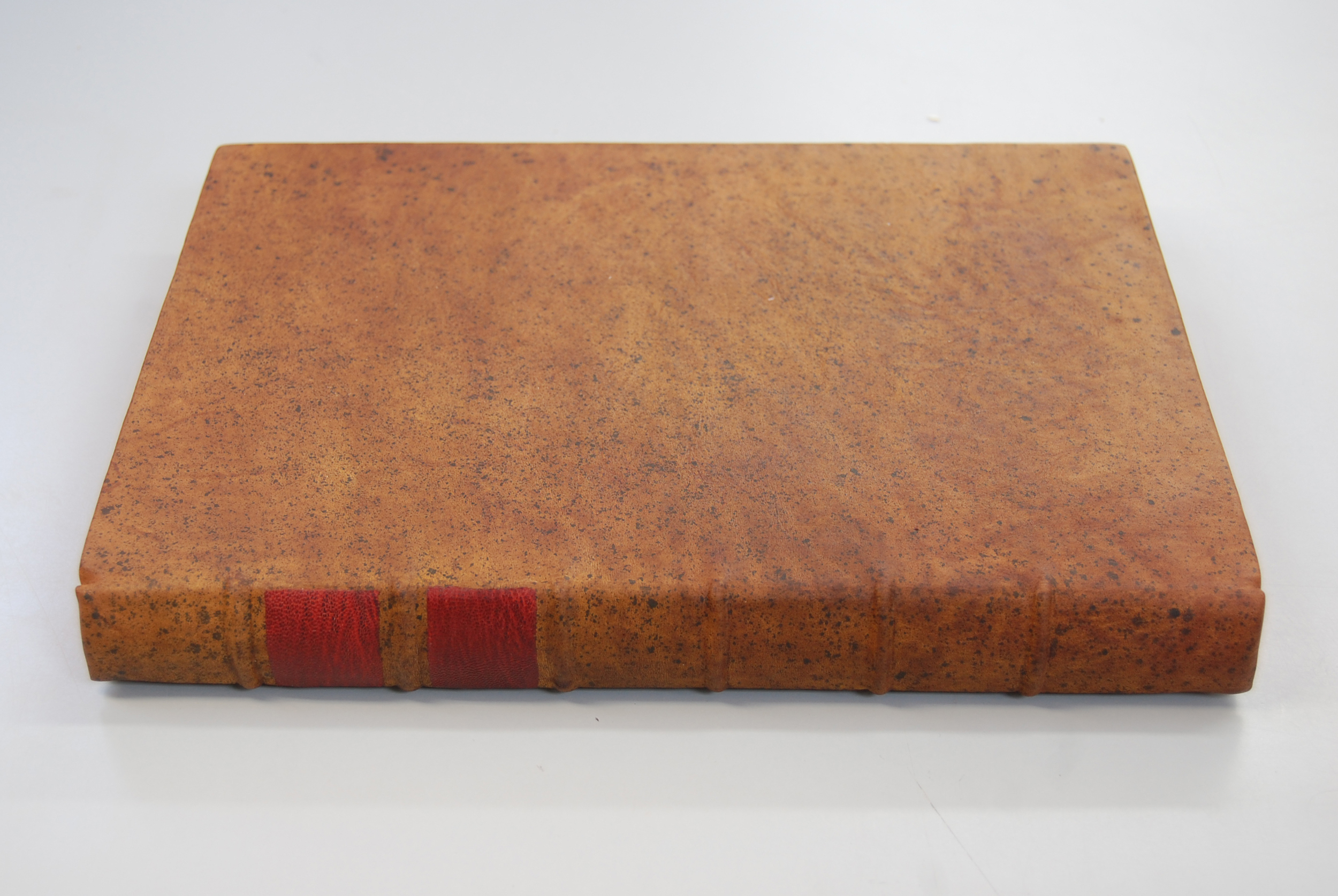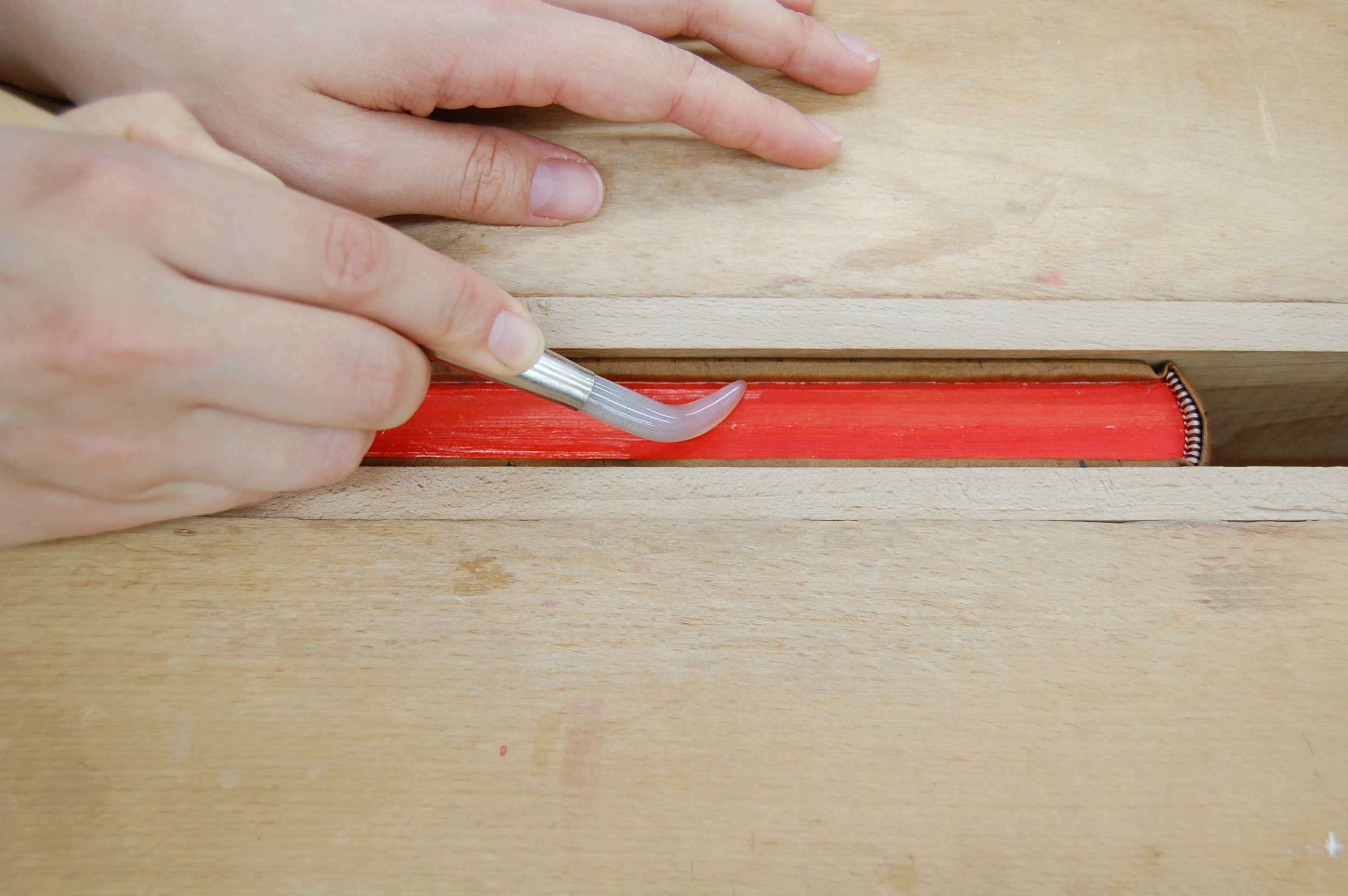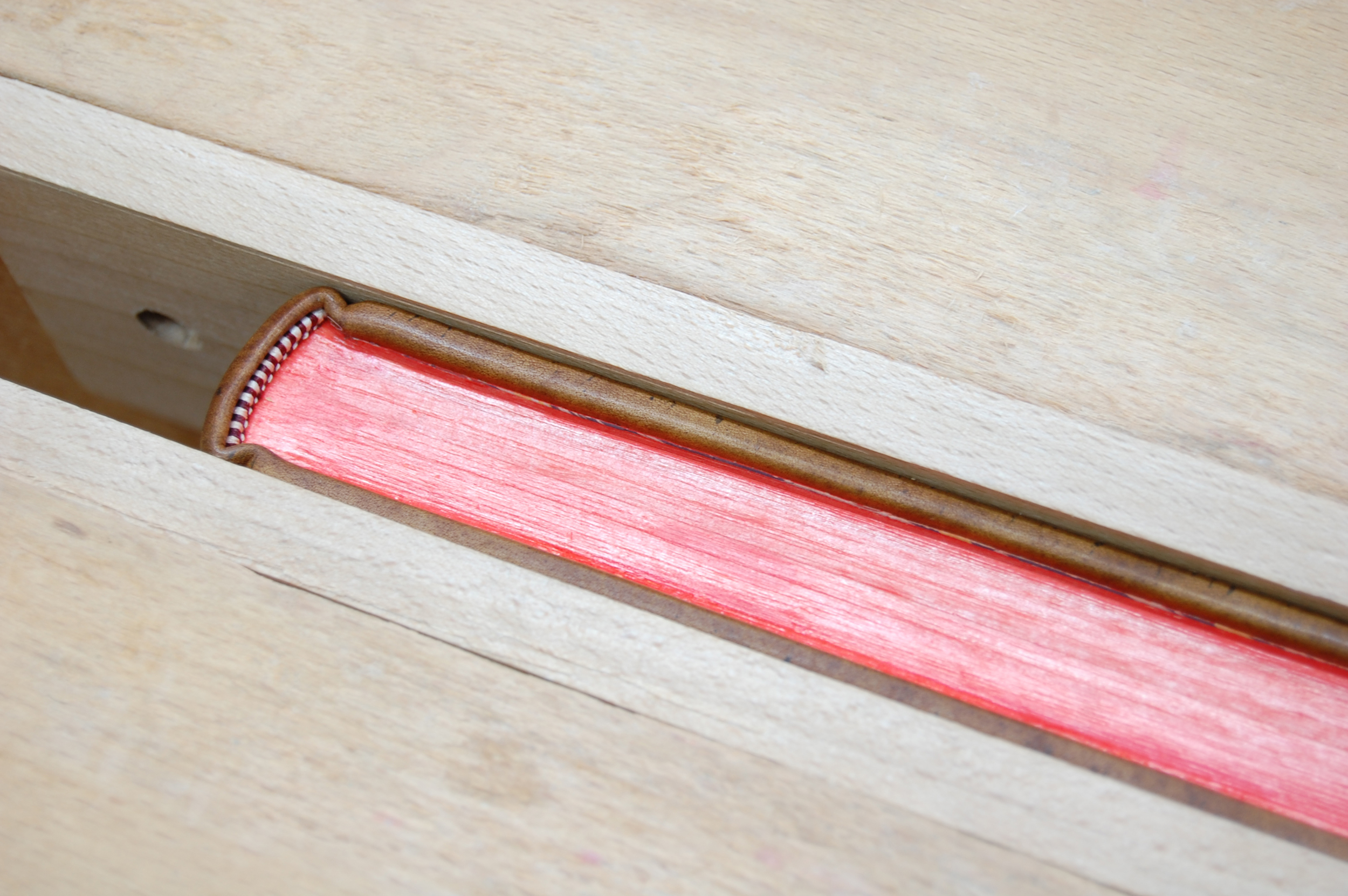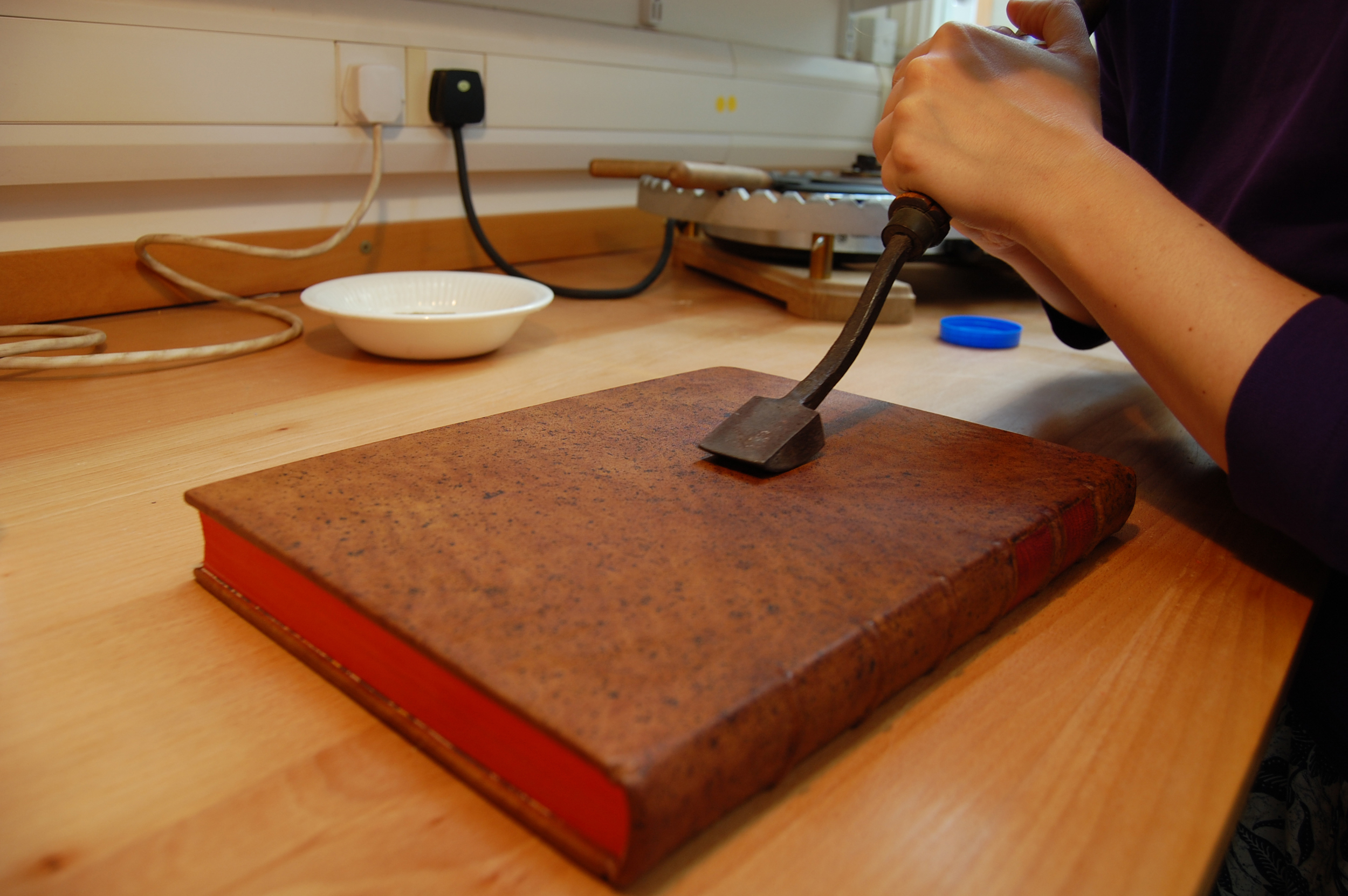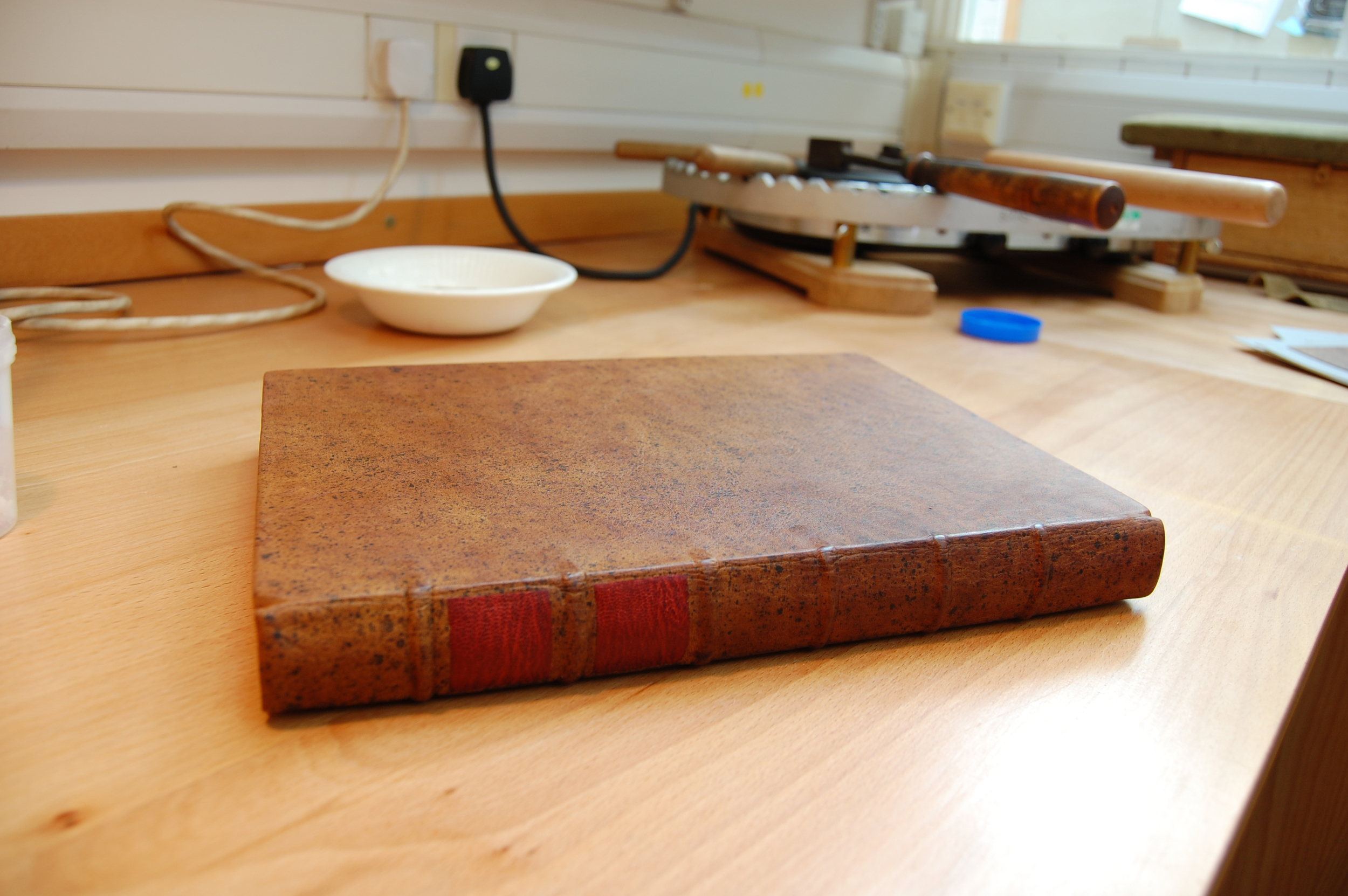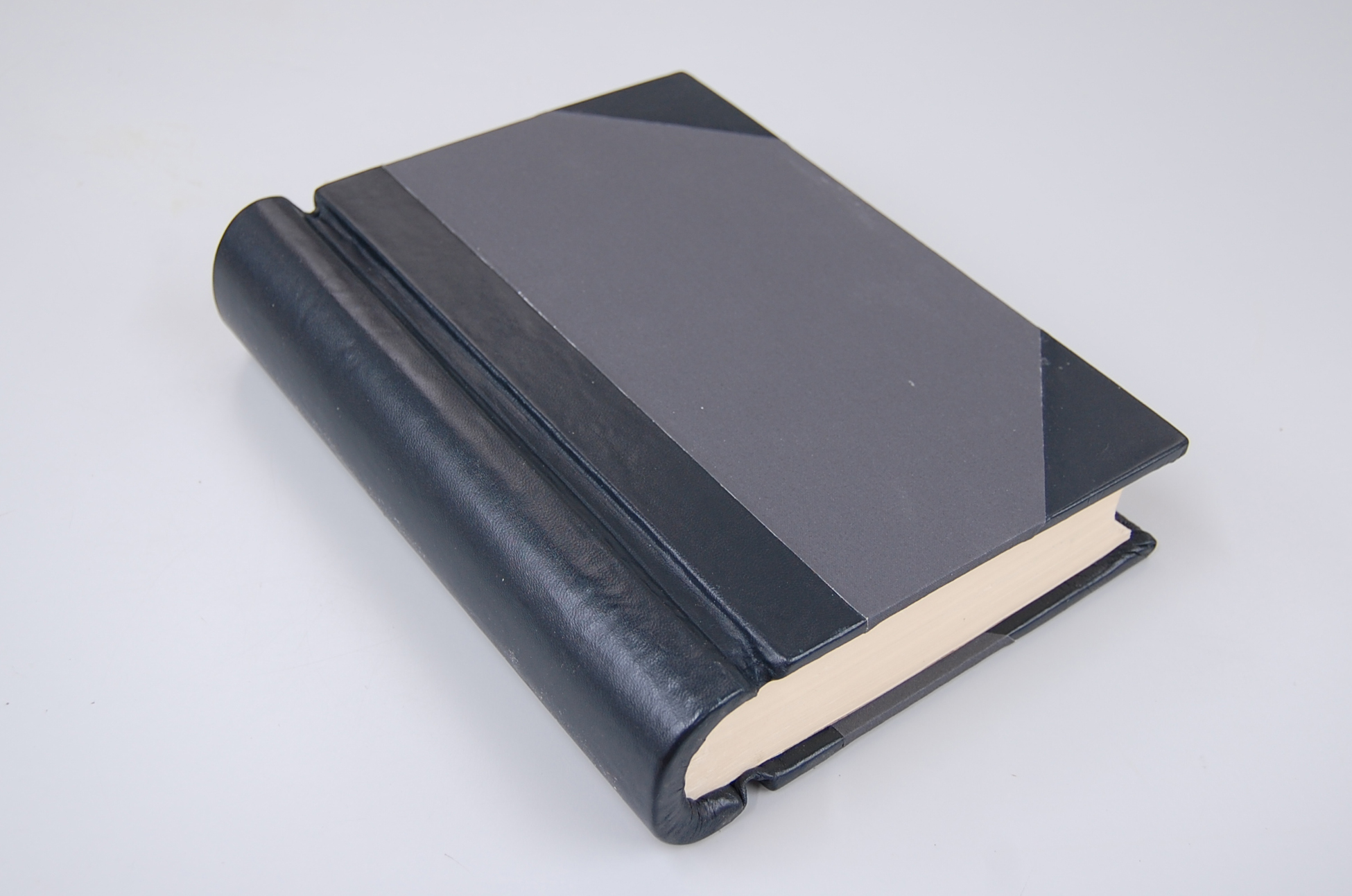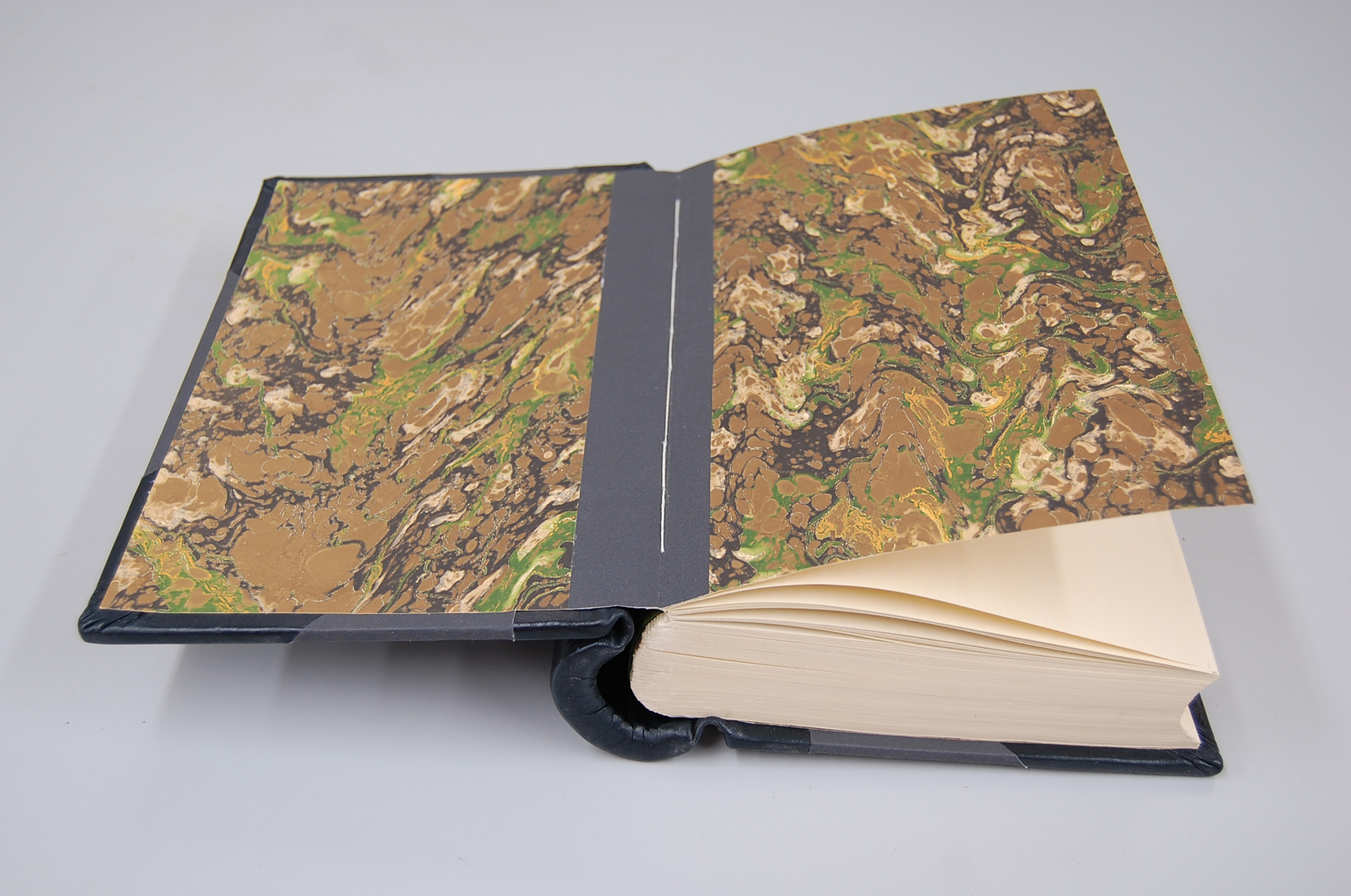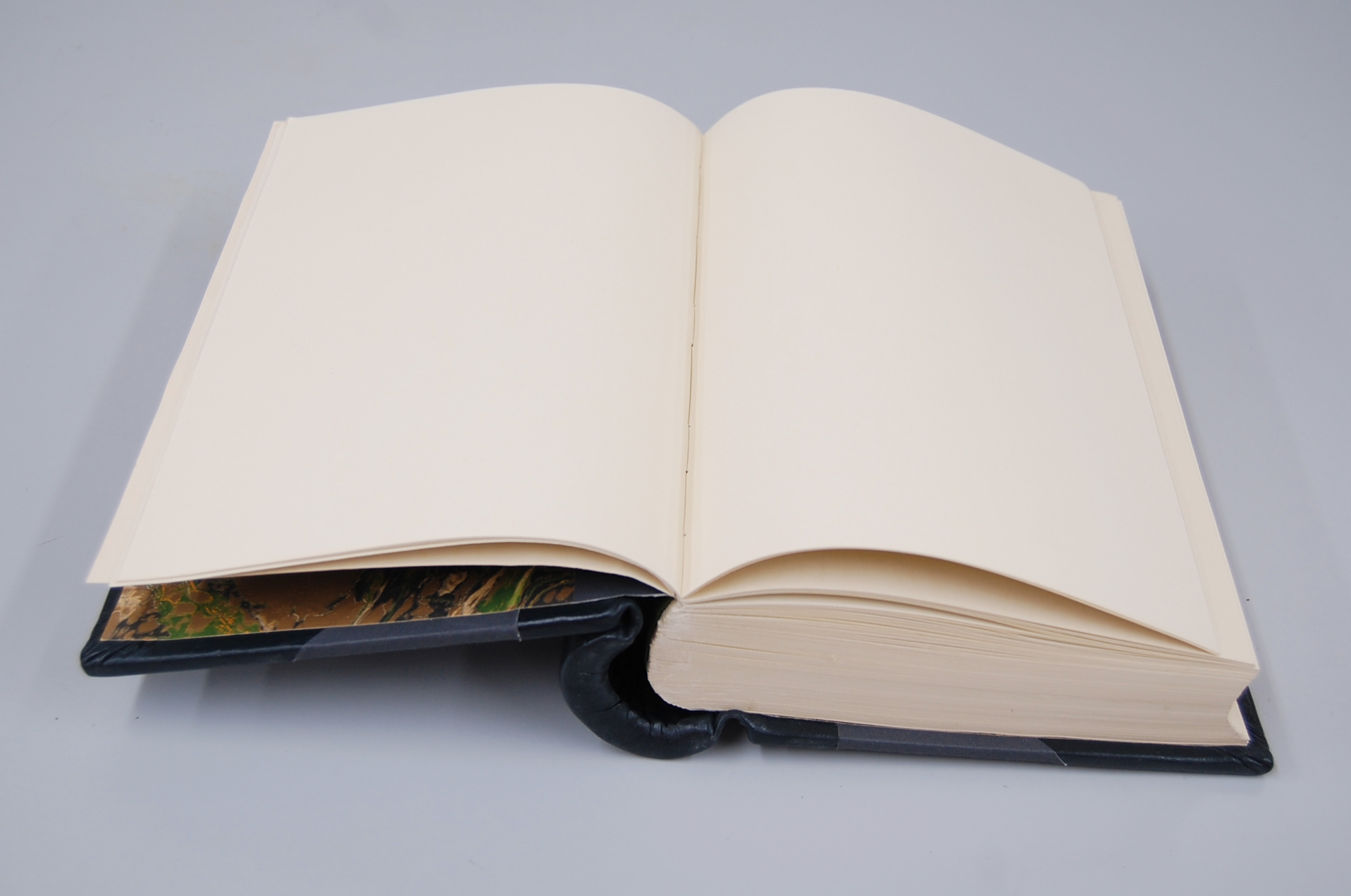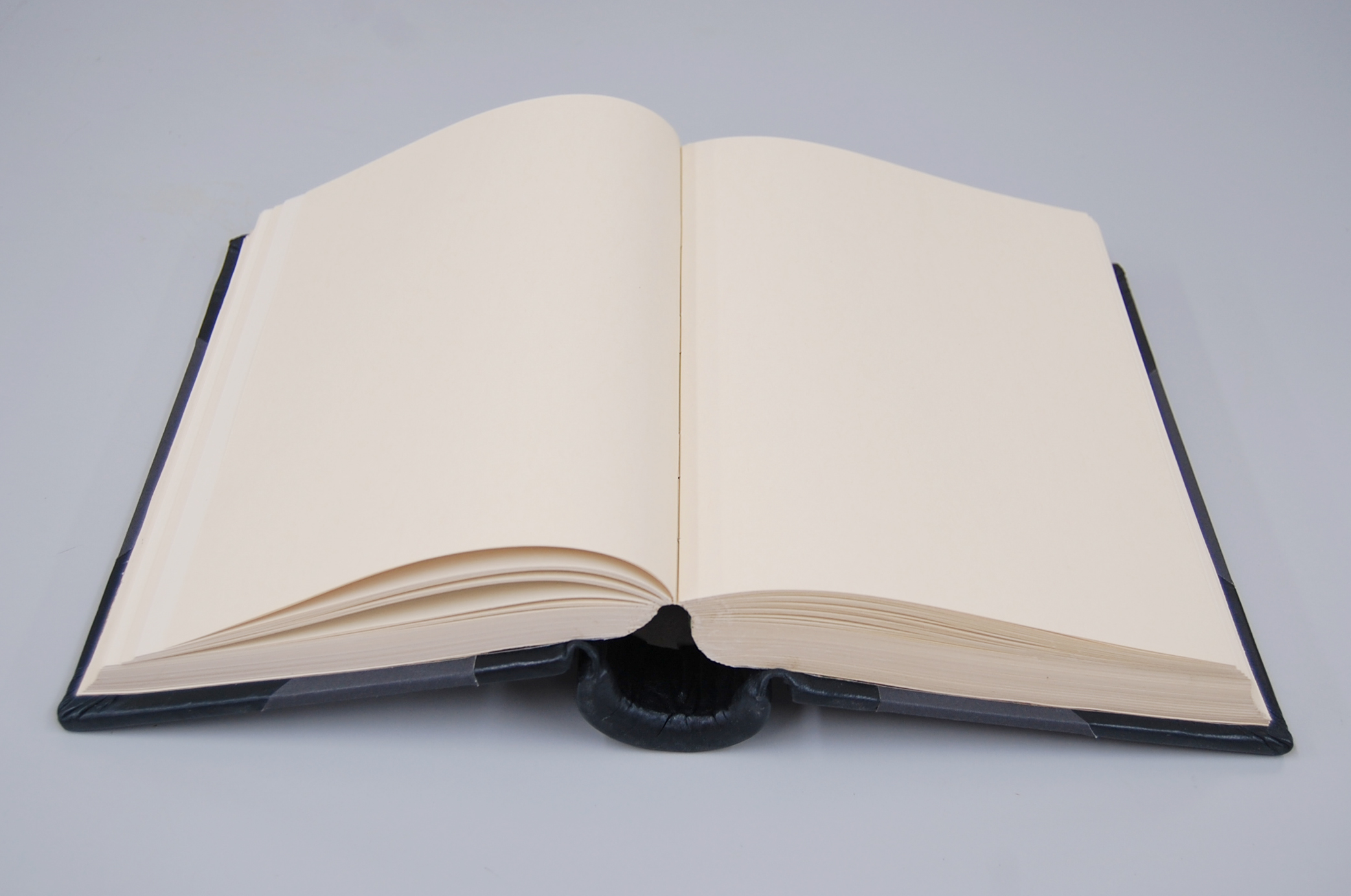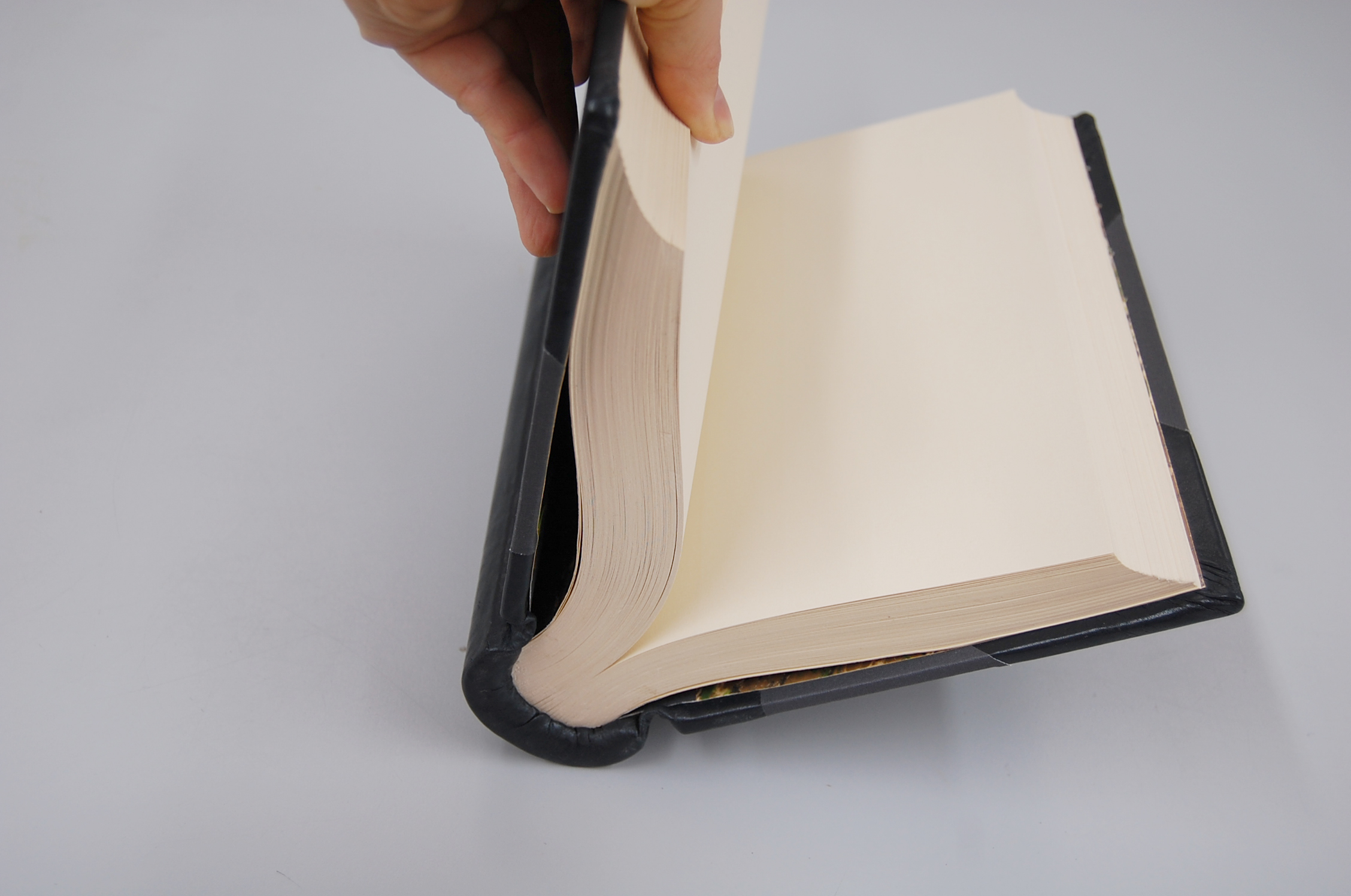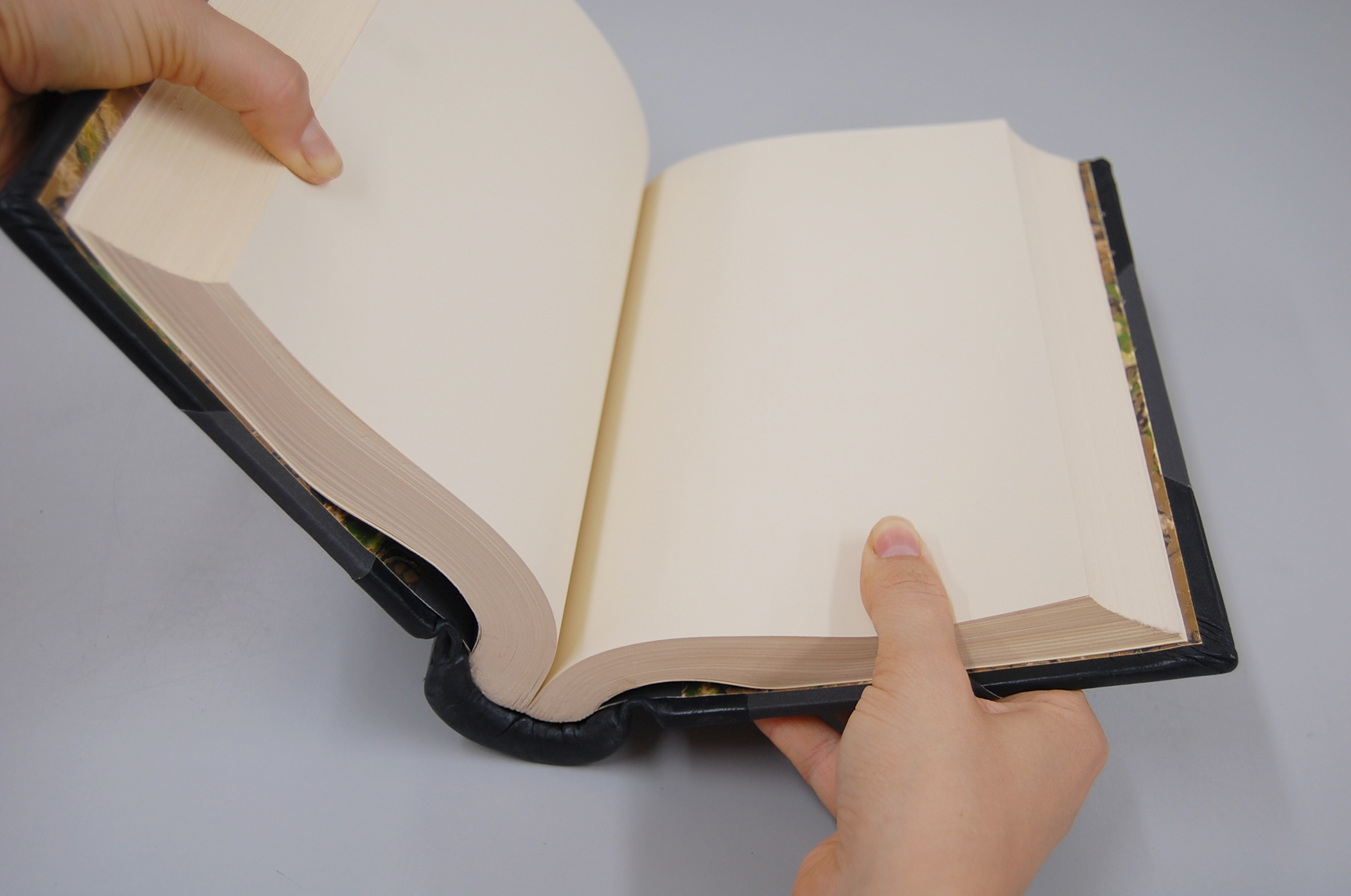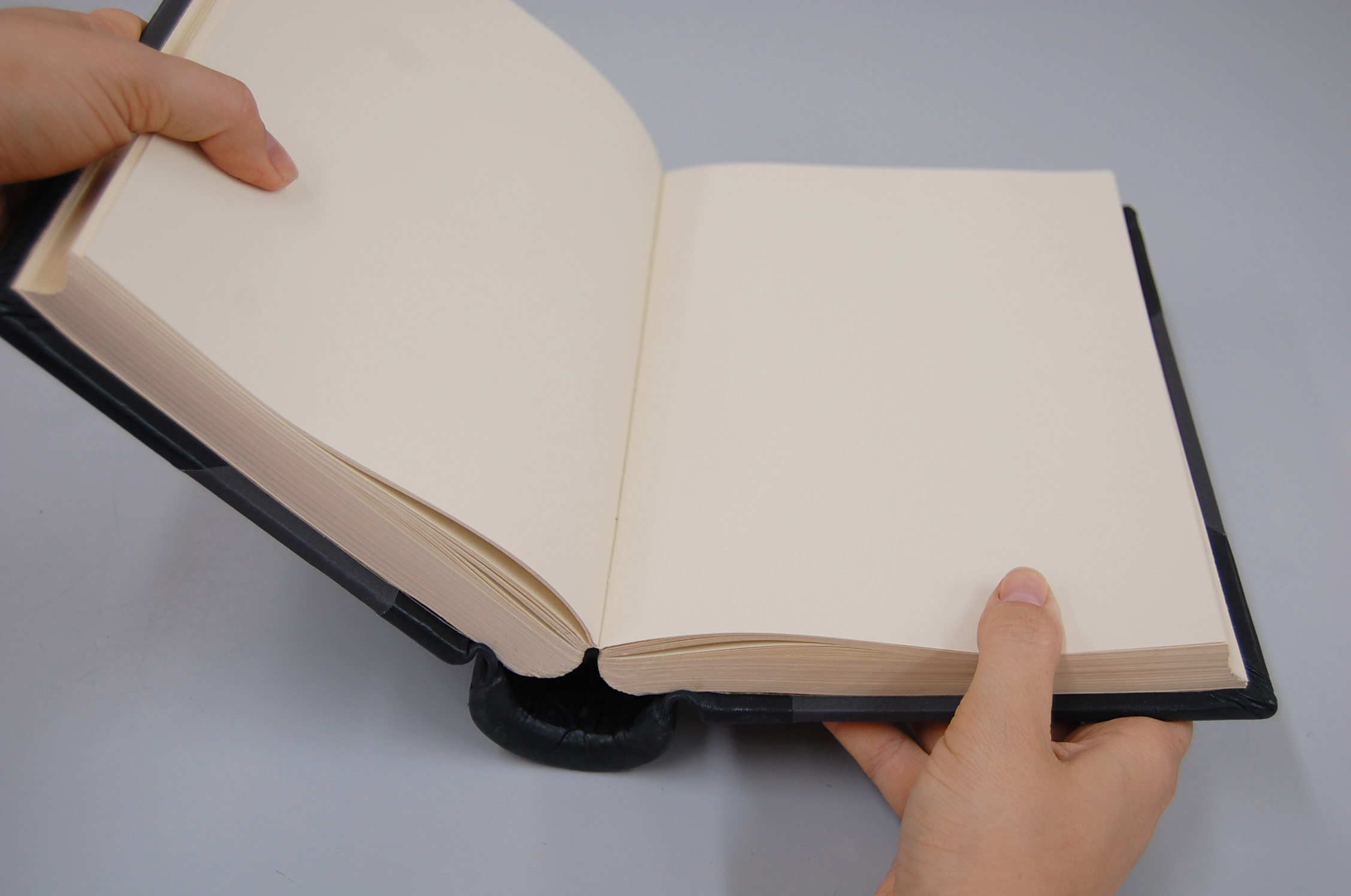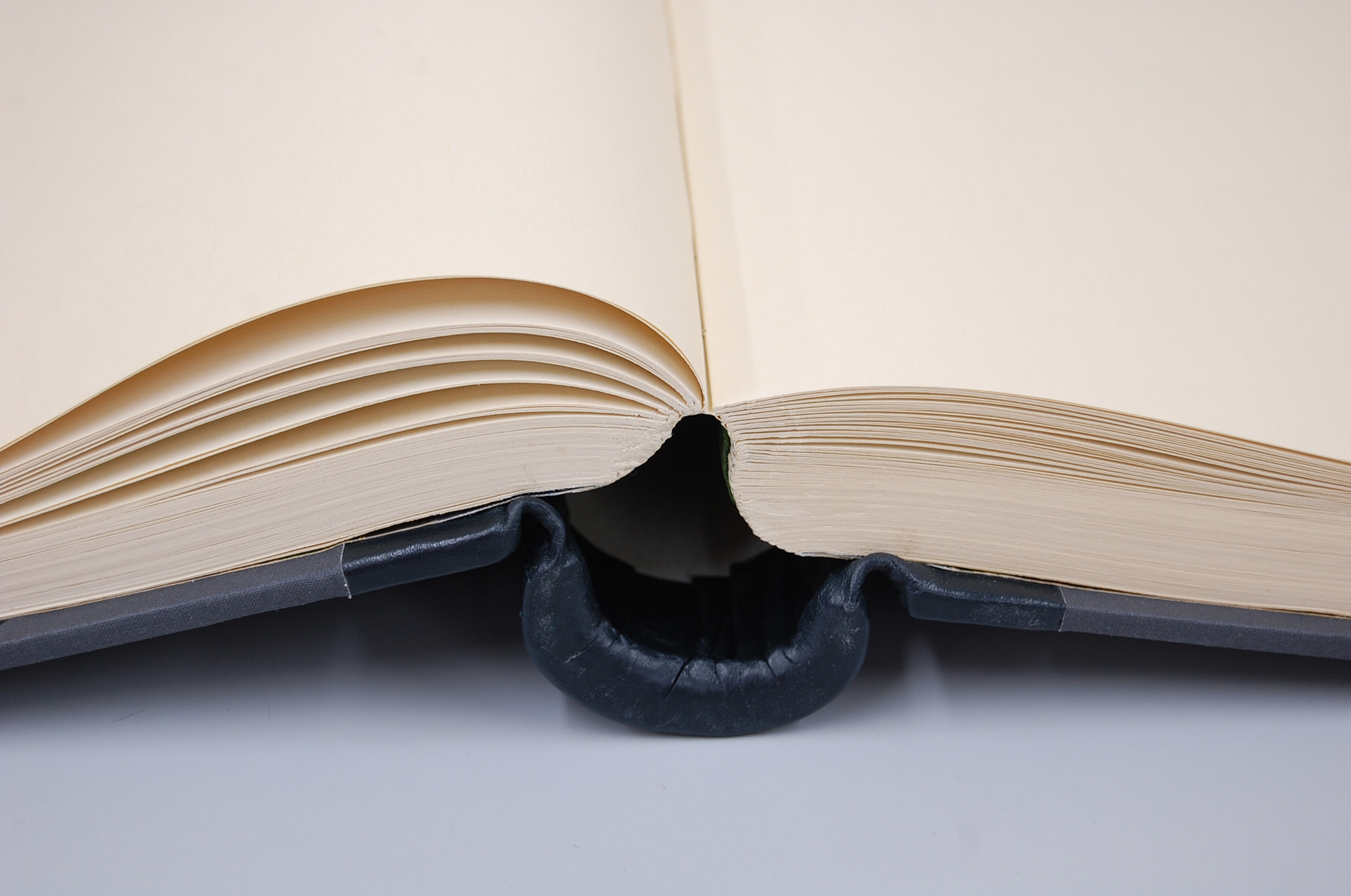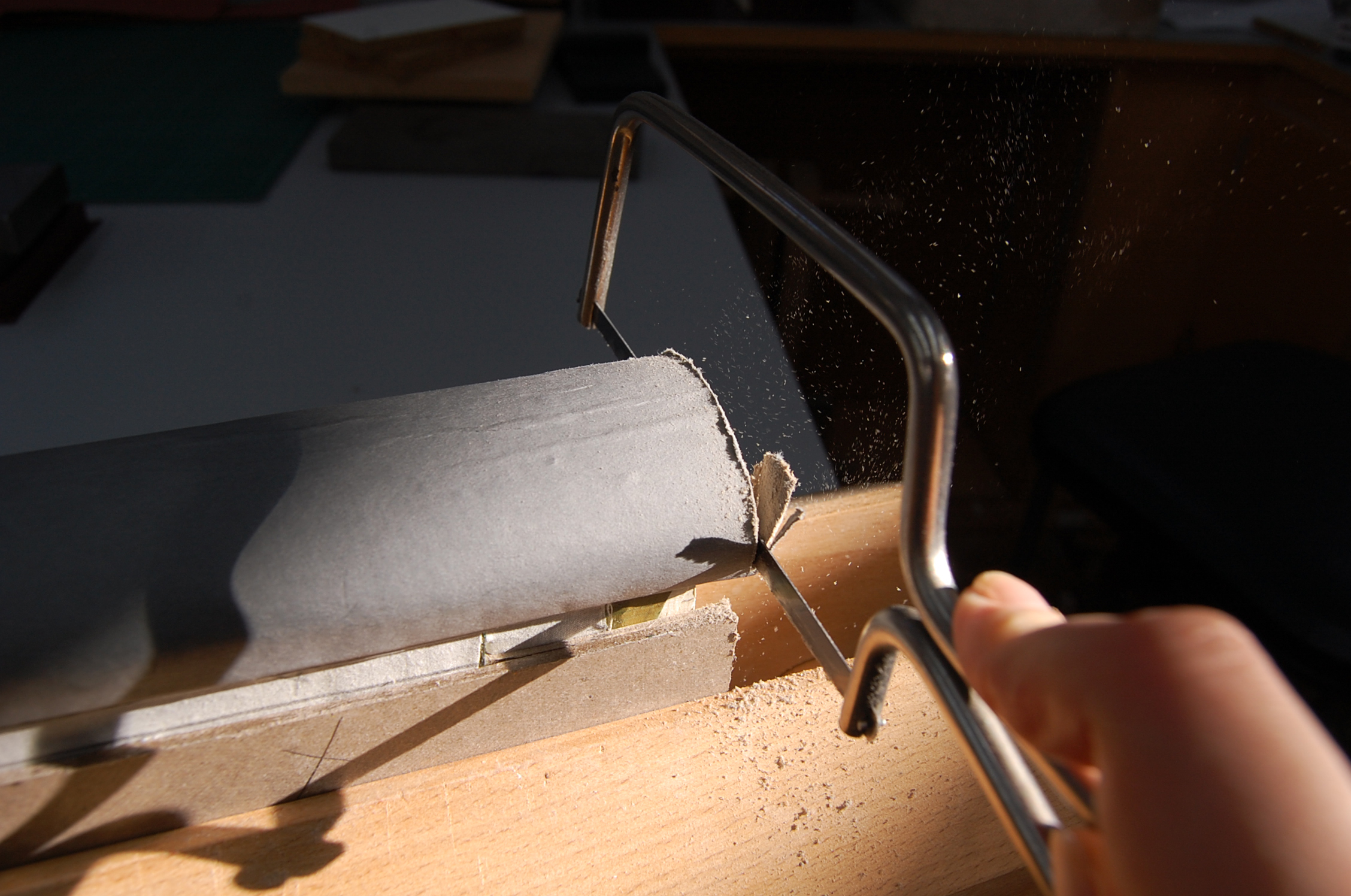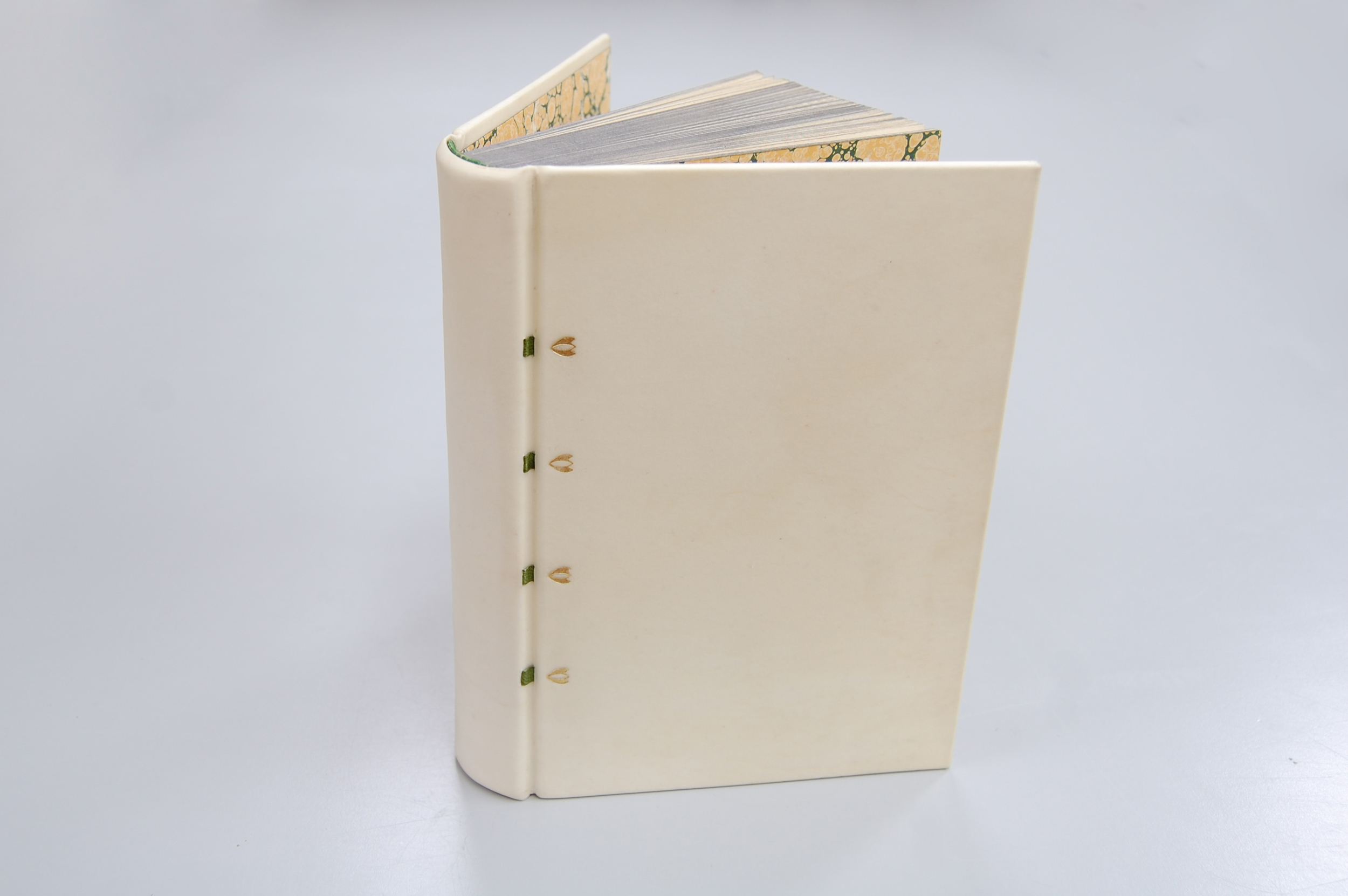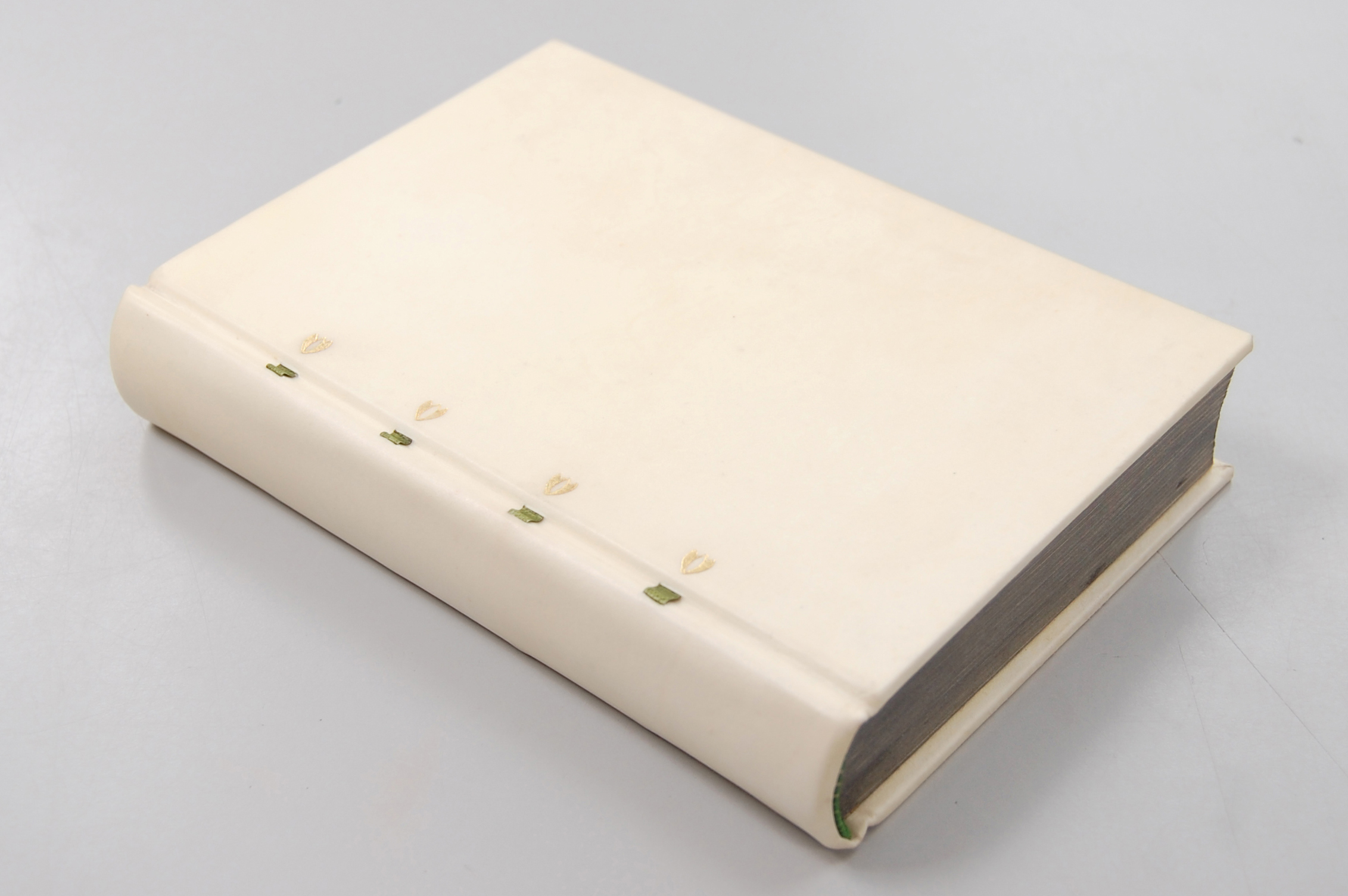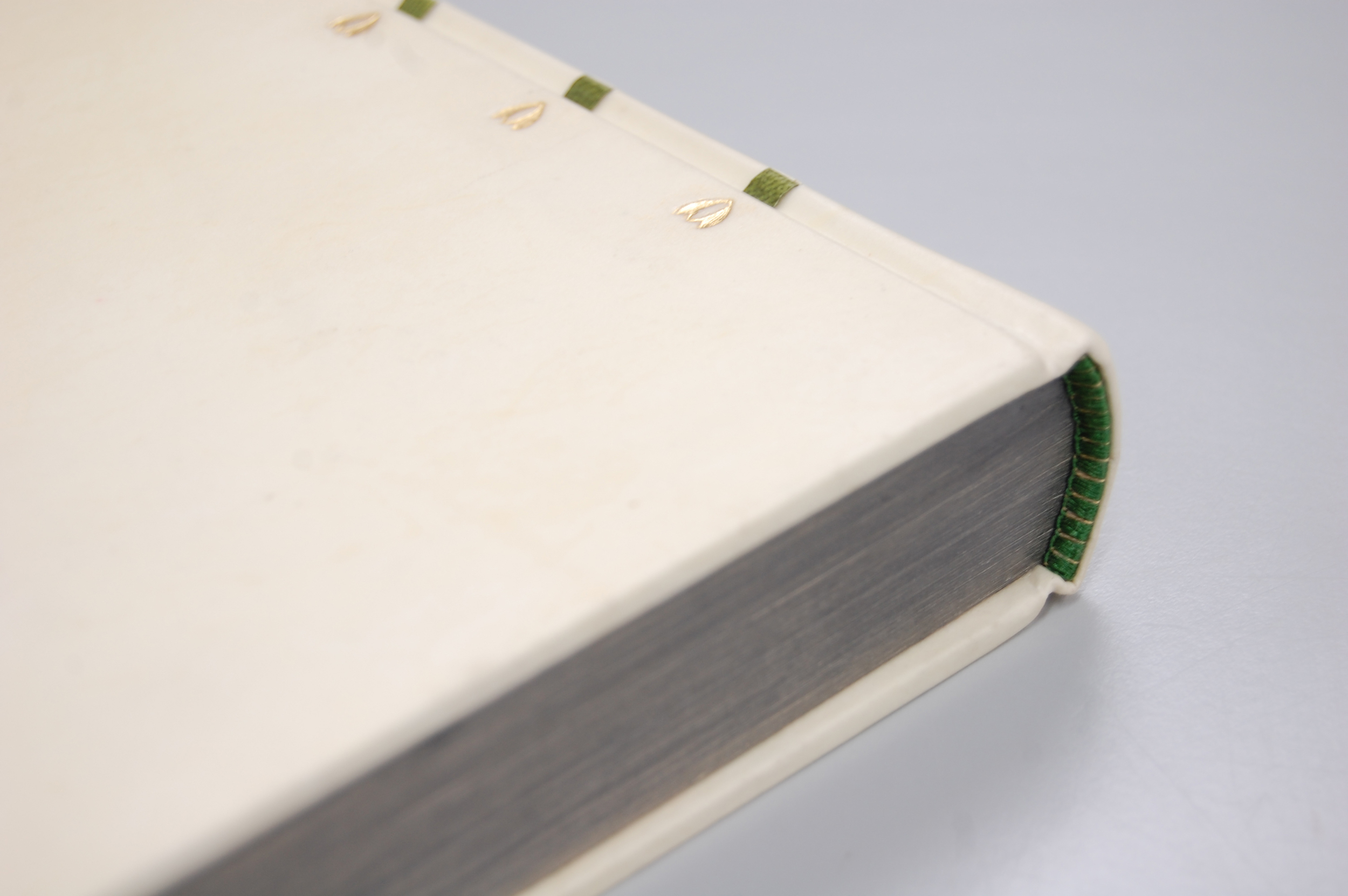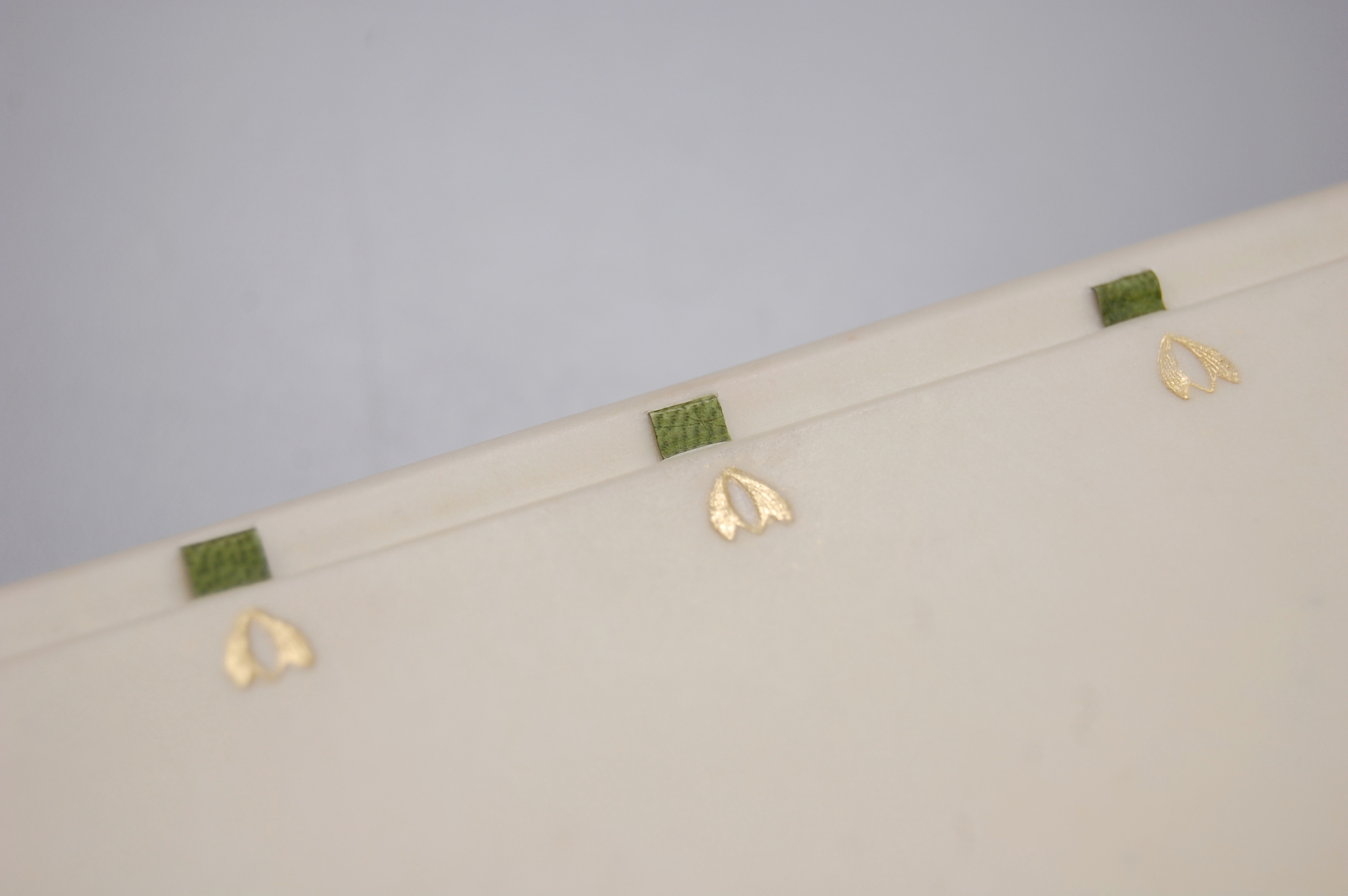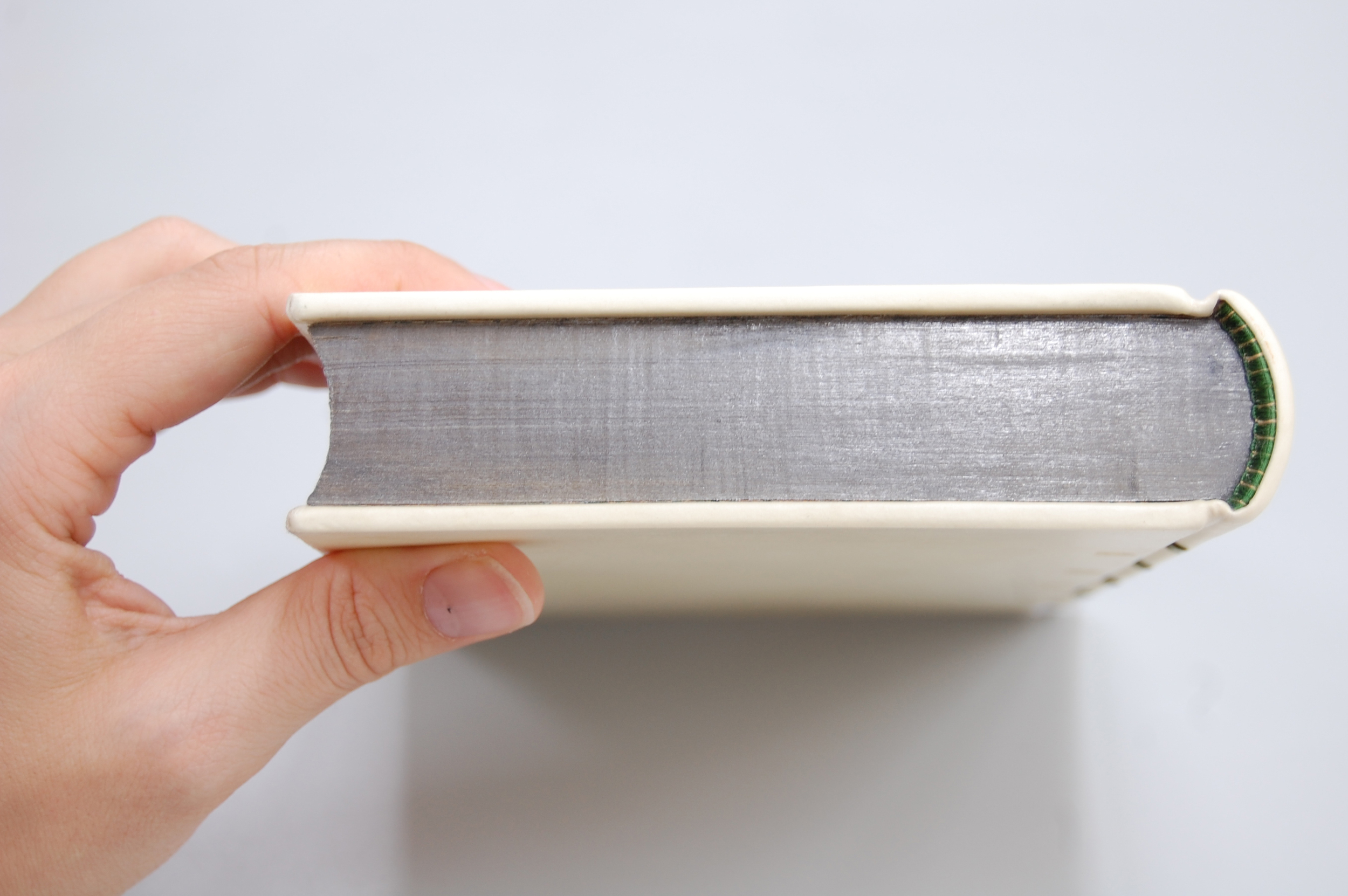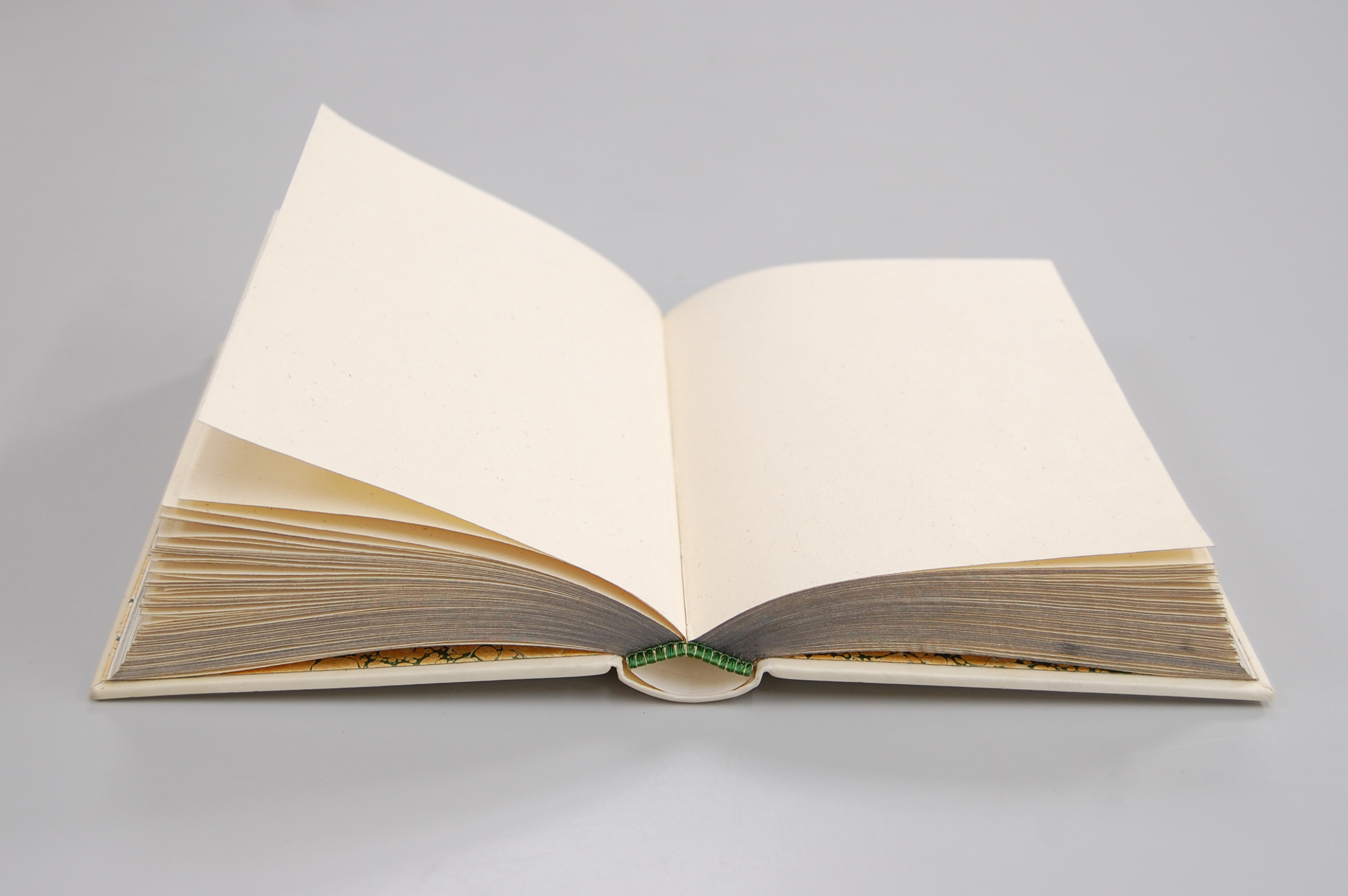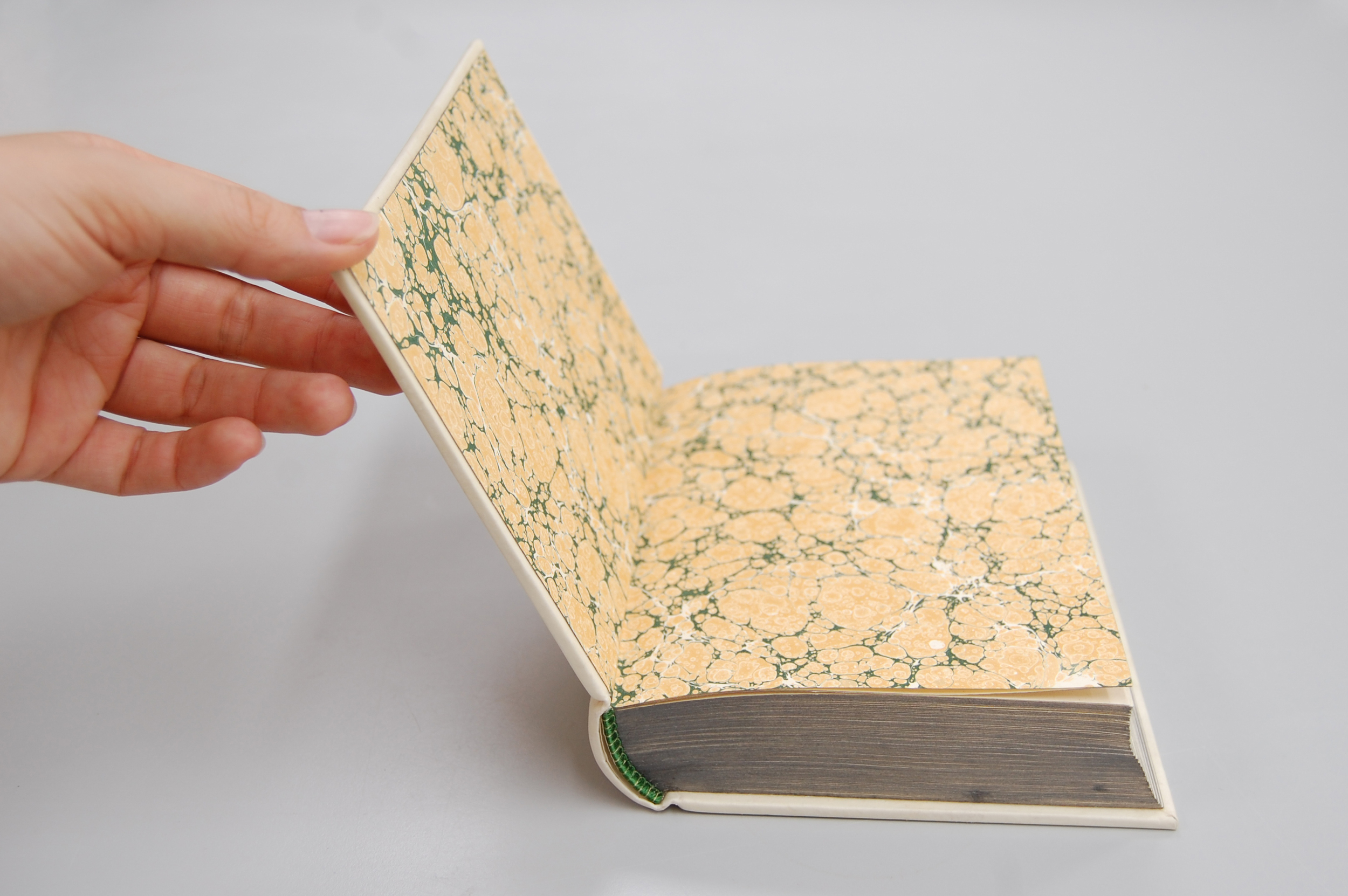bookbinding & Finishing
We make bespoke bindings in a range of styles for both printed and blank books. We can cover in leather, parchment, cloth, and paper, to make something special exactly to your specification. We can also title and decorate it in gold.
case studies
Private client
Thesis binding
Below is a PhD thesis printed on A3 paper by our favourite printers, Furnival Press, folded up in A4 sections and sewn on raised cords laced into the boards with a goat leather spine, cloth sides, and vellum tips (just the very small outer corners of the boards). We titled the spine with handle letters in gold leaf, and tooled lines along the border of the leather/vellum and cloth, with a few delicate blind tooled lines at the very top and bottom of the spine. We’ve done a few of these for doctoral students over the years and love this way of celebrating the end of such a long piece of work.
private client
Sketchbook
This sketchbook was commissioned by an artist, who gave us free rein to make it however we liked. She supplied handmade paper for the textblock that she had made herself, and to match the tone of the off-white paper we chose this 20th-century block-printed paper for the cover. We sewed the book onto vellum supports and dyed both the vellum and the sewing thread a peach colour to match the decorative paper. The vellum laces through slits in the cover, contributing to the aesthetic value but also the strength of the board attachment.
Private project
Herbarium
Inspired by the Edwards of Halifax transparent vellum bindings, the case for this book was covered in paper first, then pressed flowers & leaves were pasted down, then transparent vellum covered over that. The title was tooled in gold leaf with handle letters, and the green dyed vellum sewing supports were laced through the case. Inside, the textblock is made of handmade paper, head edge coloured with gamboge & Prussian blue, and it is slowly being filled with pressed flower specimens.
The box was made with handmade paper, flower, and vellum inlays inside the trays and for the spine labels, with silk ribbon ties.
private client
Heart binding
This binding was made as a wedding present—half a heart when closed, a full heart when open, inspired by medieval/renaissance heart-shaped books. It is full goat leather with raised cords, graphite edges and hand-sewn endbands. The paper inside is handmade Griffin Mill paper.
private client
Cloth Rebindings
Over a year and a half we’ve been working on a library of English first editions burned in a fire. These are examples of books that were too damaged to save, so were rebound in simple cloth case bindings, with gold-foil-blocked paper labels.
bookbinding models
Paper conservation bindings
Cover is constructed in handmade white cotton rag paper, with endpapers reinforced in aerocotton. The cover is laced on by the slips with optional tacketing; cover and endpapers can be easily removed from the textblock; there is no adhesive except for the paste holding on the spine lining. This is a great option for historic books that have lost their cover (or never had one) because it offers protection in a completely reversible way, with materials that are not the most expensive option, and it is clearly distinguishable as a conservation binding rather than anything contemporary.
Single- and several-section bindings with rounded spines
This is a construction developed to solve the problem of wanting a rounded spine on a very thin book, which usually results in a bookbinder crushing the sections' folds to force them in shape. In this binding, the gatherings are sewn to a piece of card, and a round spine—aesthetically pleasing on the shelf, and can be titled—is built onto the card. This was a structure developed by Abigail and published in the Society of Bookbinders journal.
18th-century French model
Made according to the descriptions in Diderot's Encyclopédie, one of the few pre-19th century Western texts to describe the steps of making a book. A forthcoming article will describe the unique aspects of both the binding and the sometimes misleading encyclopedia descriptions.
Abigail teaches a workshop on this subject and has published an article about it, as well as contributing well over a hundred translations to the Collaborative Translation Project.
16th-century French model
Made at the Montefiascone Conservation Project after a royal French binding of an Aldine Press volume. It's a small book in wooden boards, with Greek-style endbands, four clasps, and blocking on upper and lower boards. Both boards would have had bosses in the original binding.
Read more about making the book and about the Monte experience on the blog.
English Springback
Typical account binding, with stiff spine piece and boards built onto the book in a way that it "springs" open, so that the leaves lie more or less flat for writing.
Full vellum over boards
With dyed parchment sewing supports, silk endbands, graphite edges, and marbled sides. Tooling in gilt next to the slips.
finishing
We also do tooling and blocking with gold leaf, gold foil, and coloured foils—on leather, paper, or parchment. We’re happy to put some gold letters on whatever you want (restaurant menus, fancy swing tags); it doesn’t have to be for a book!

